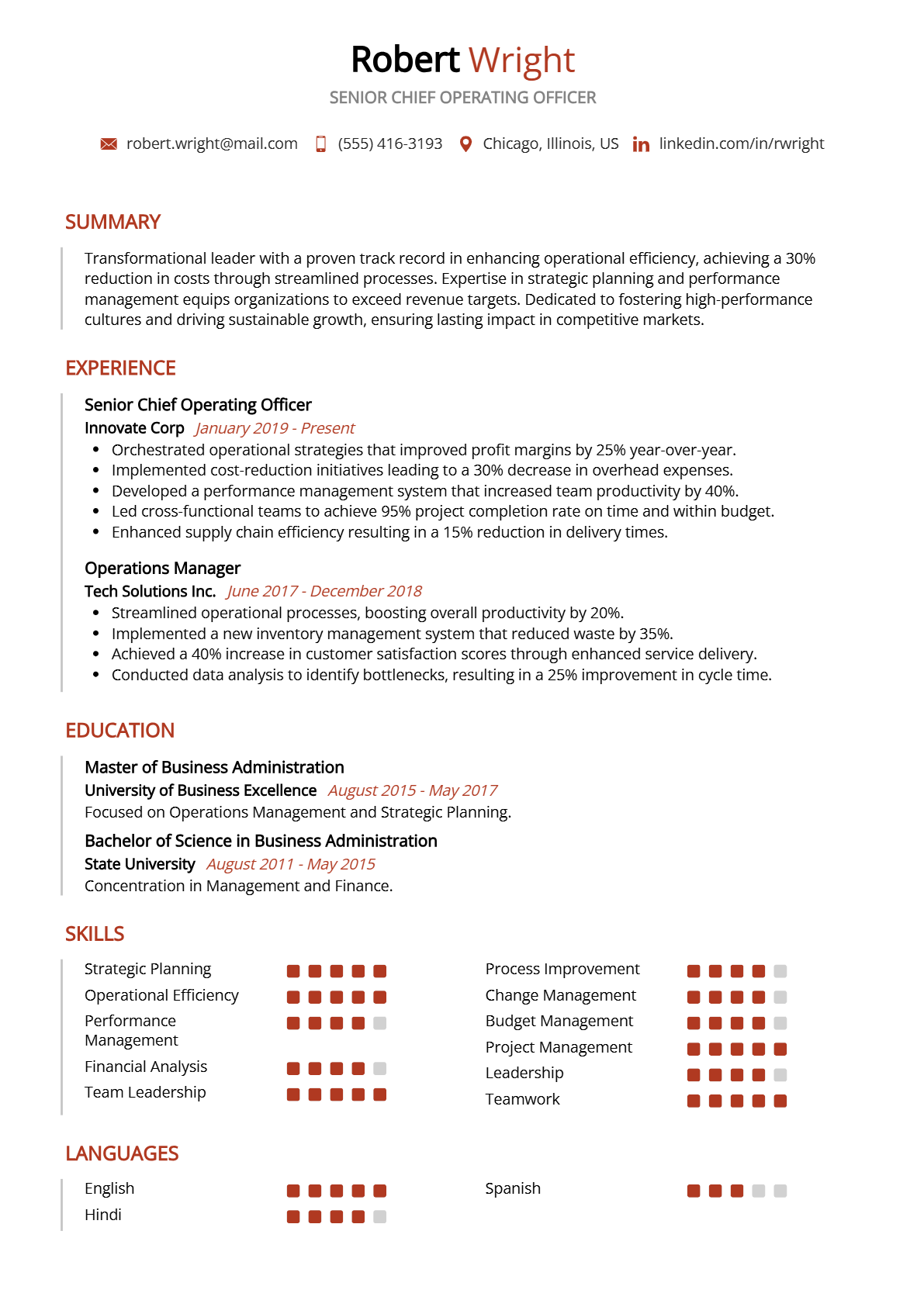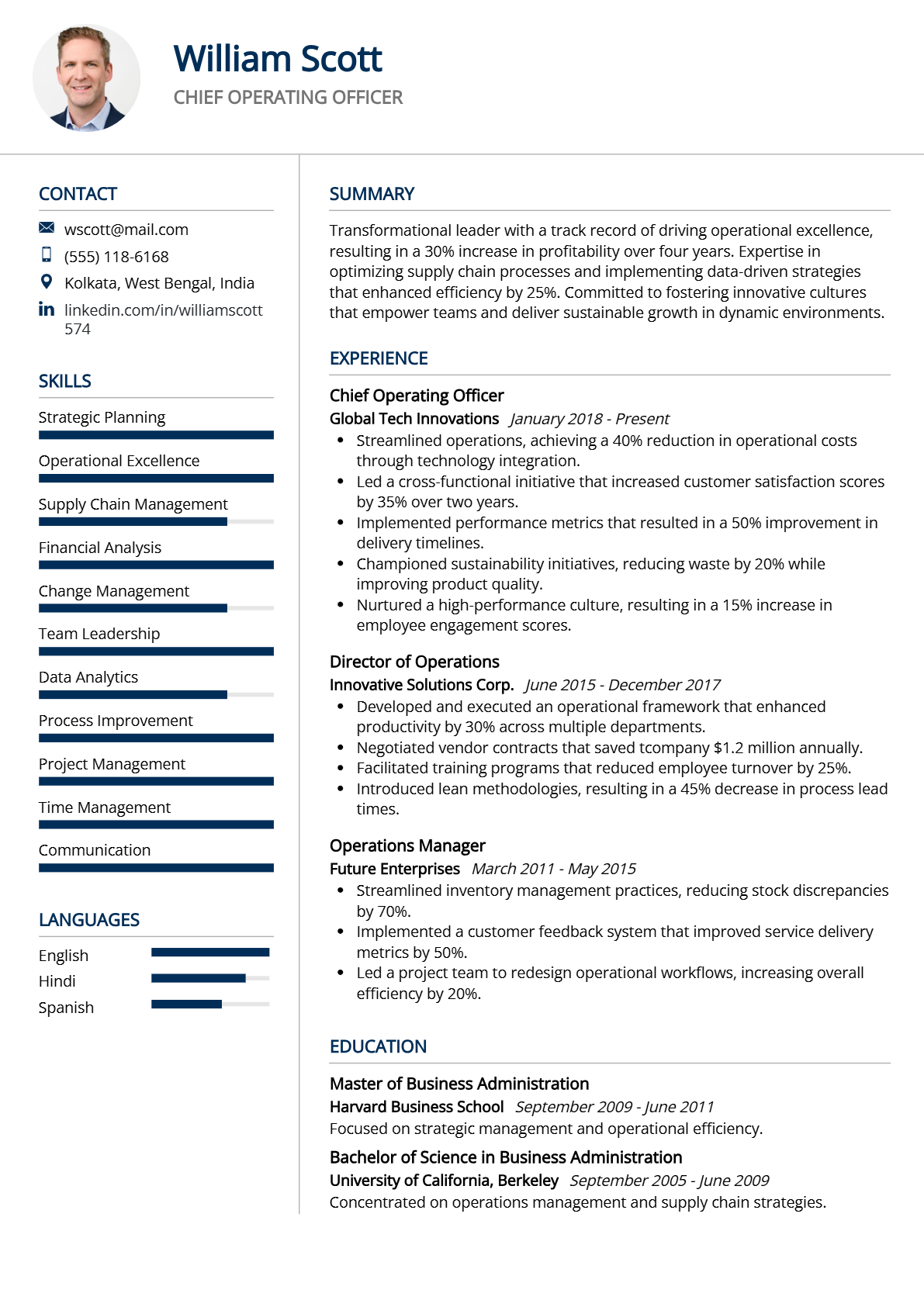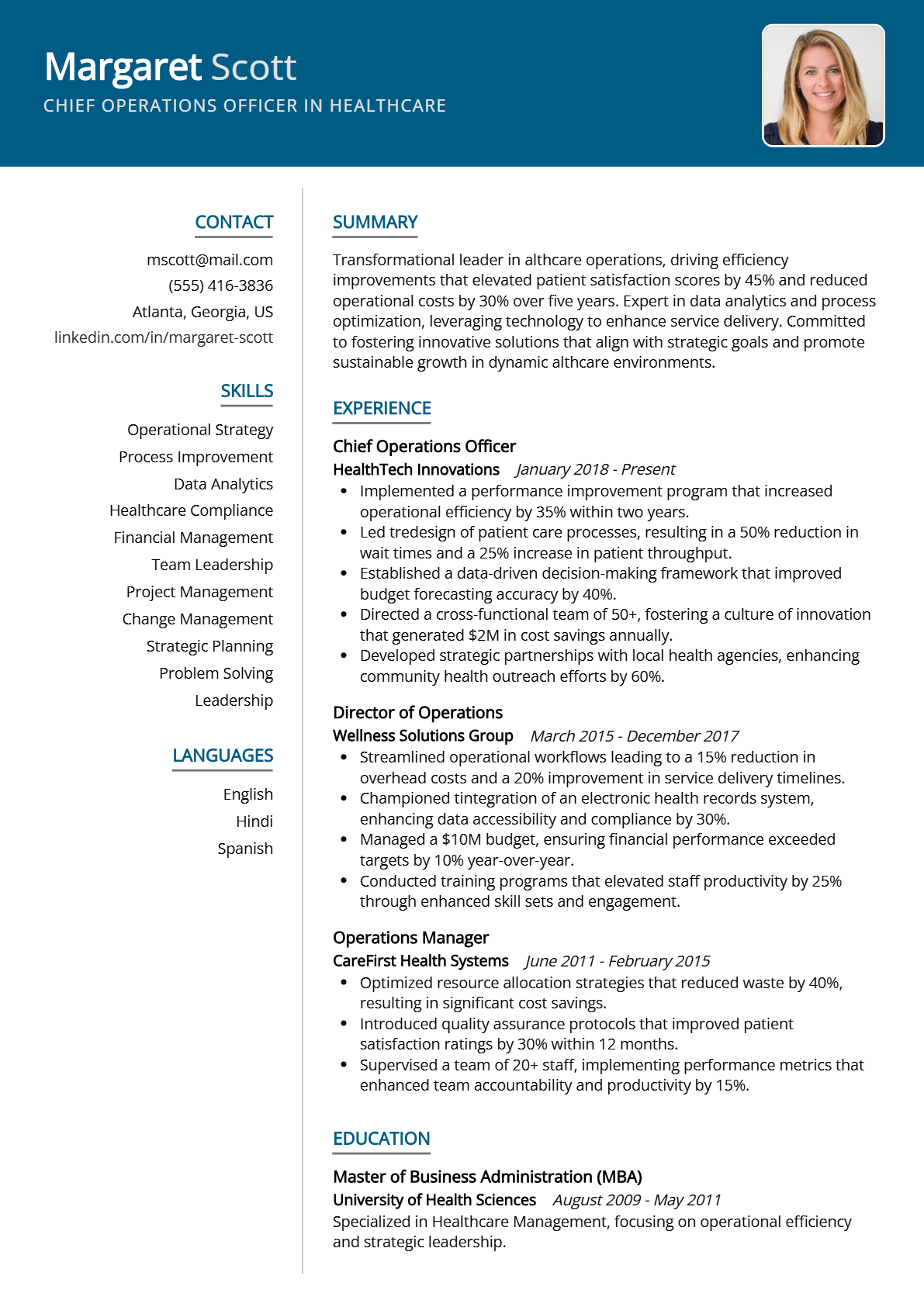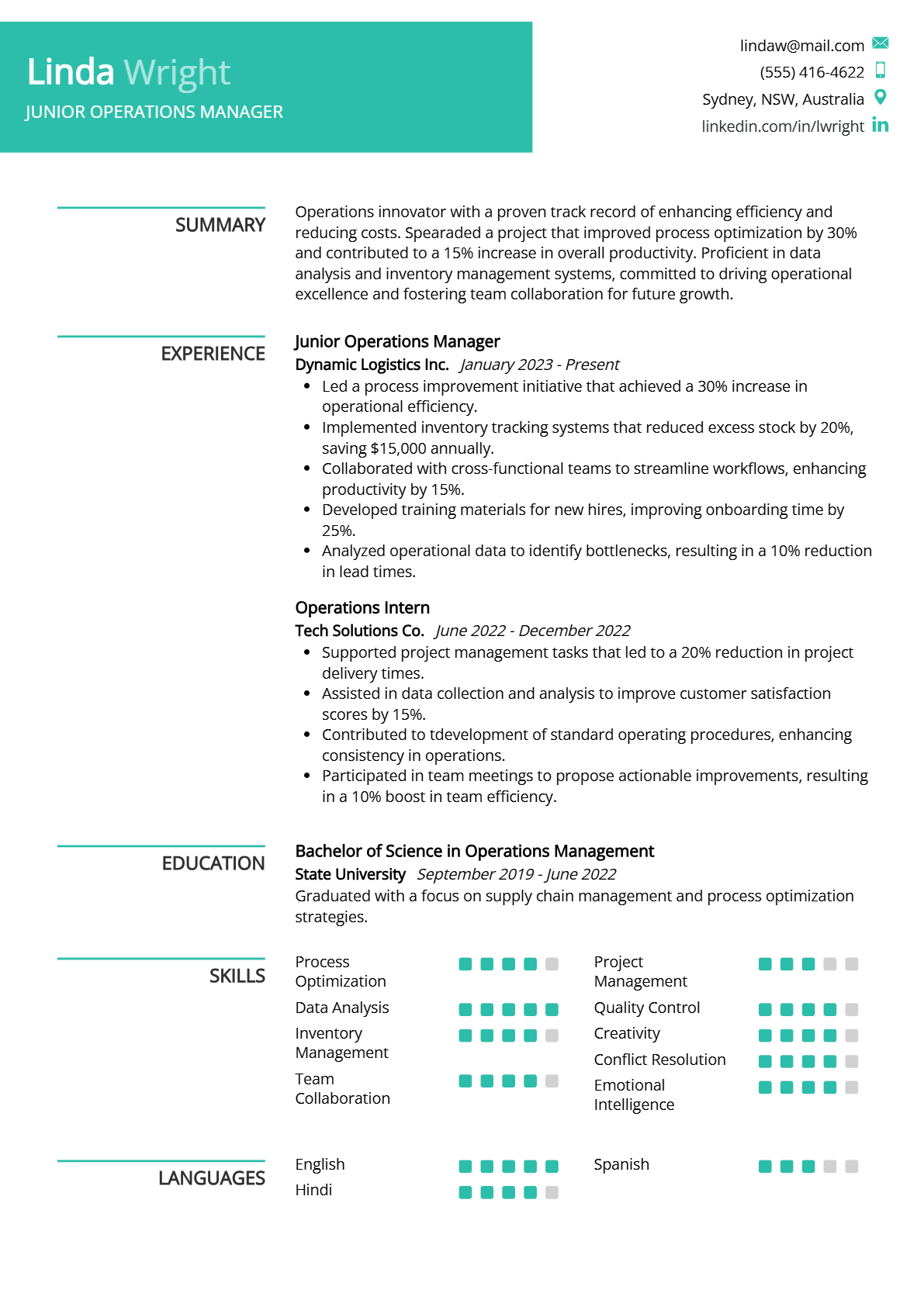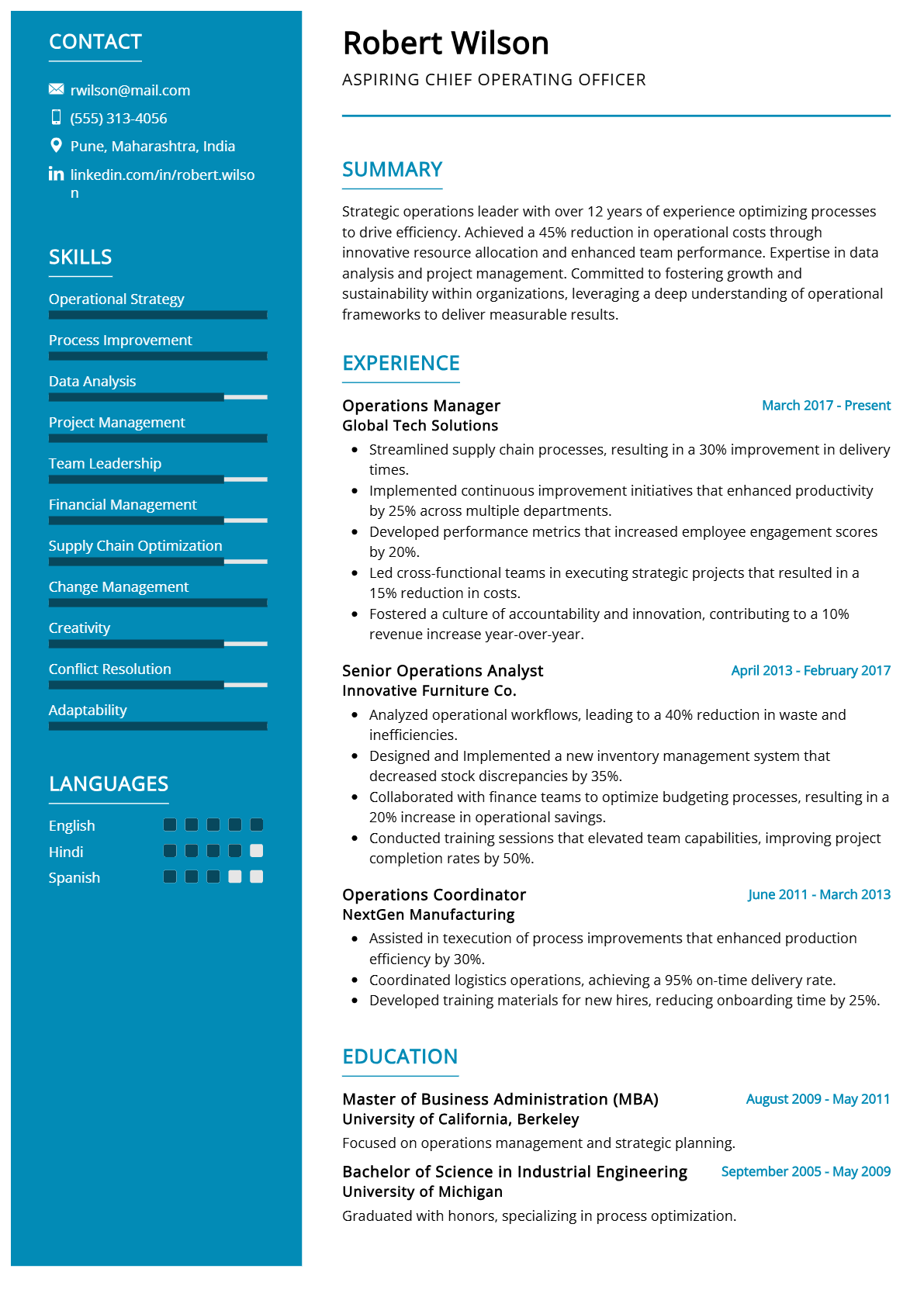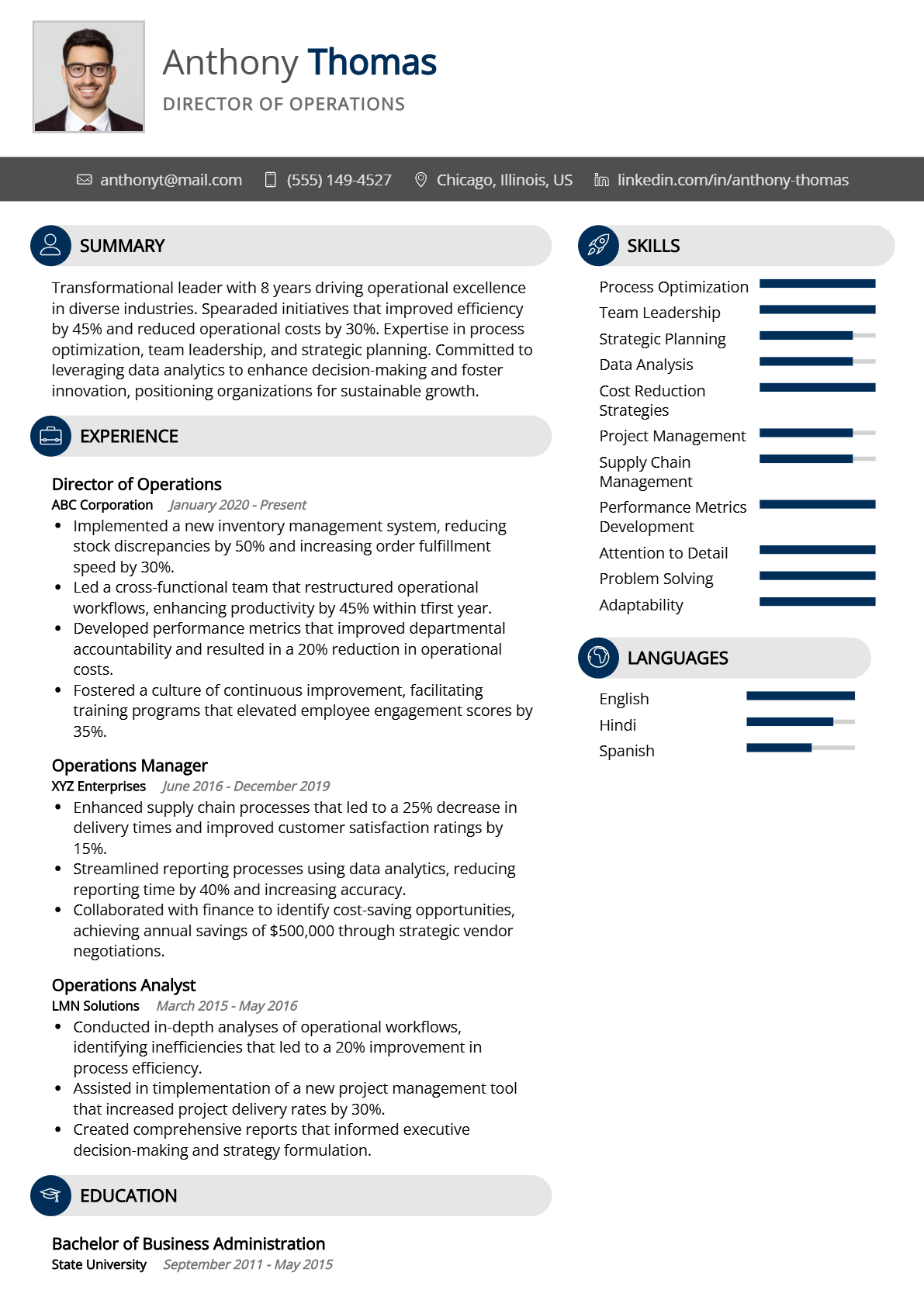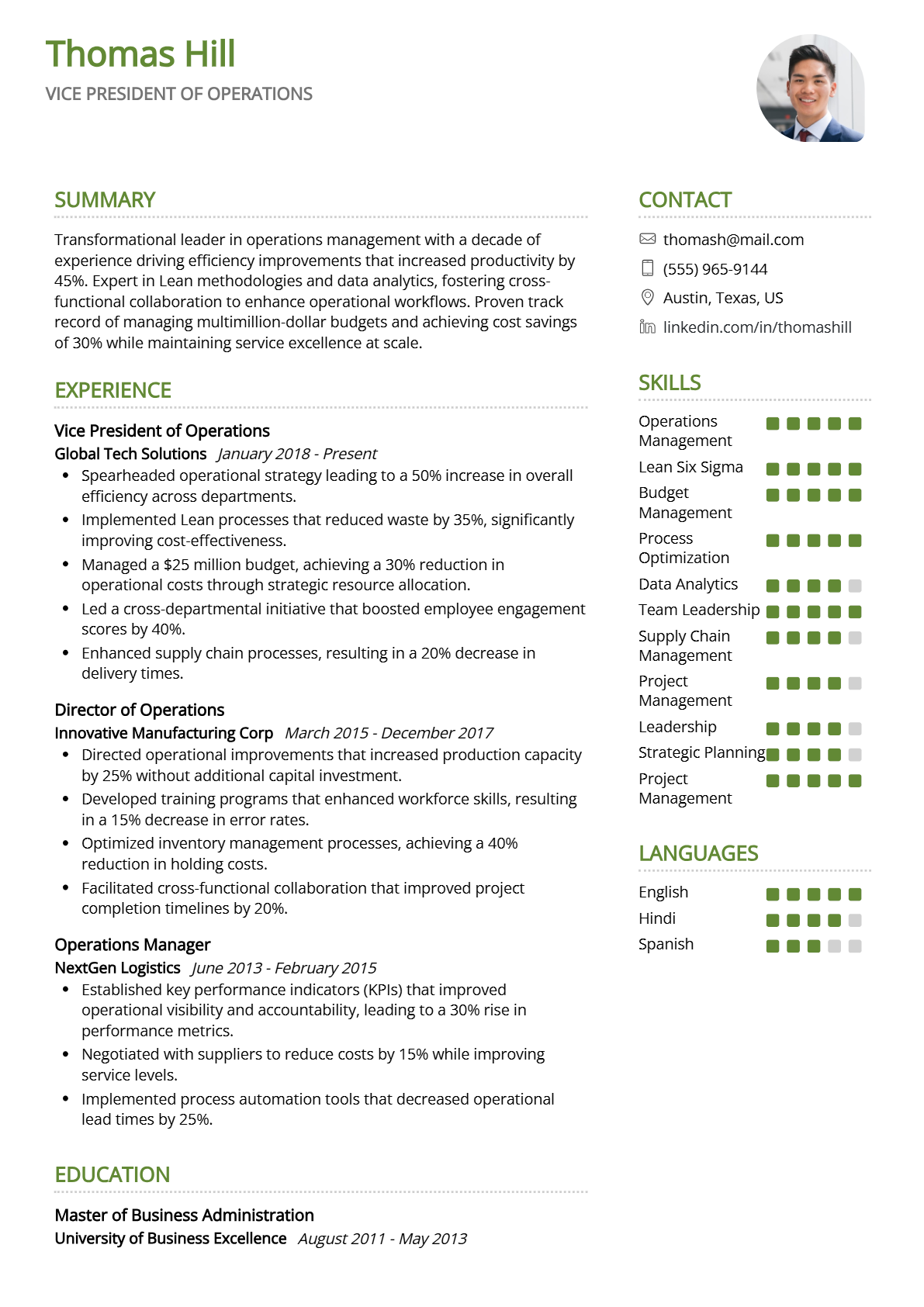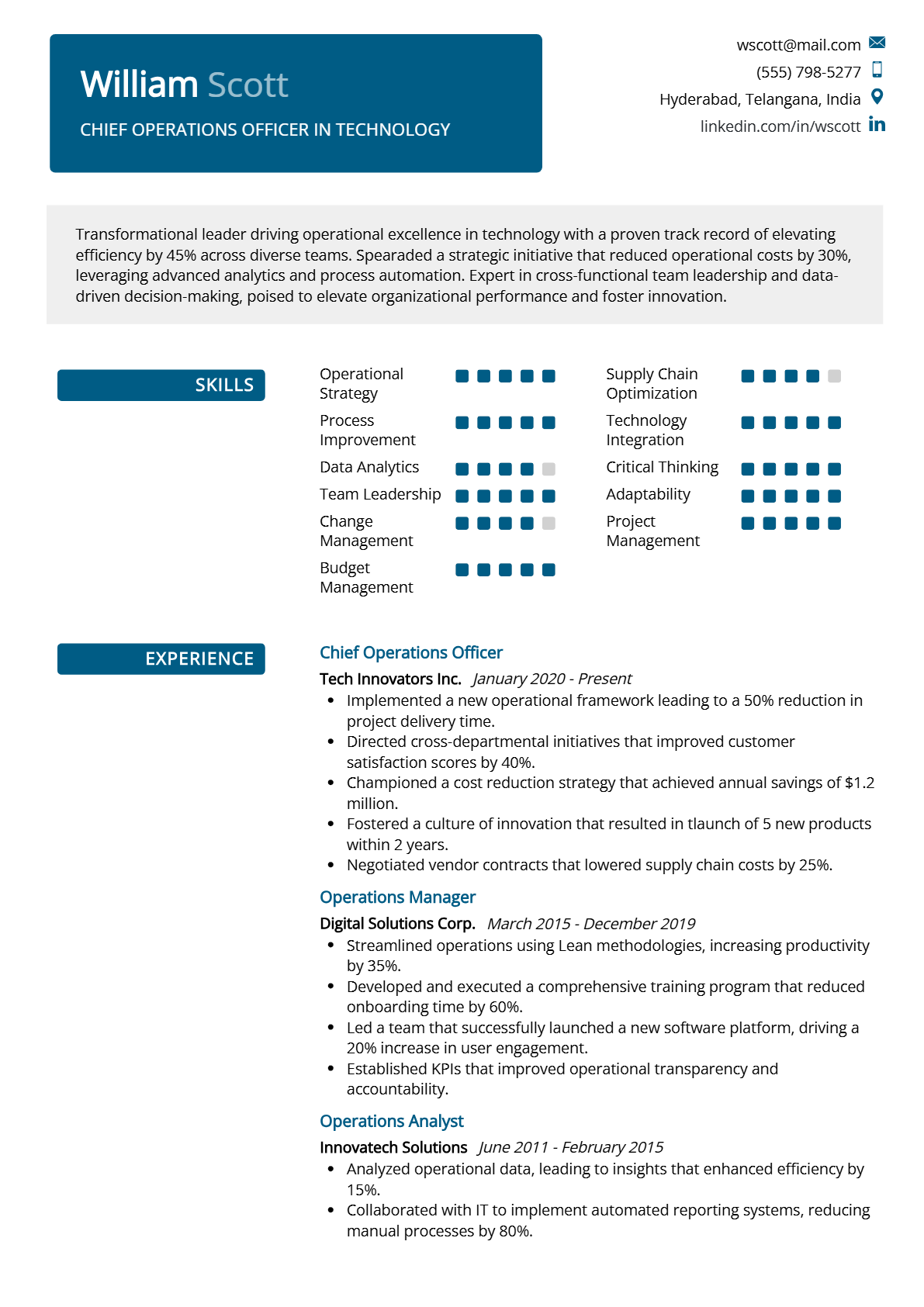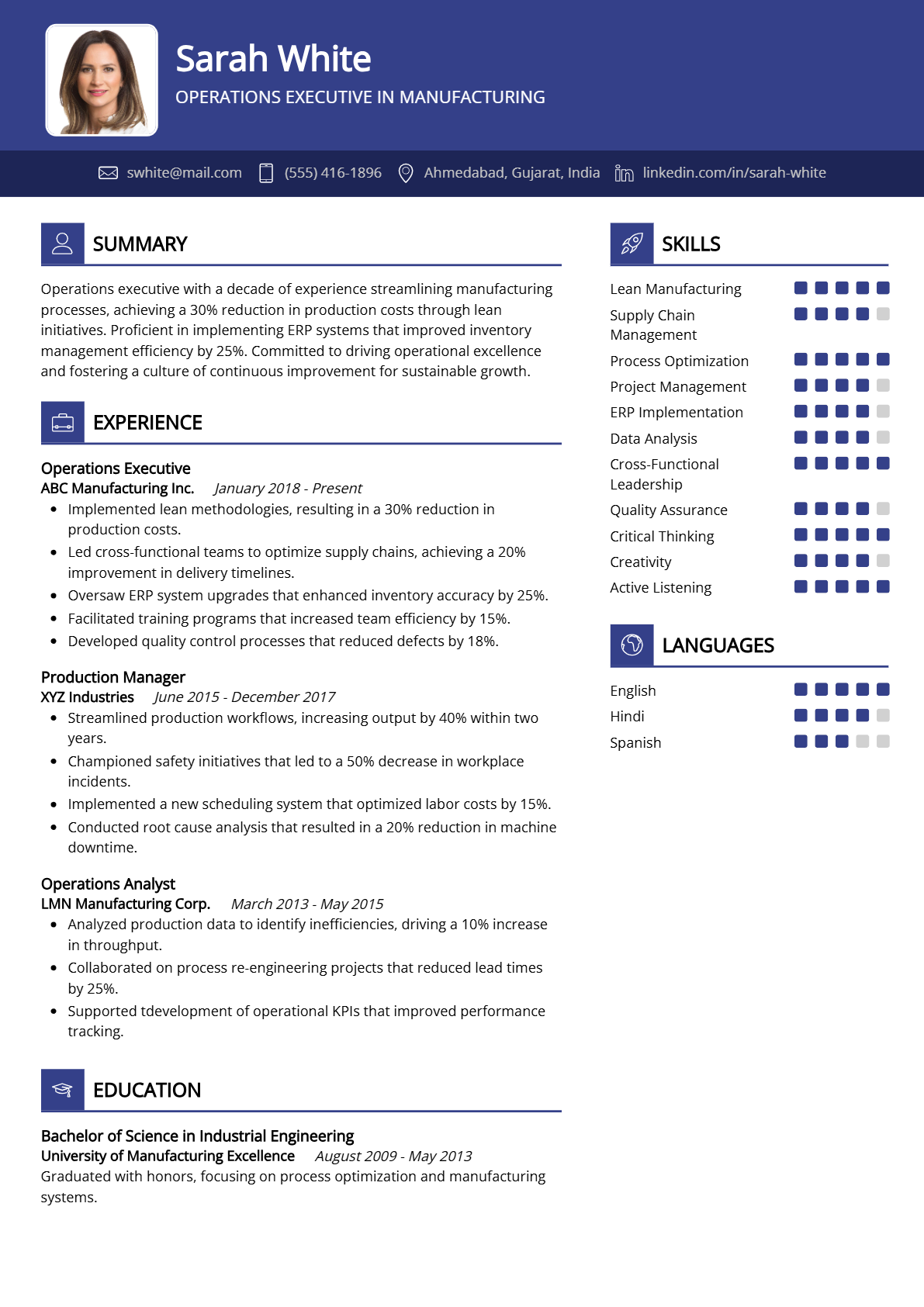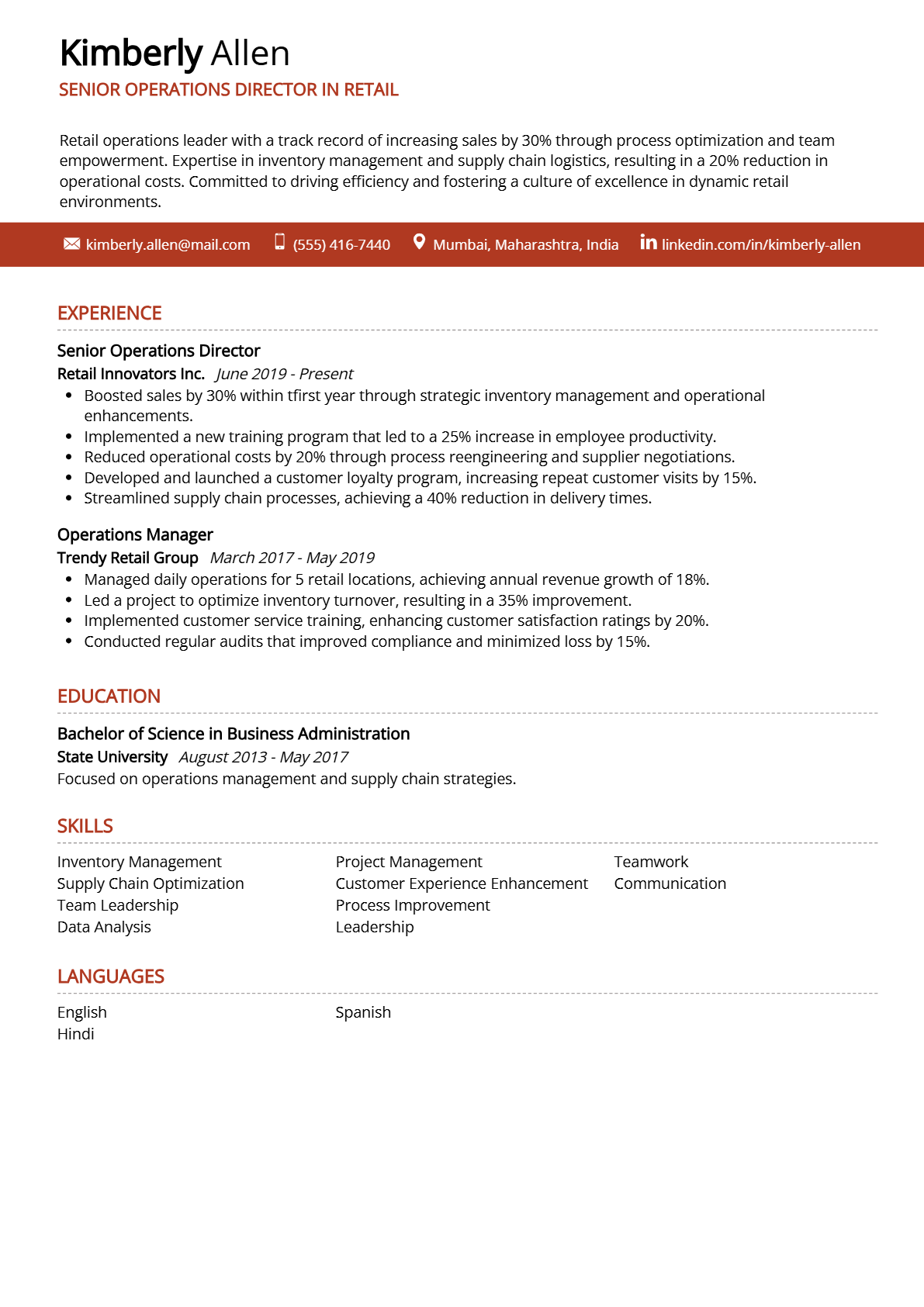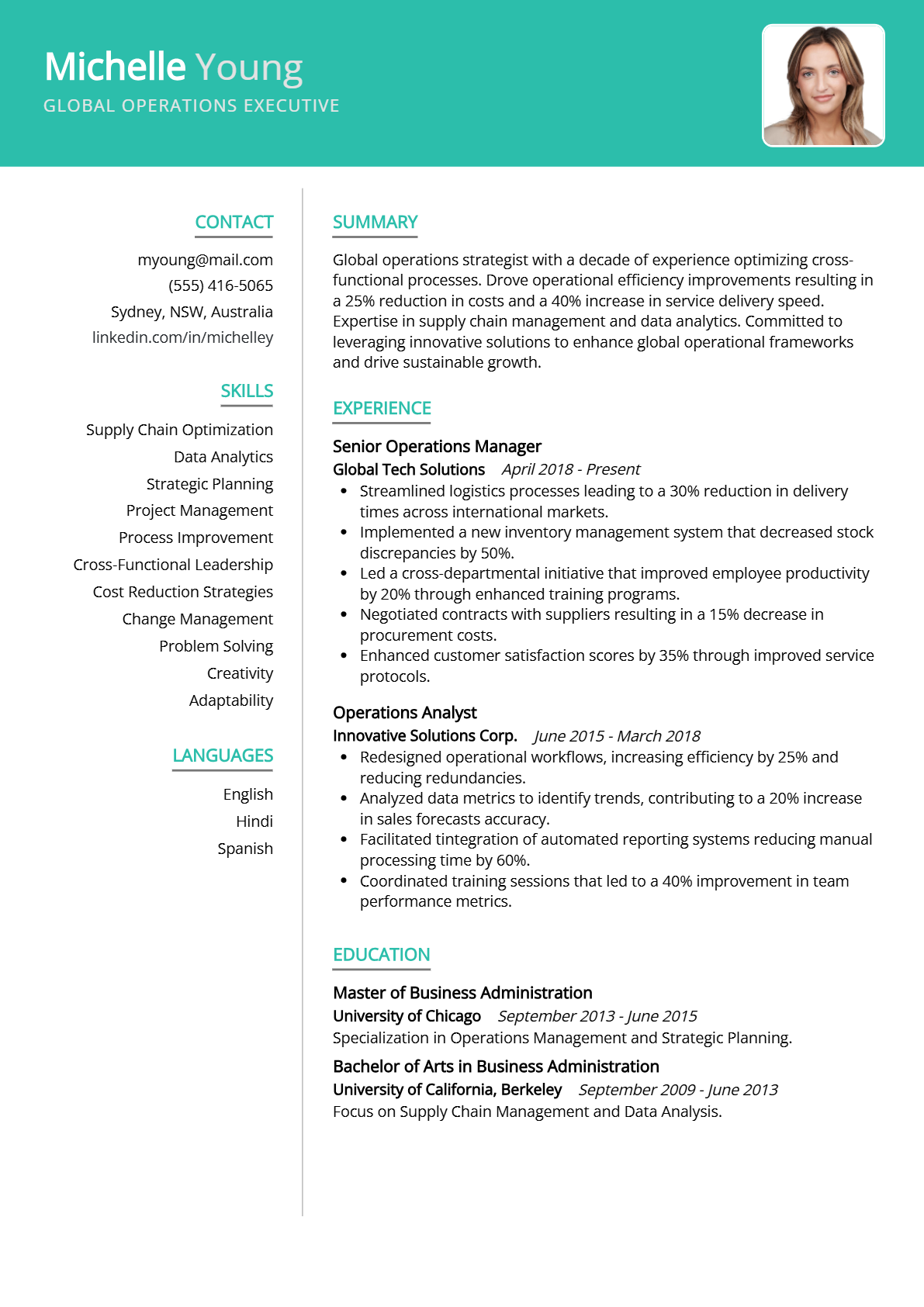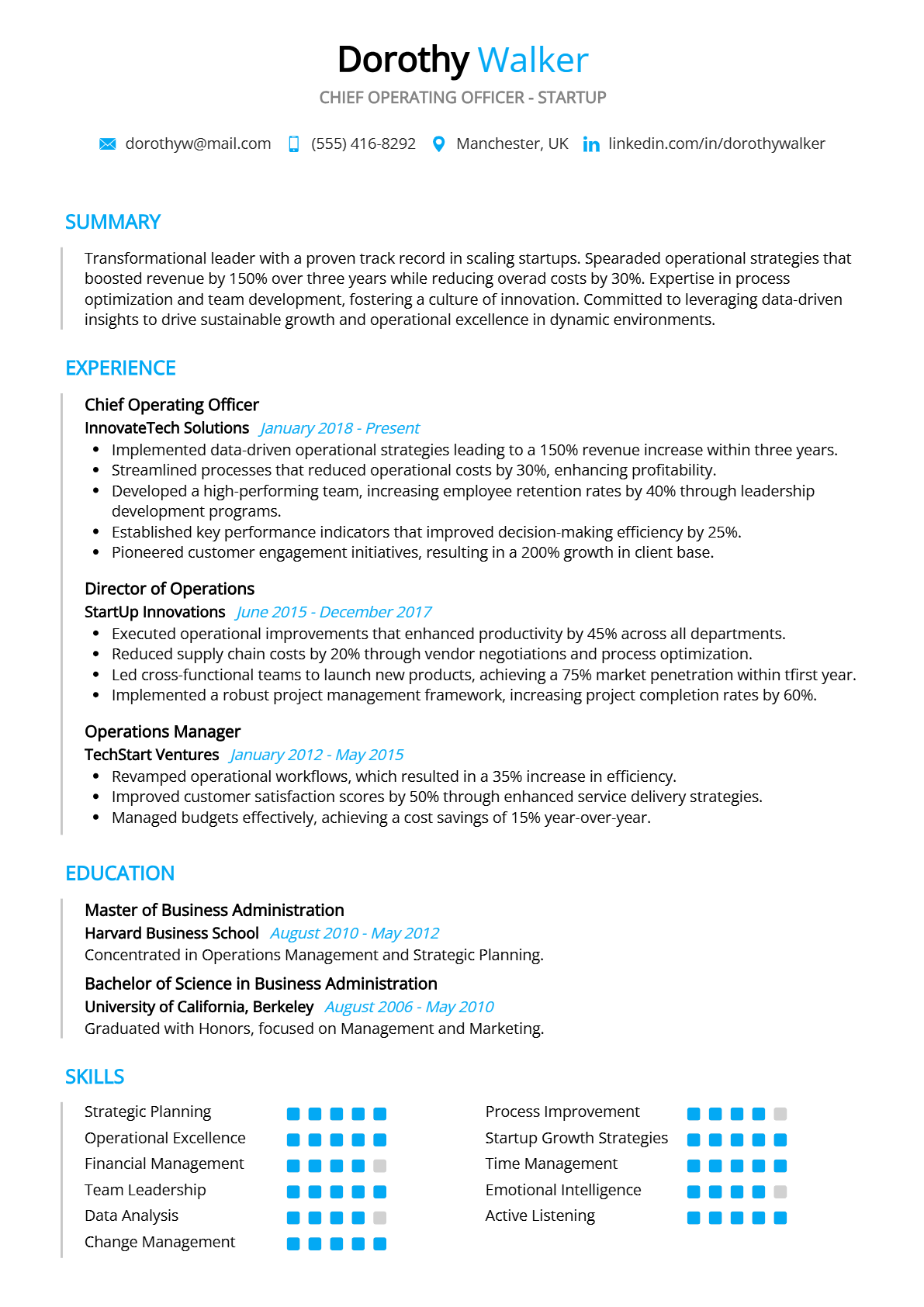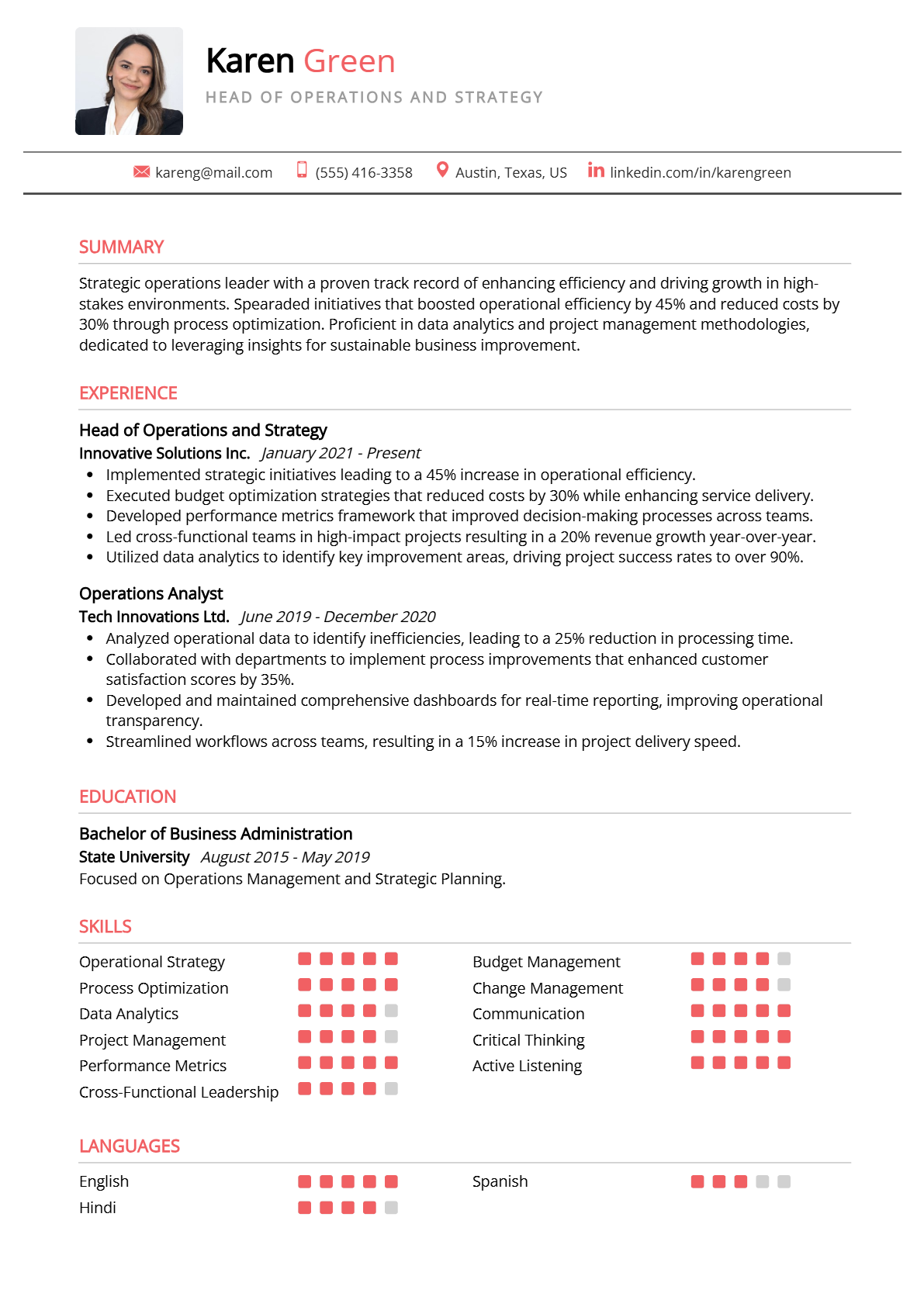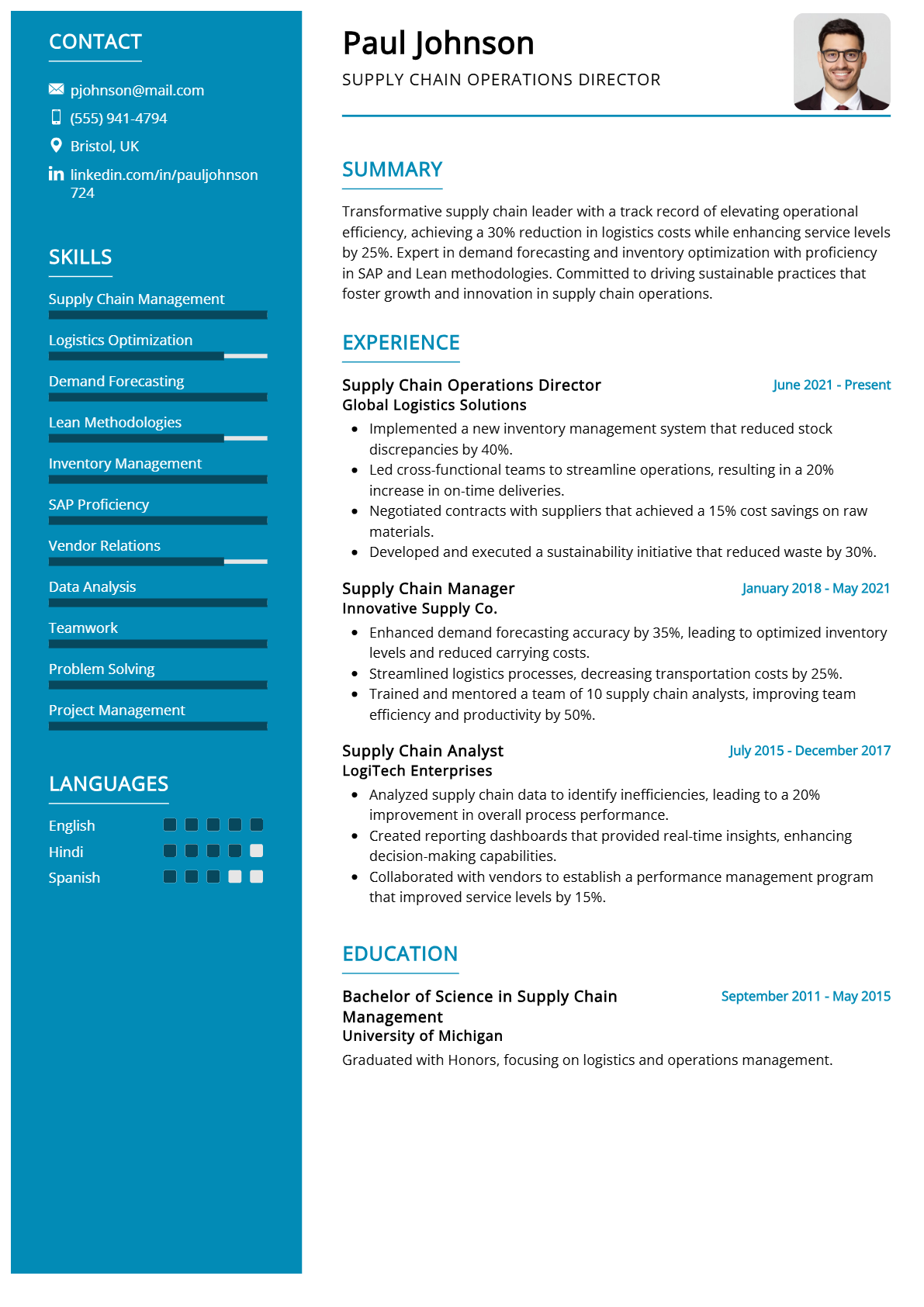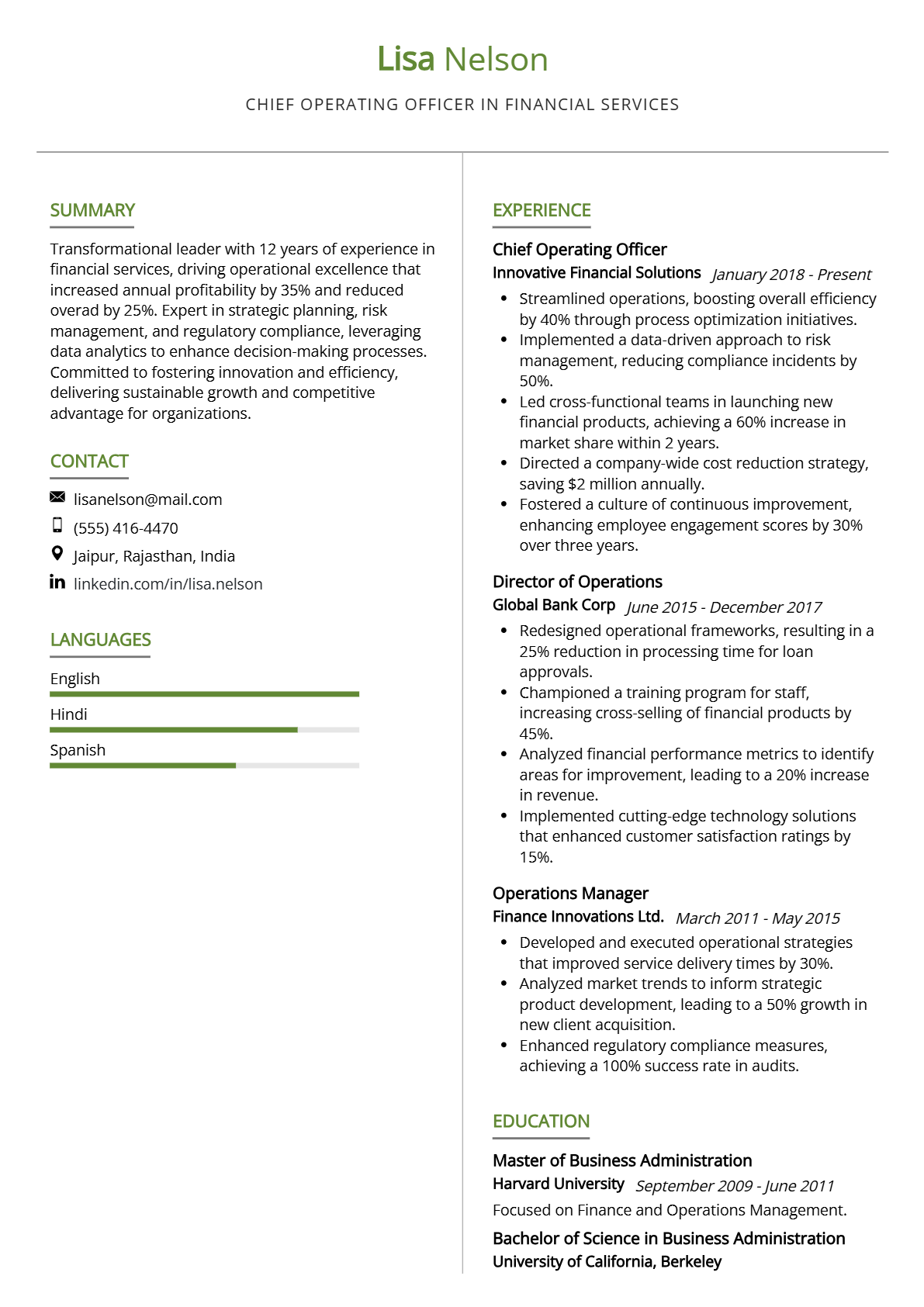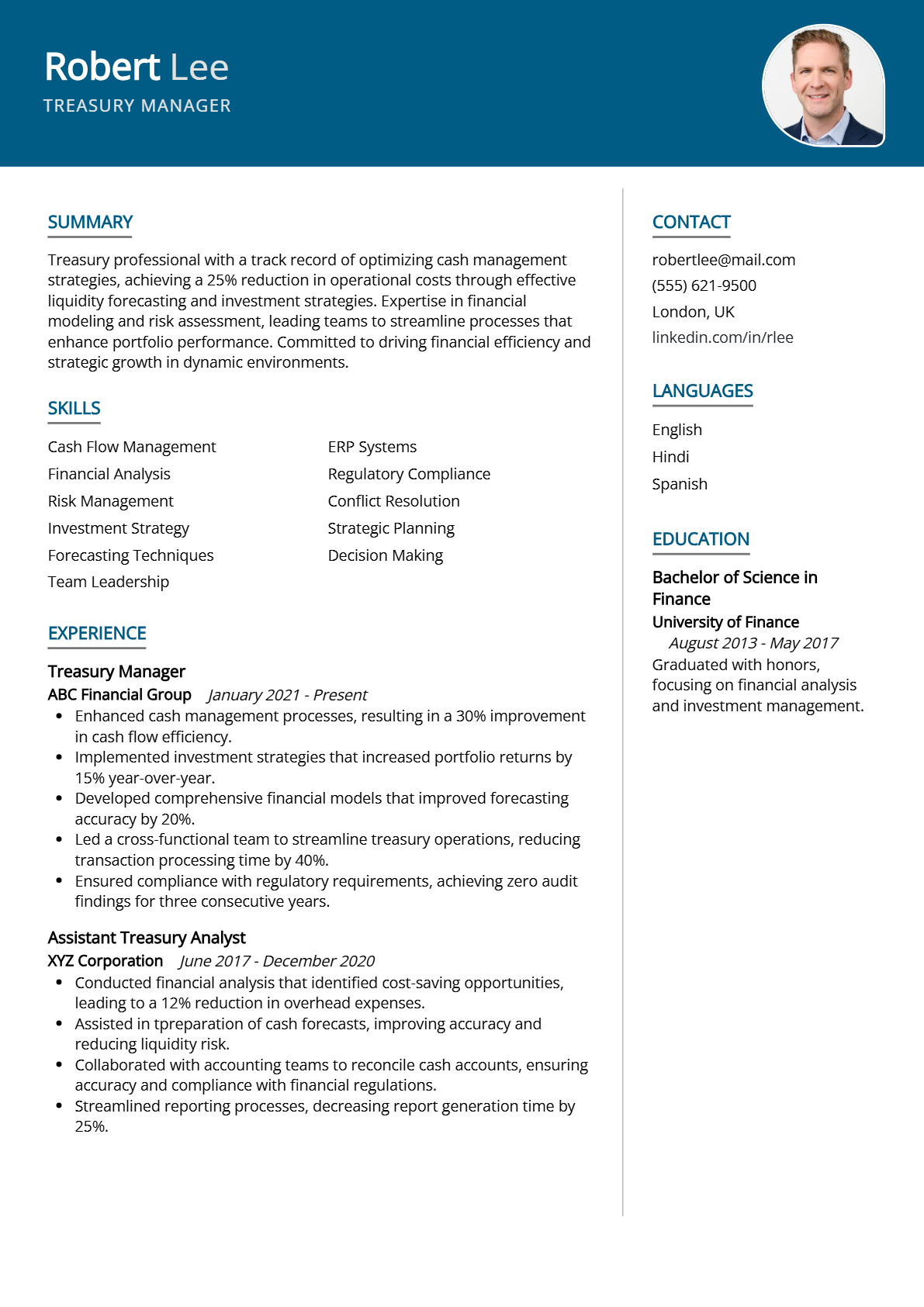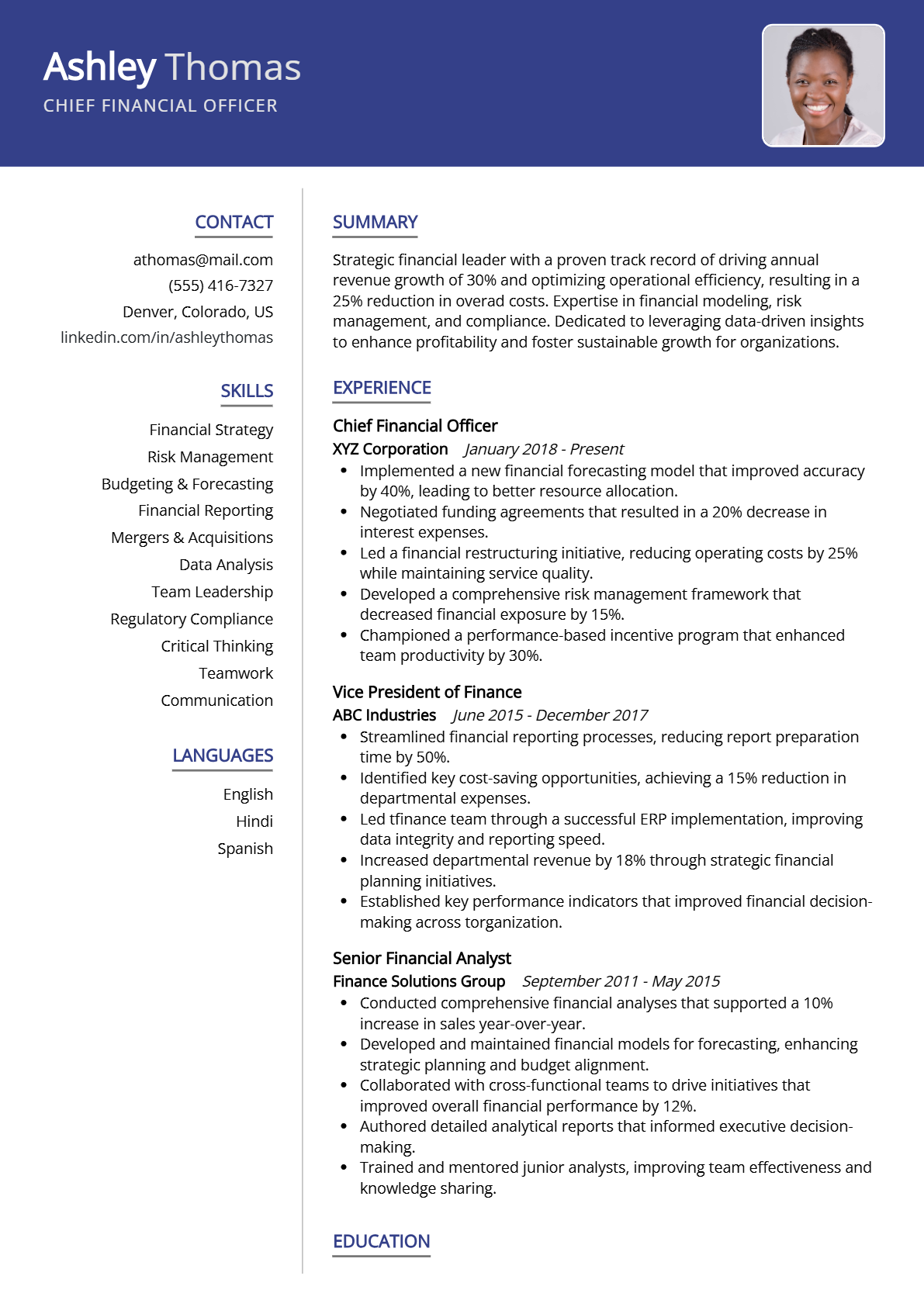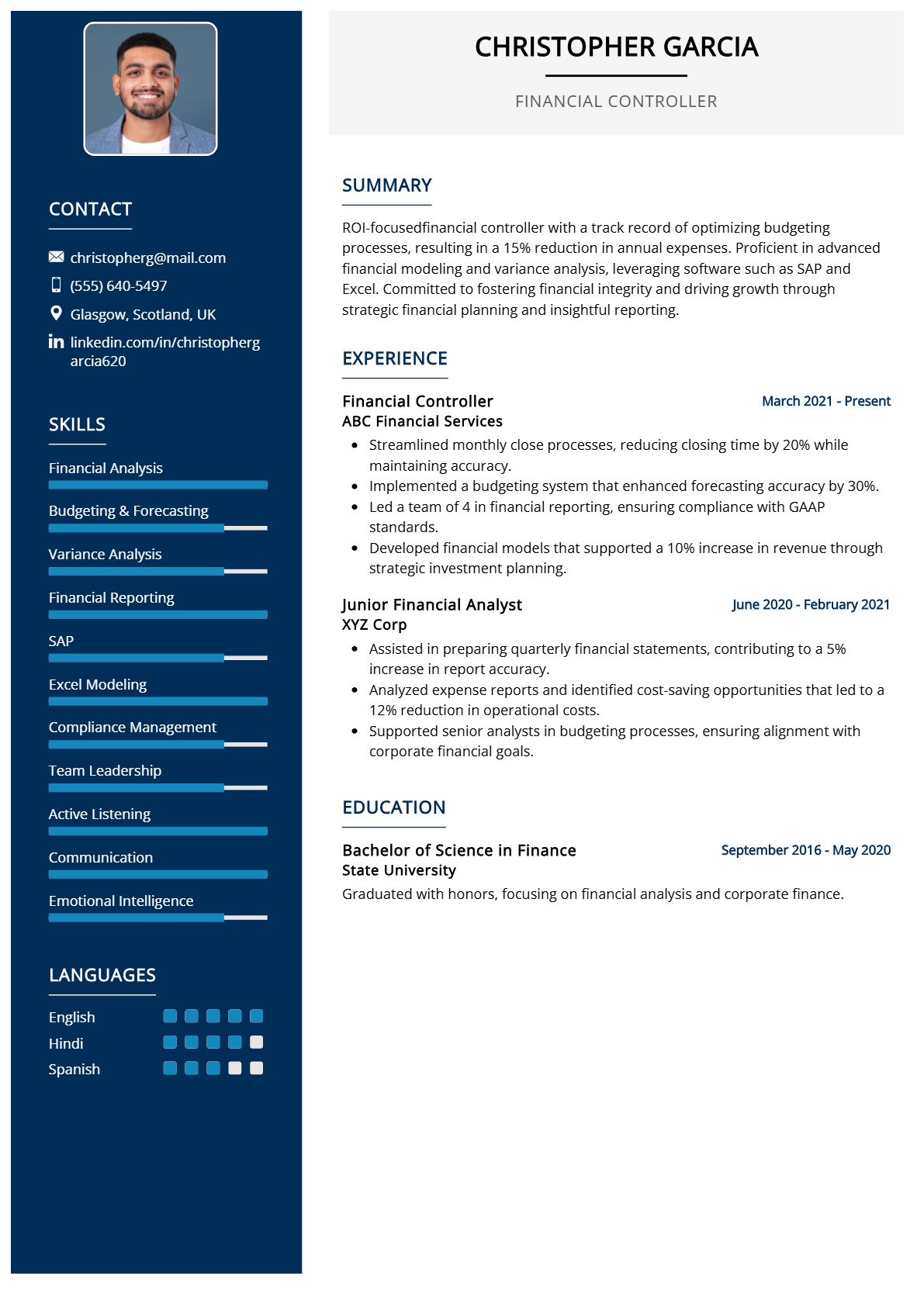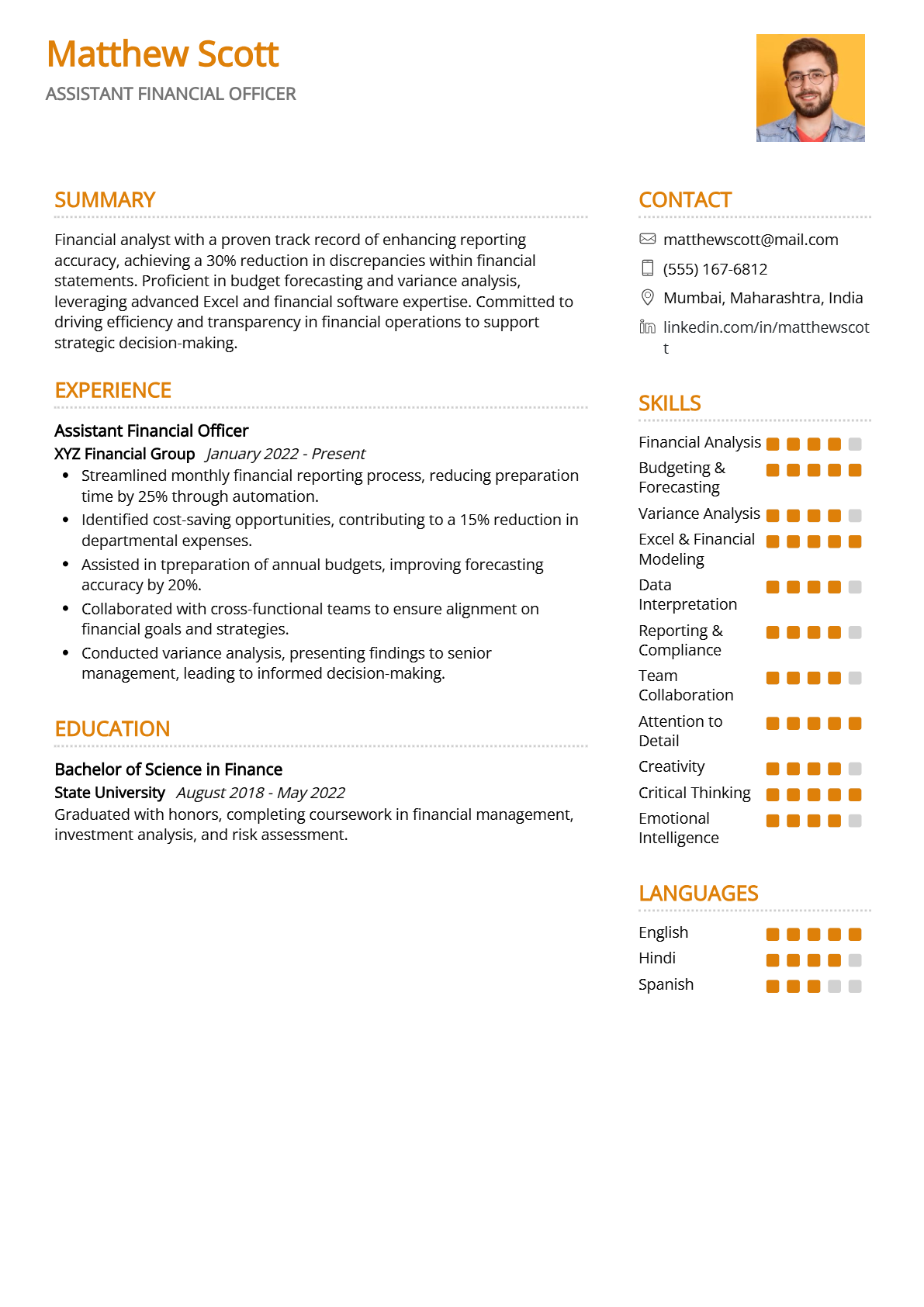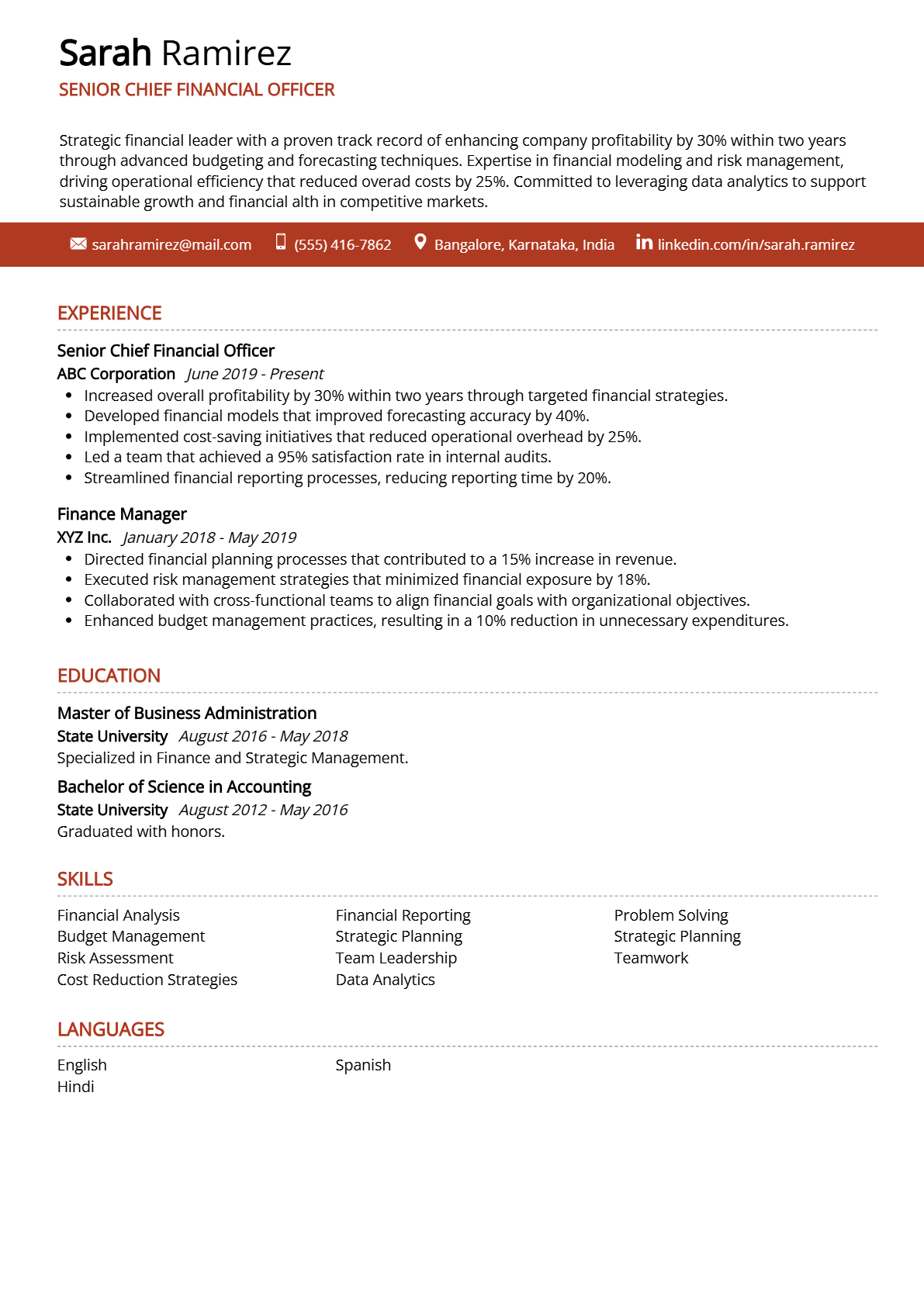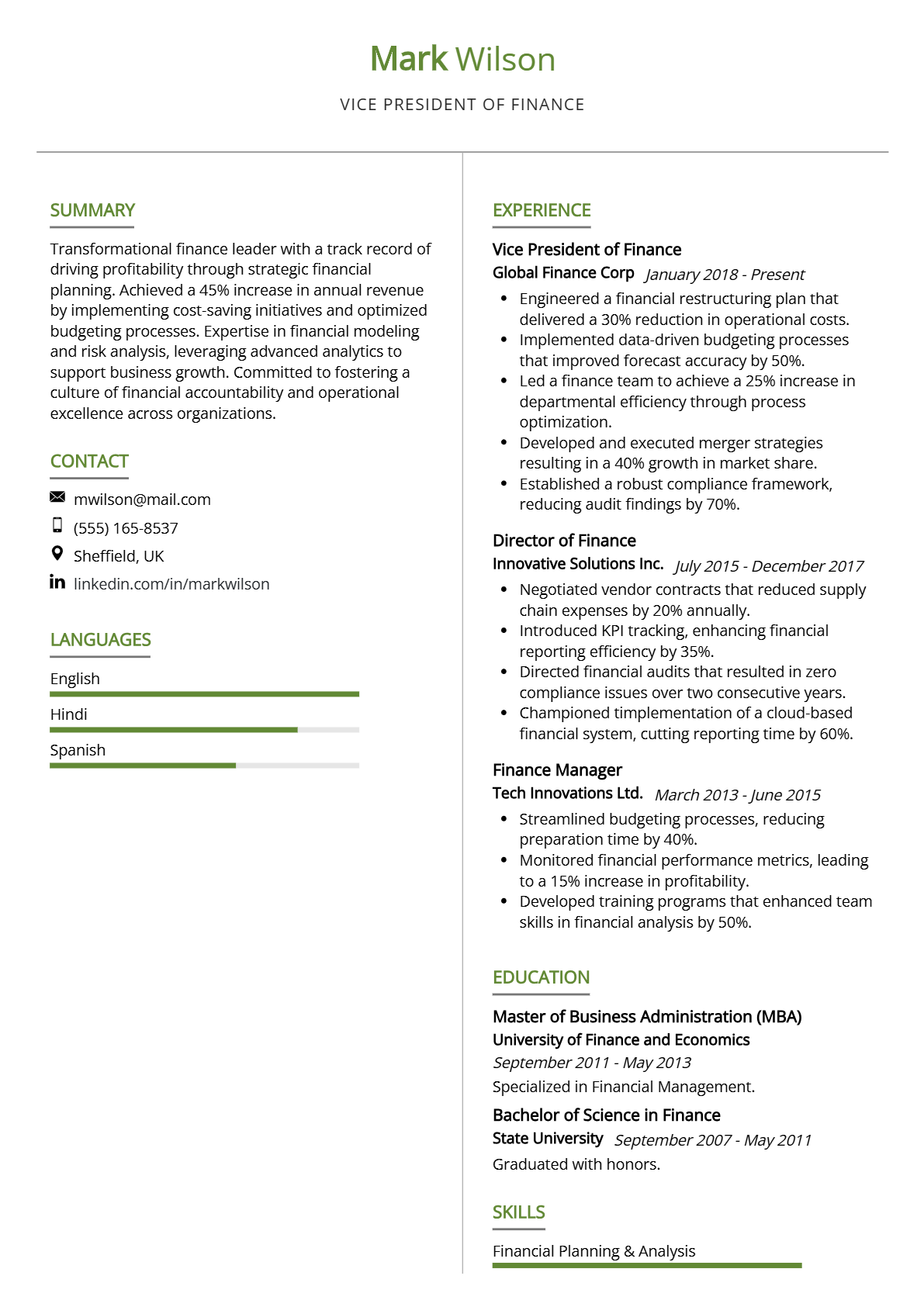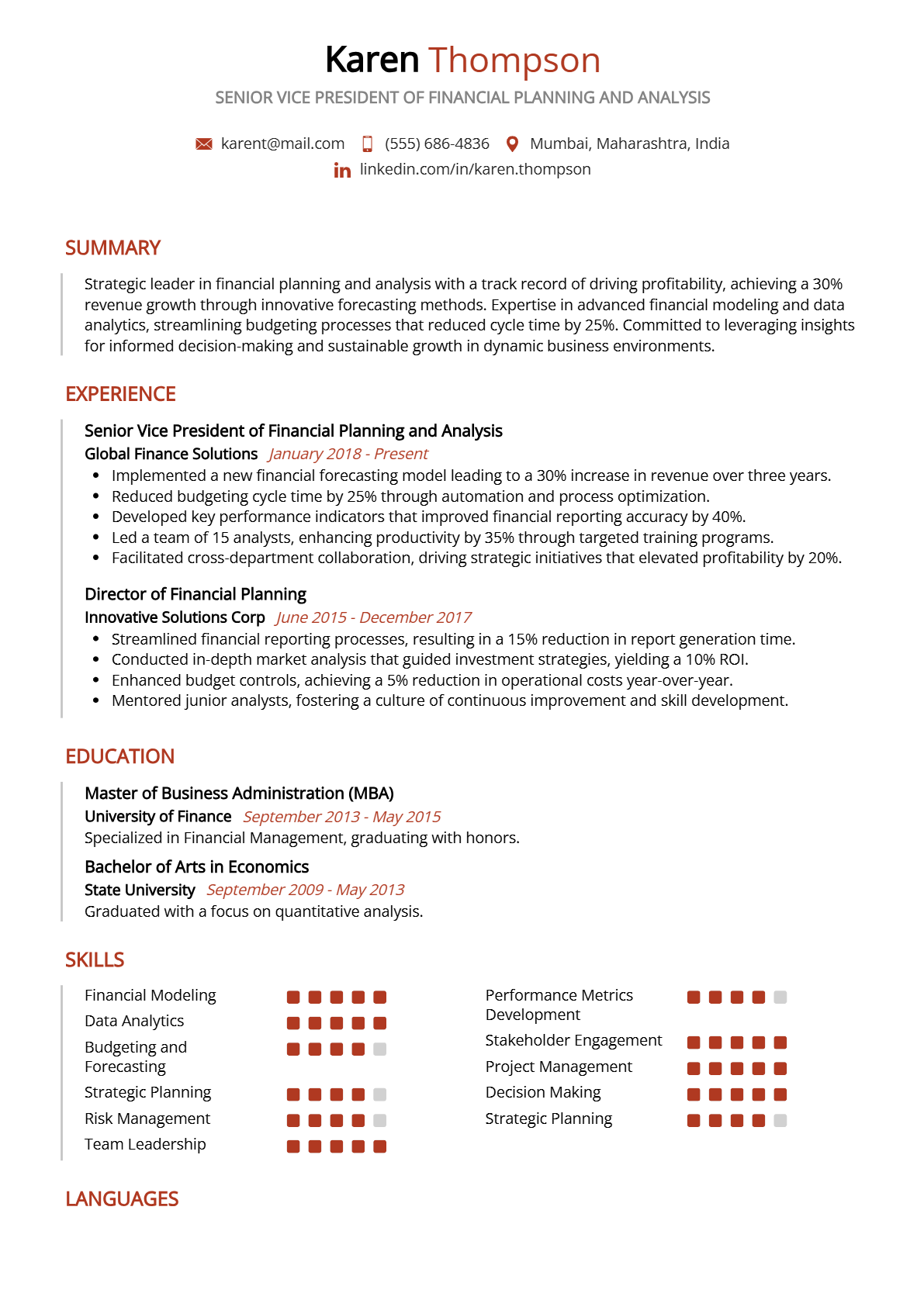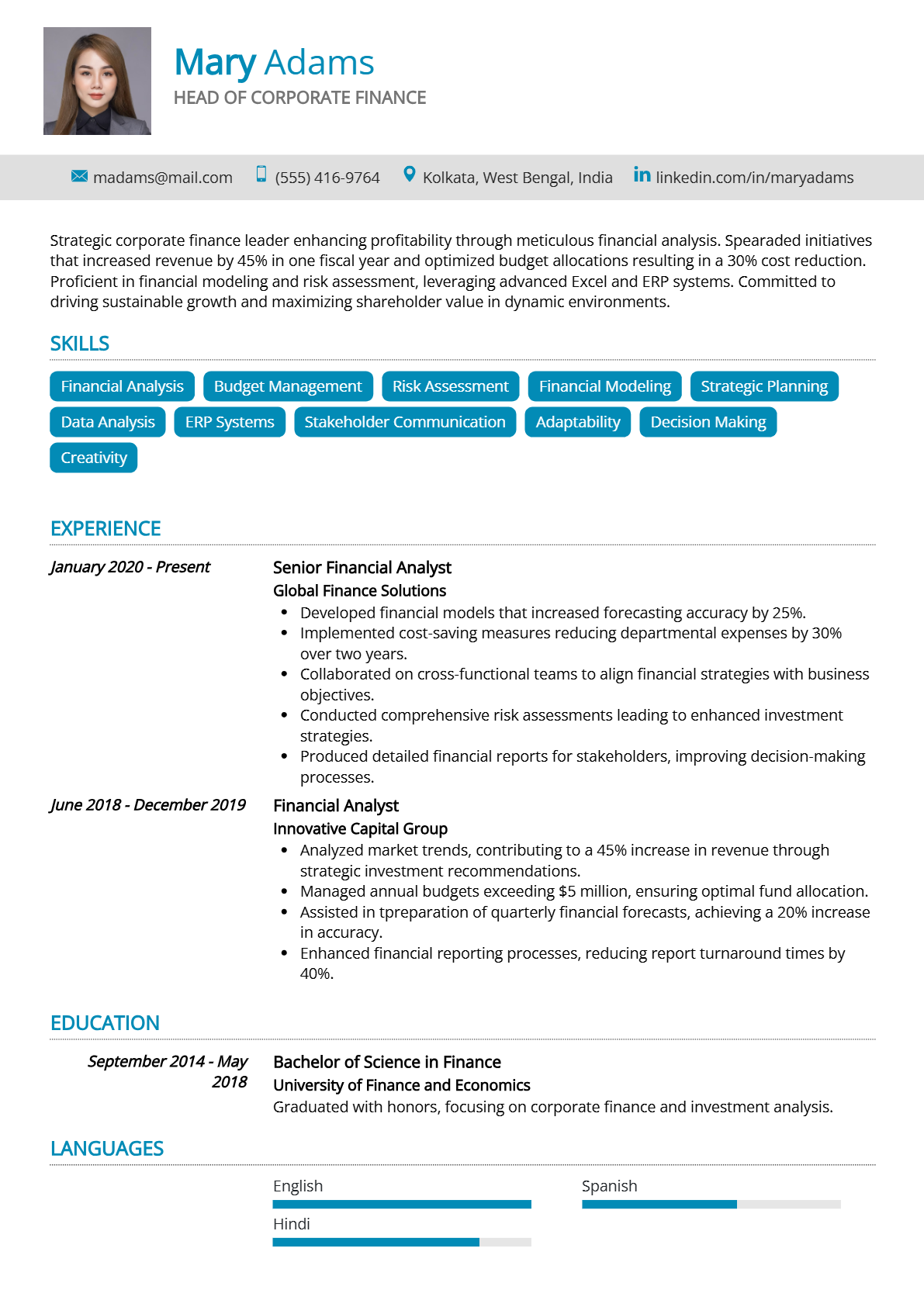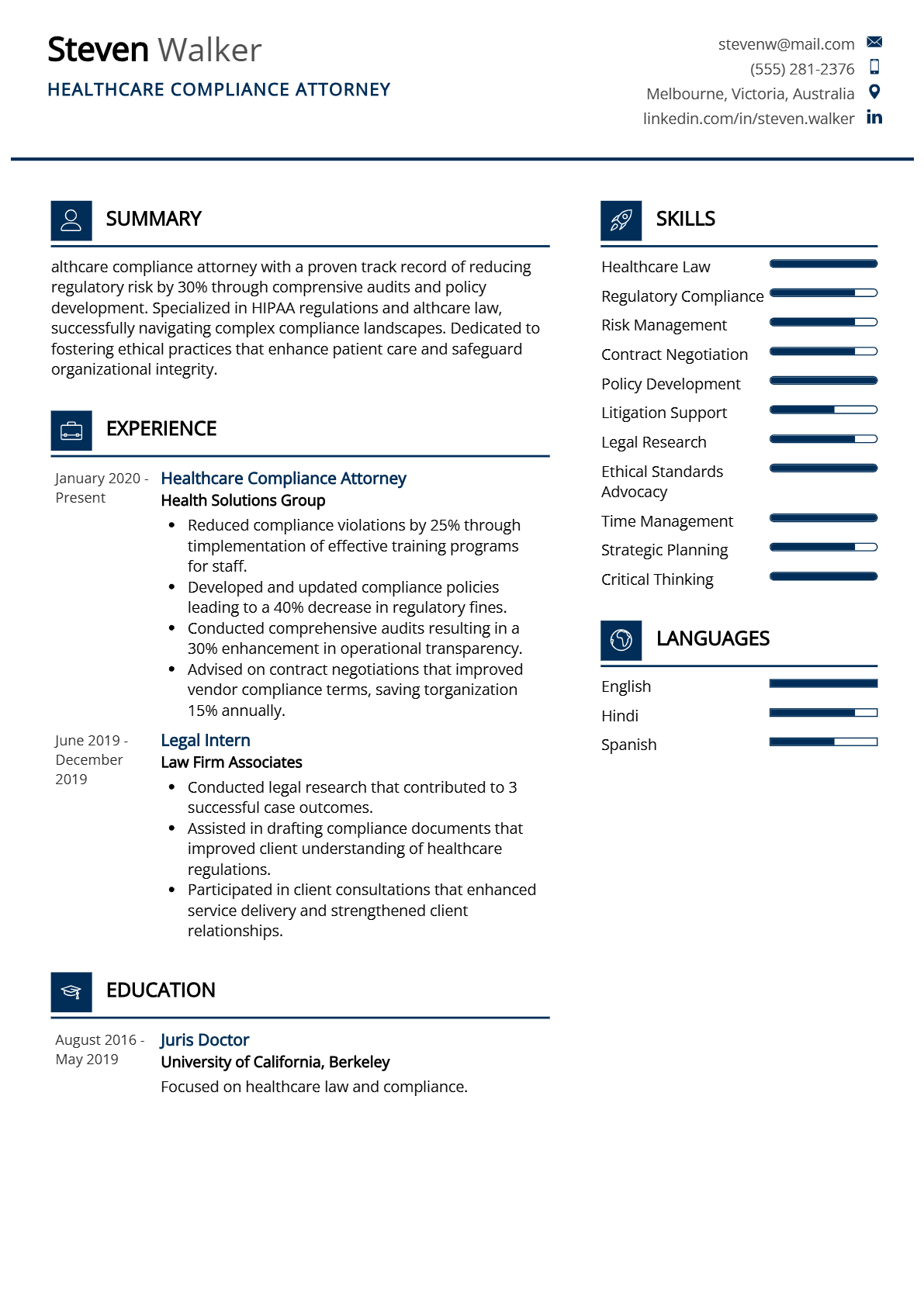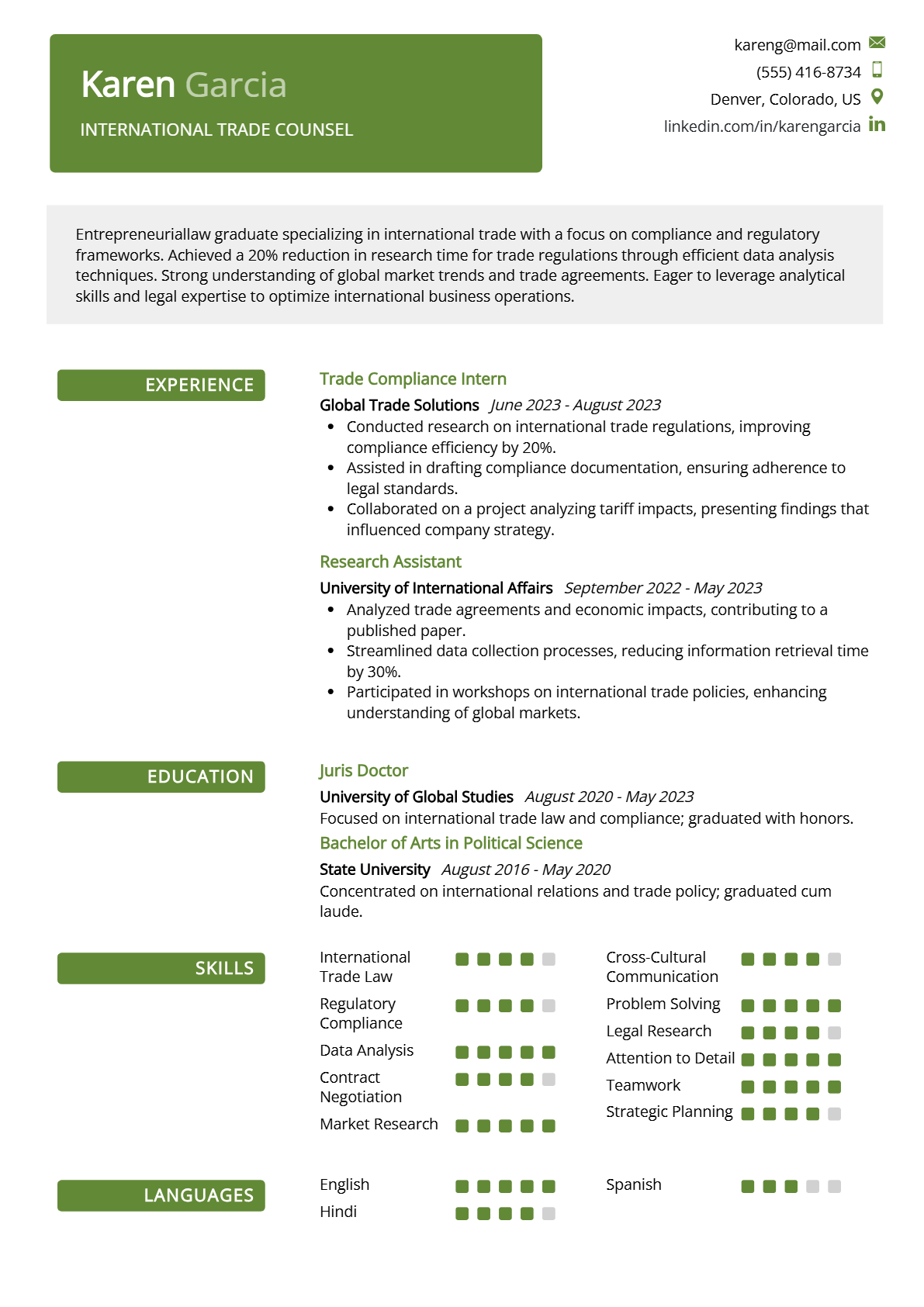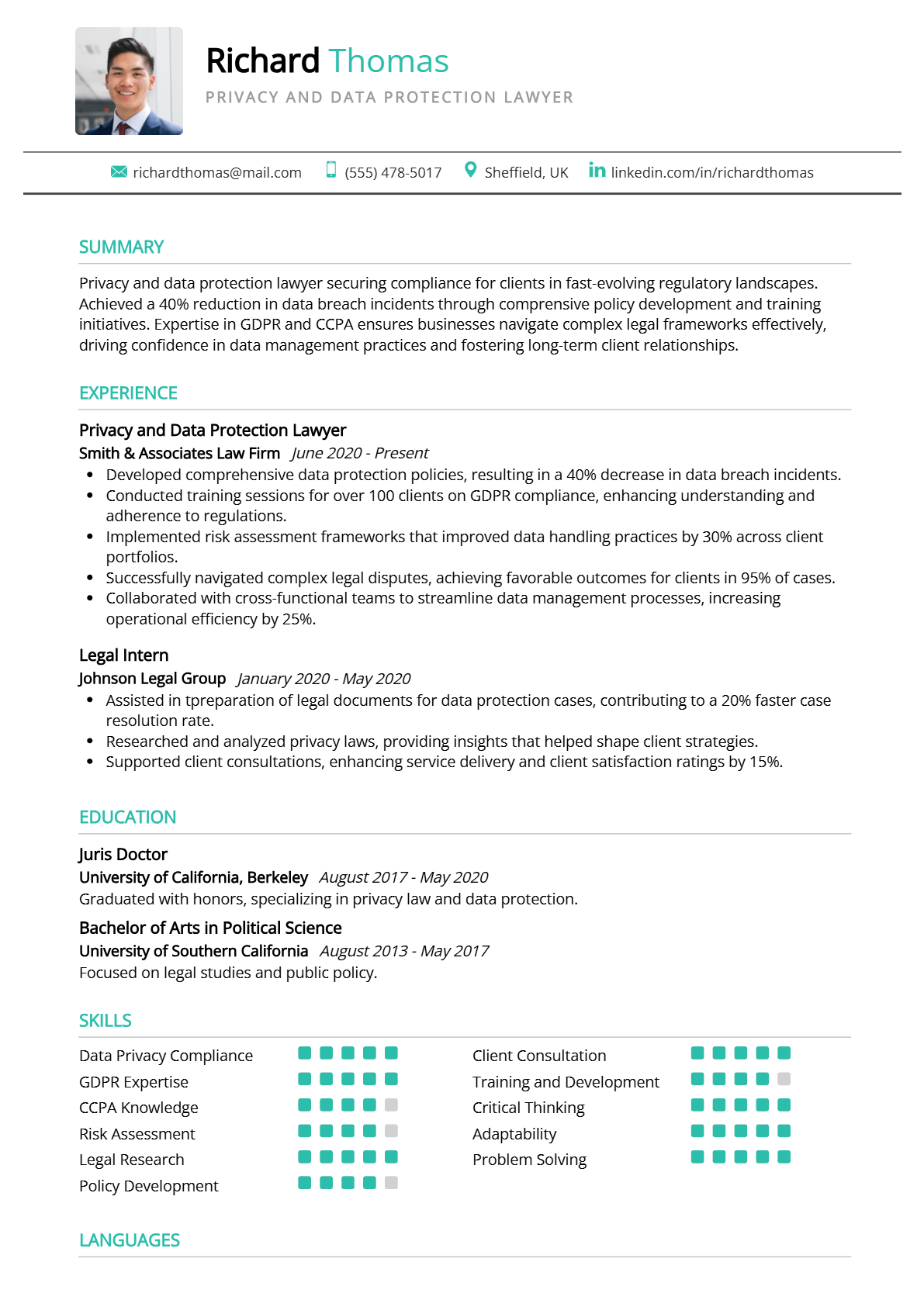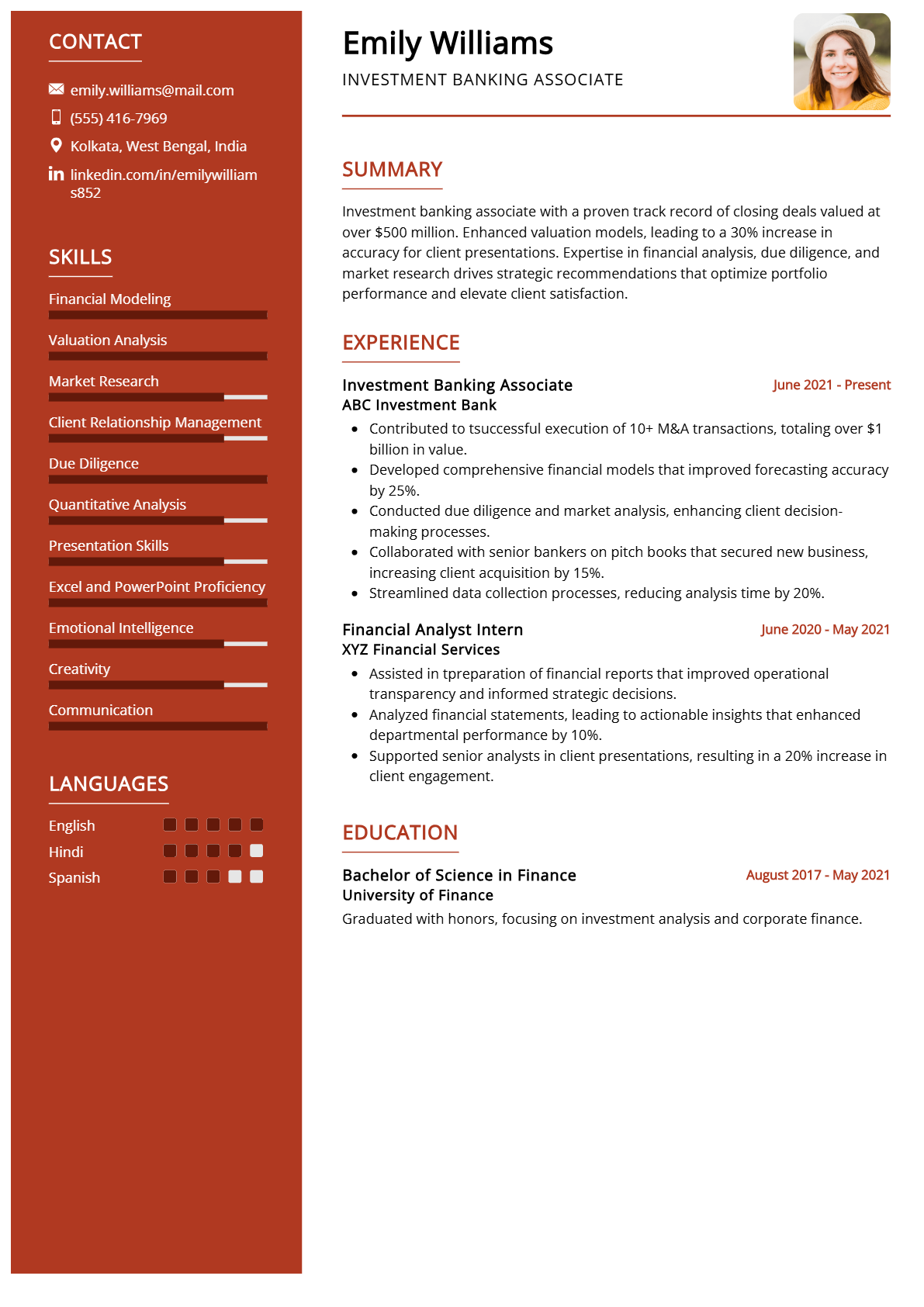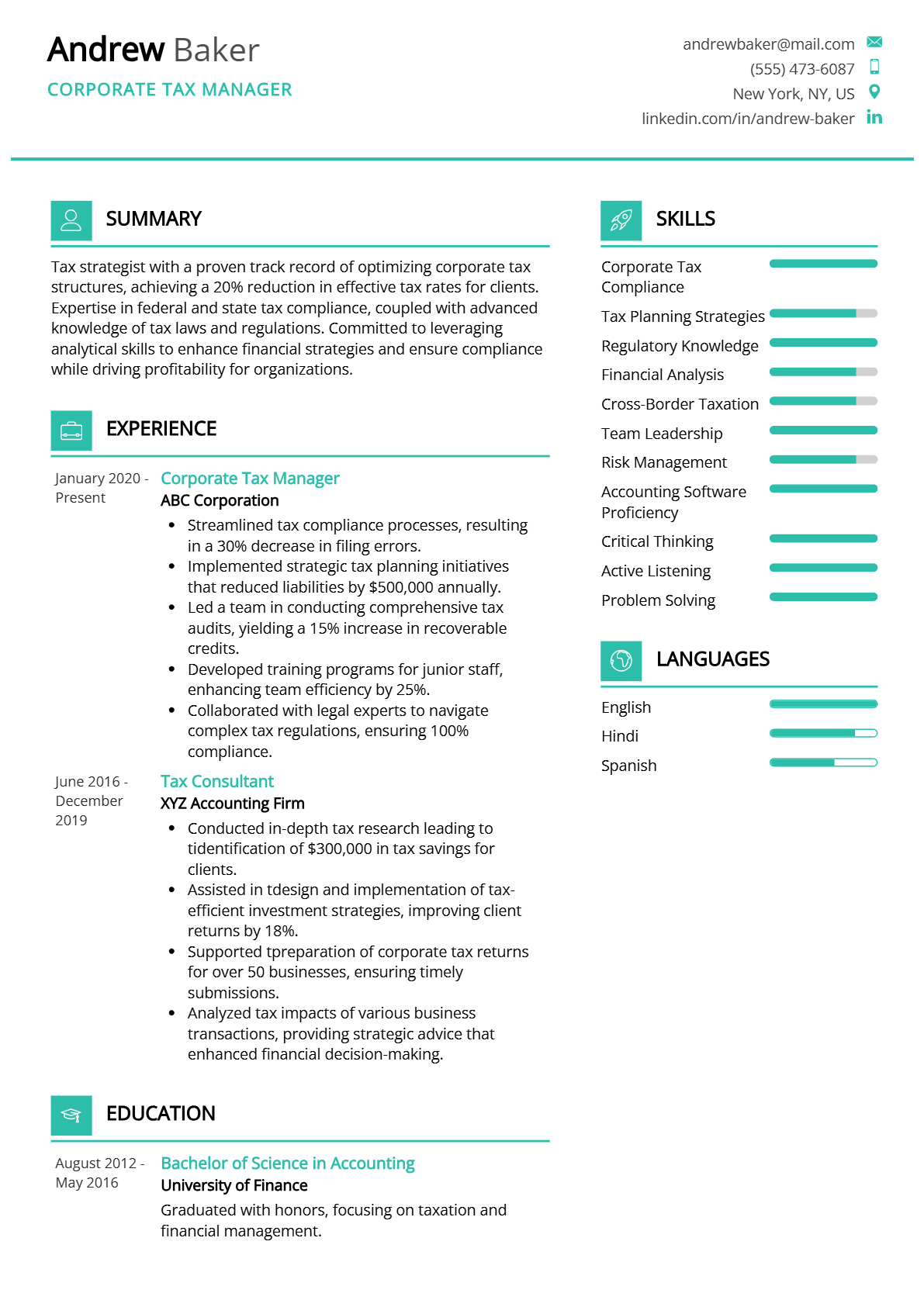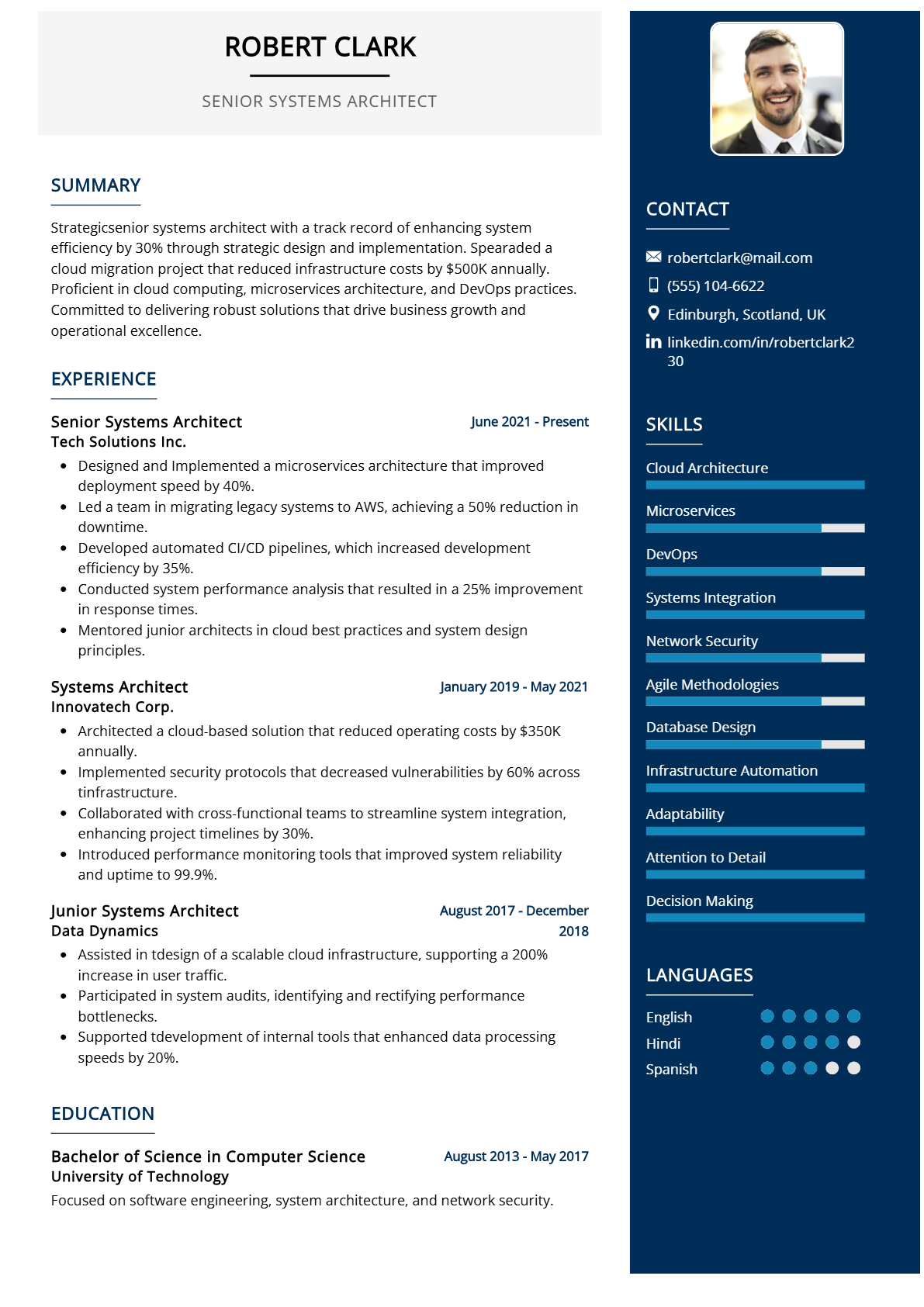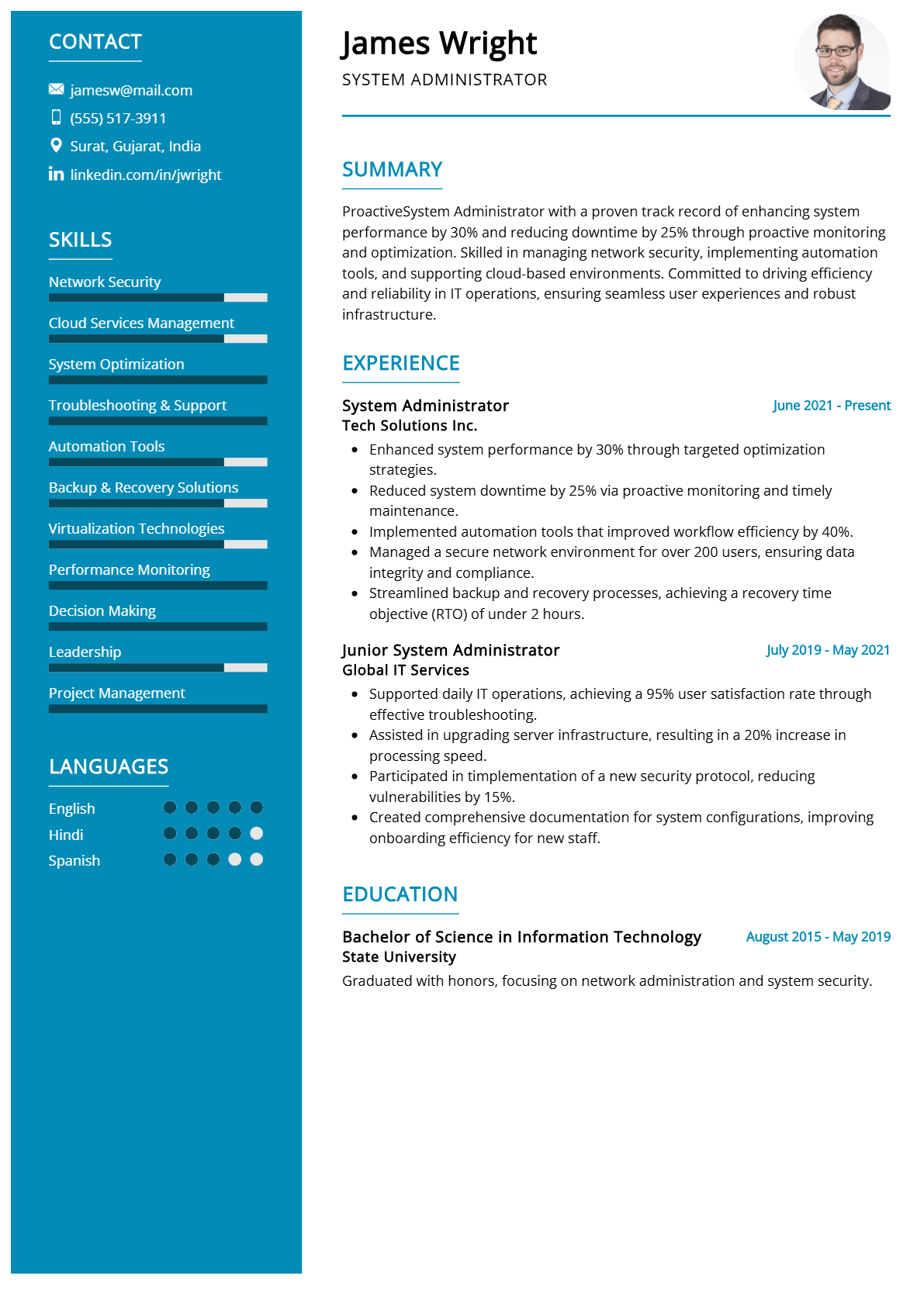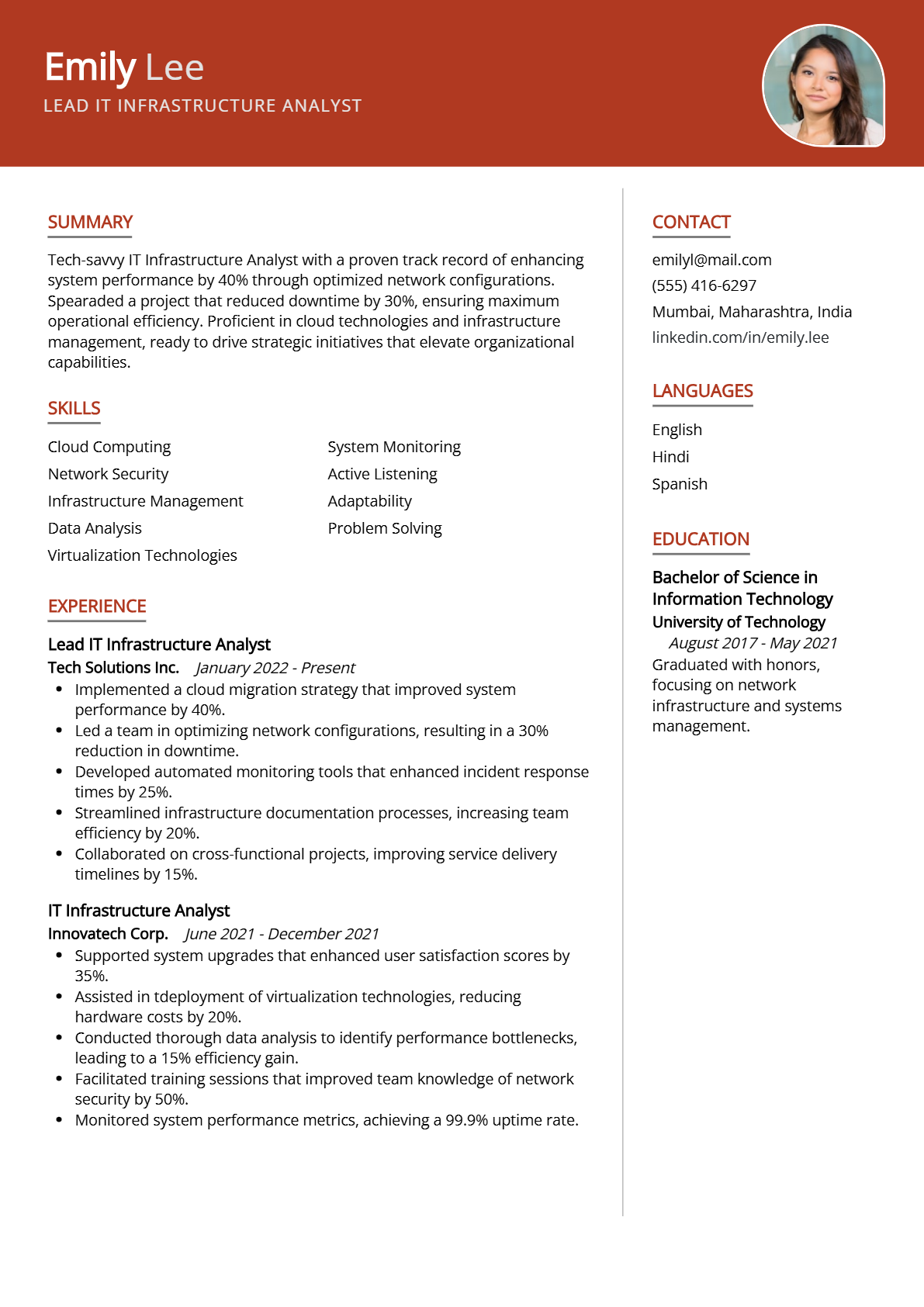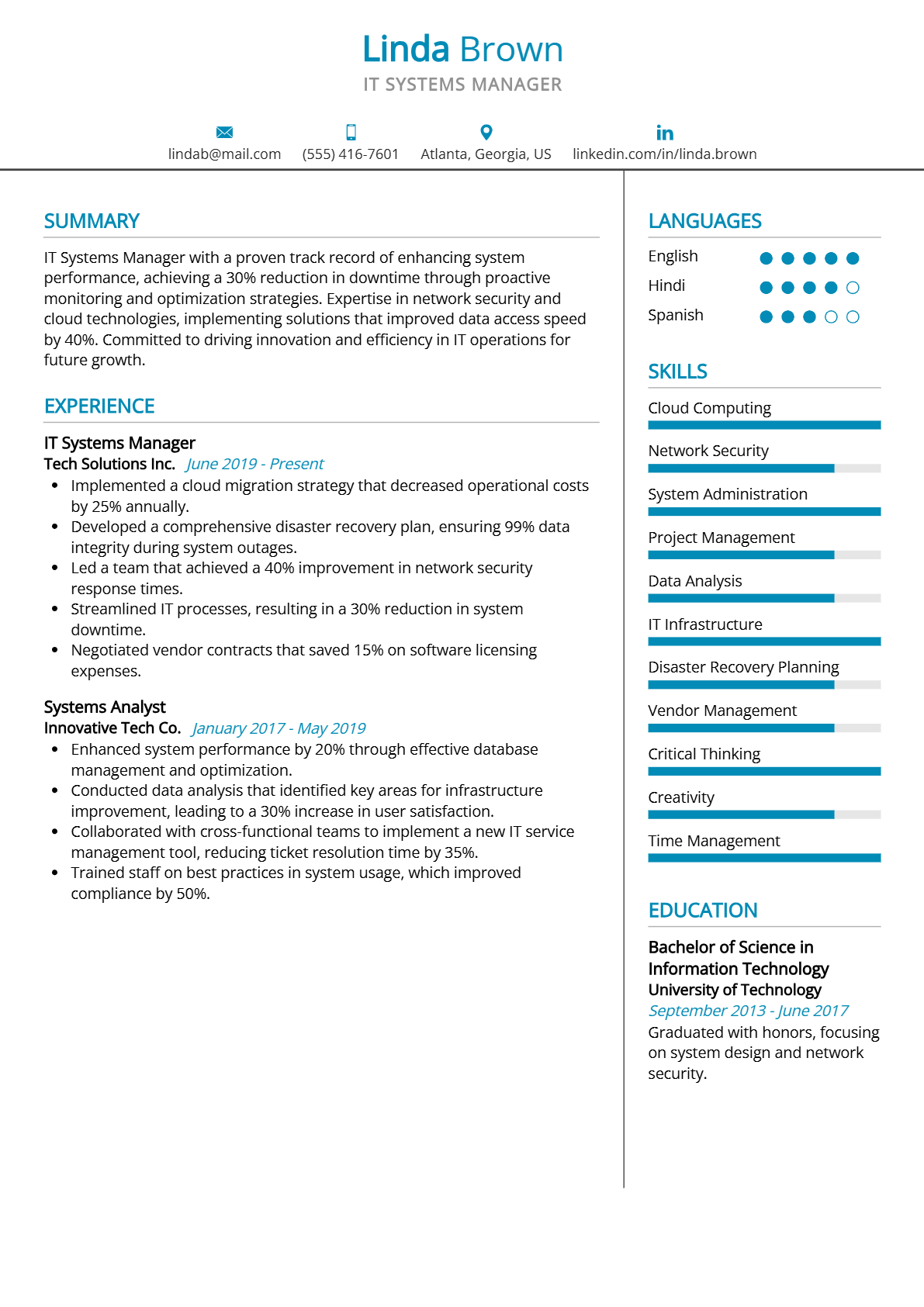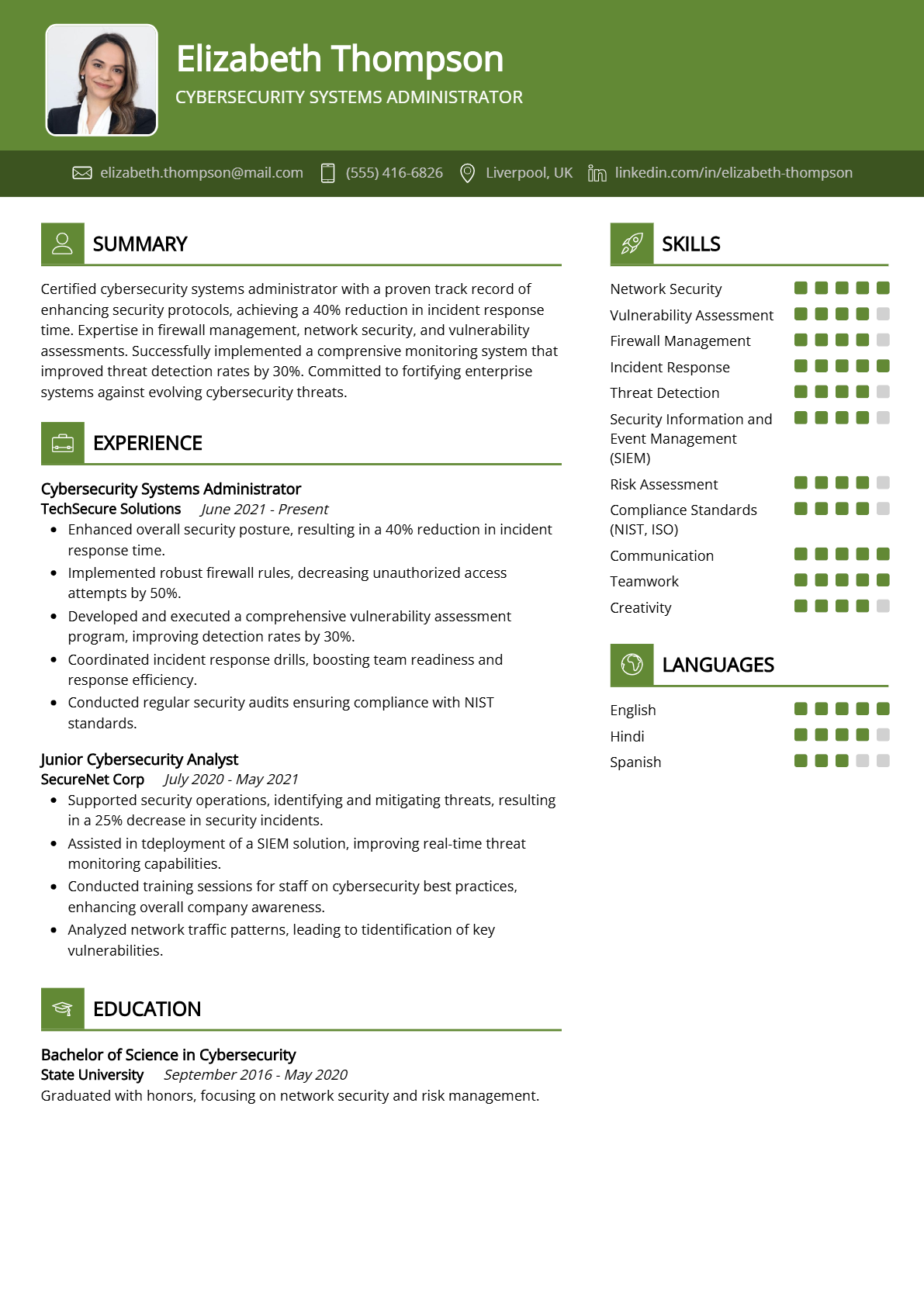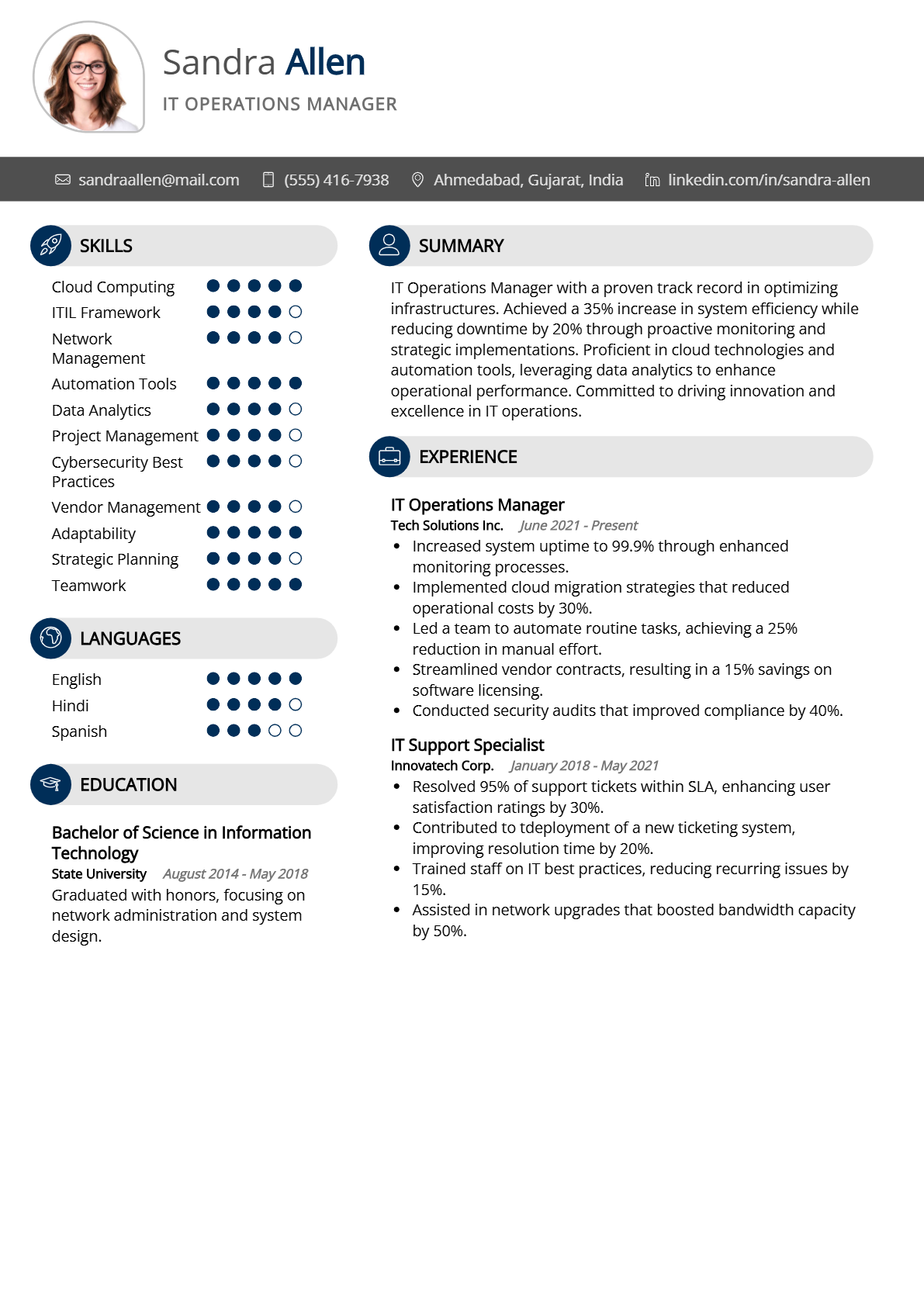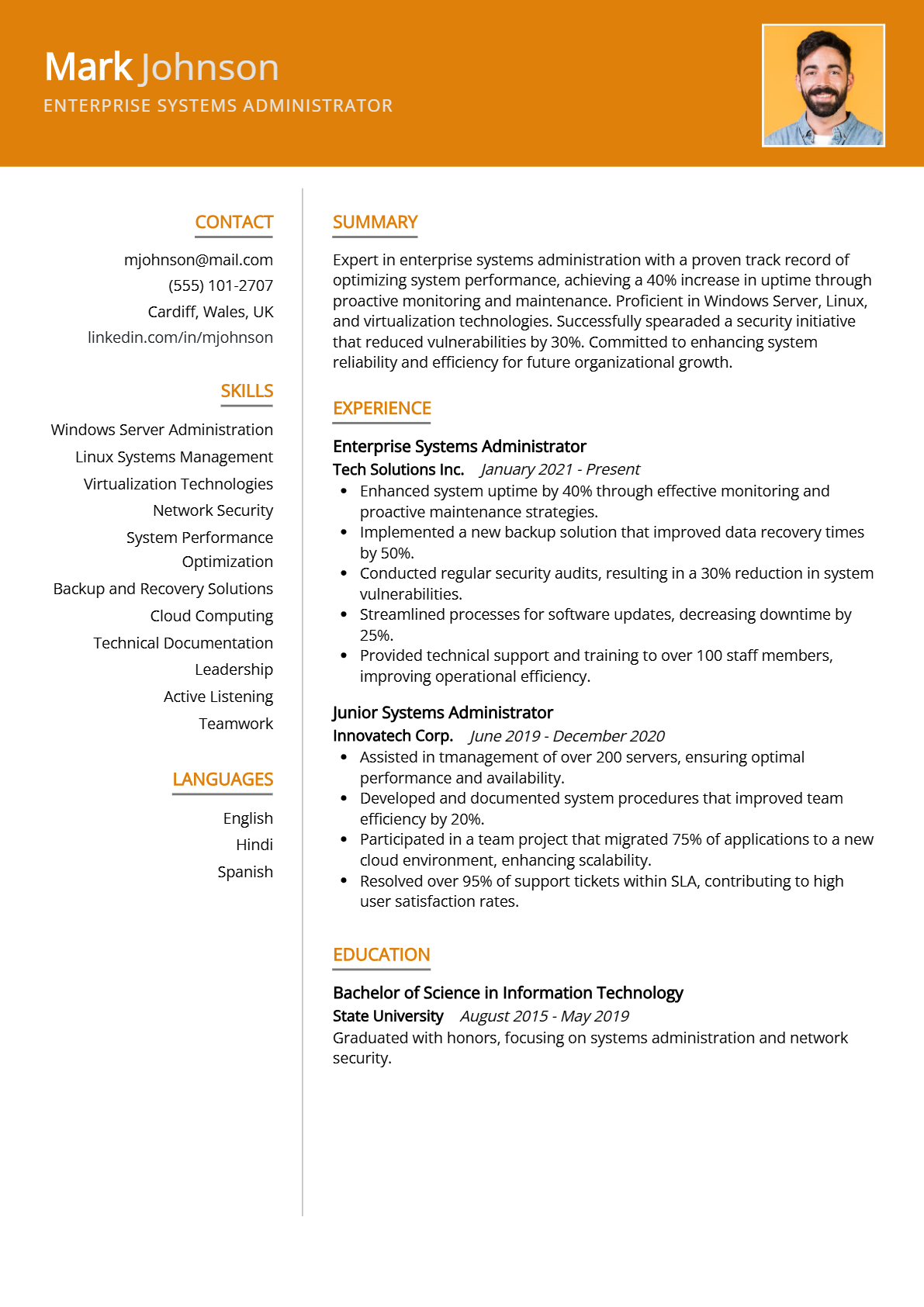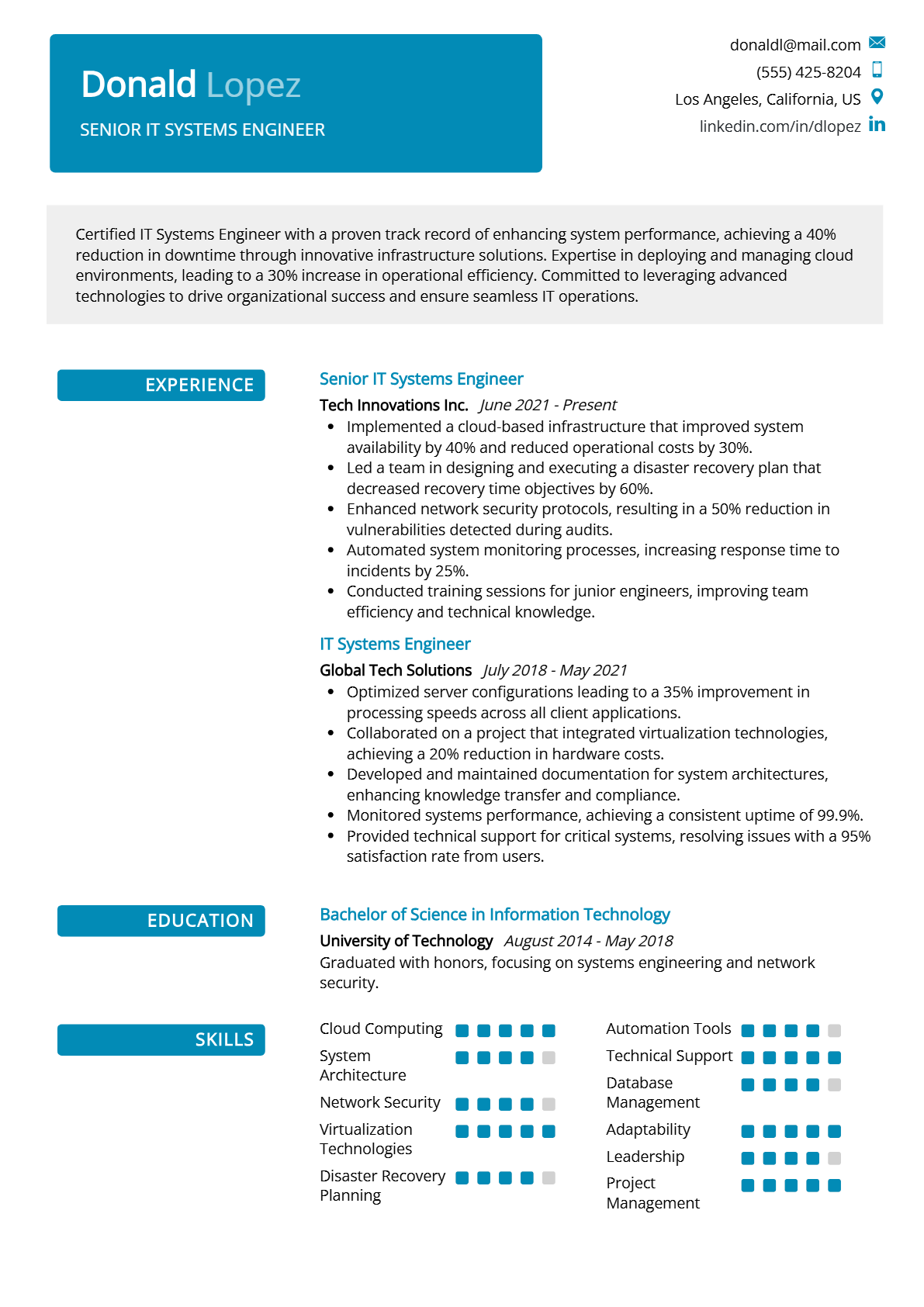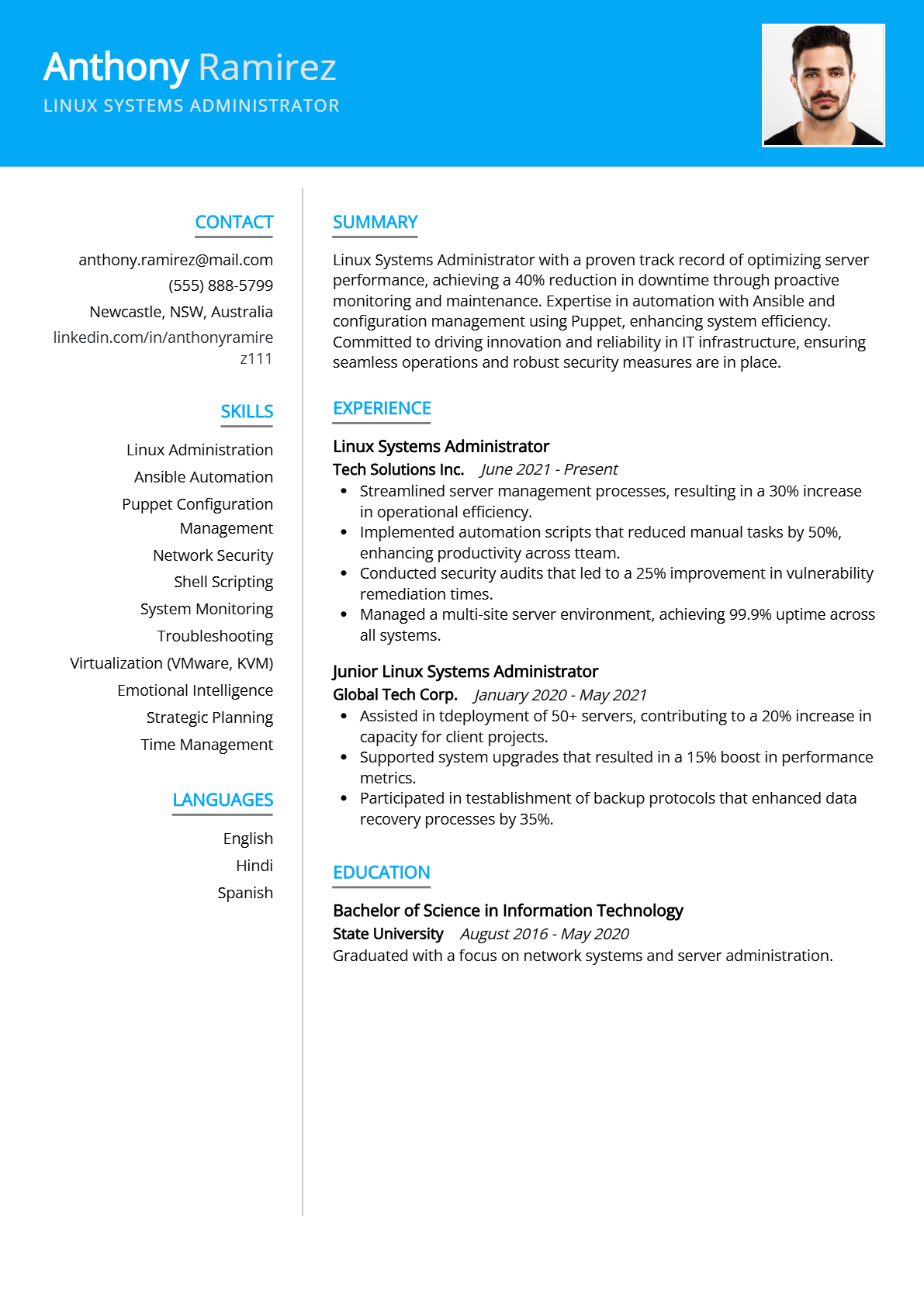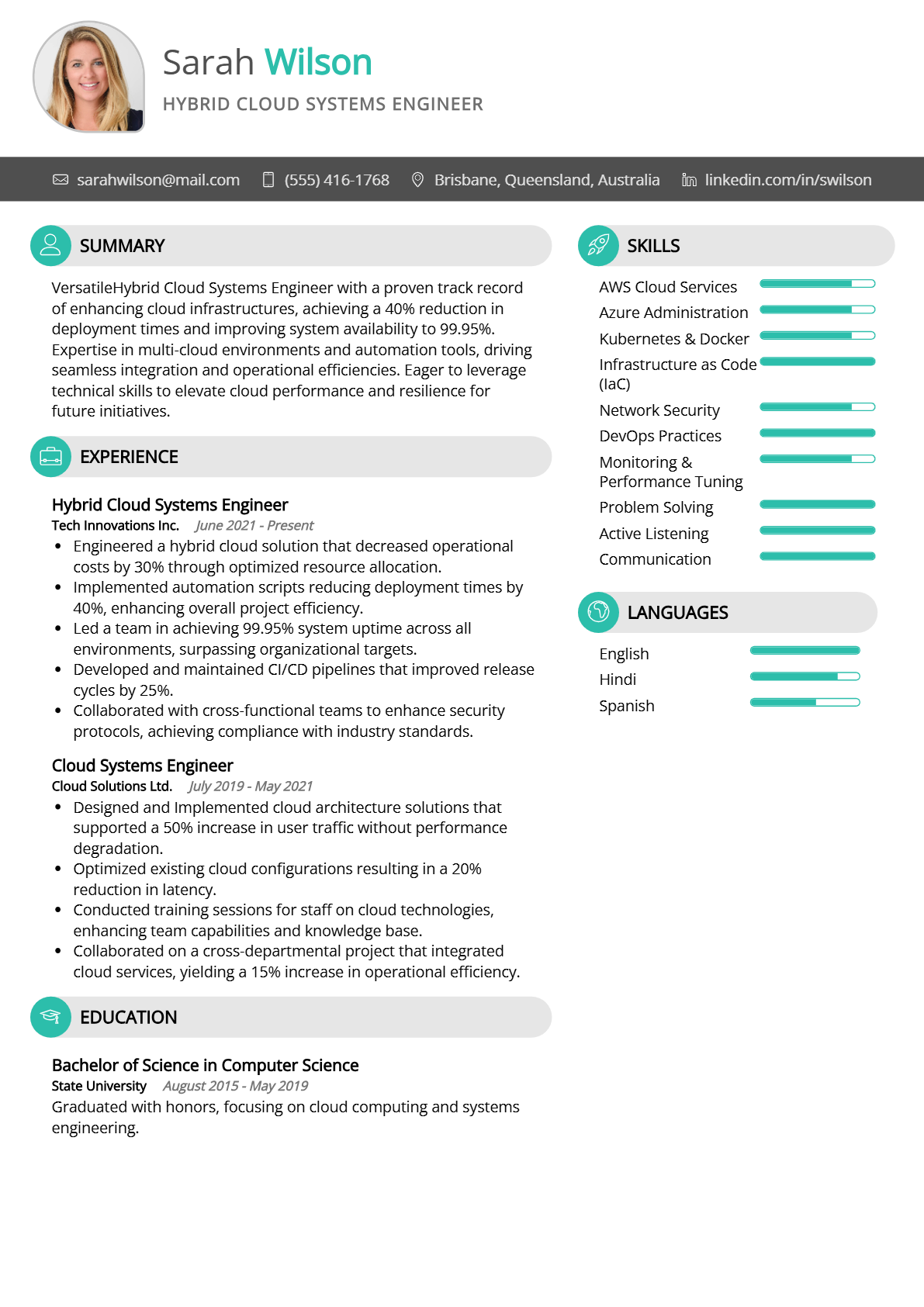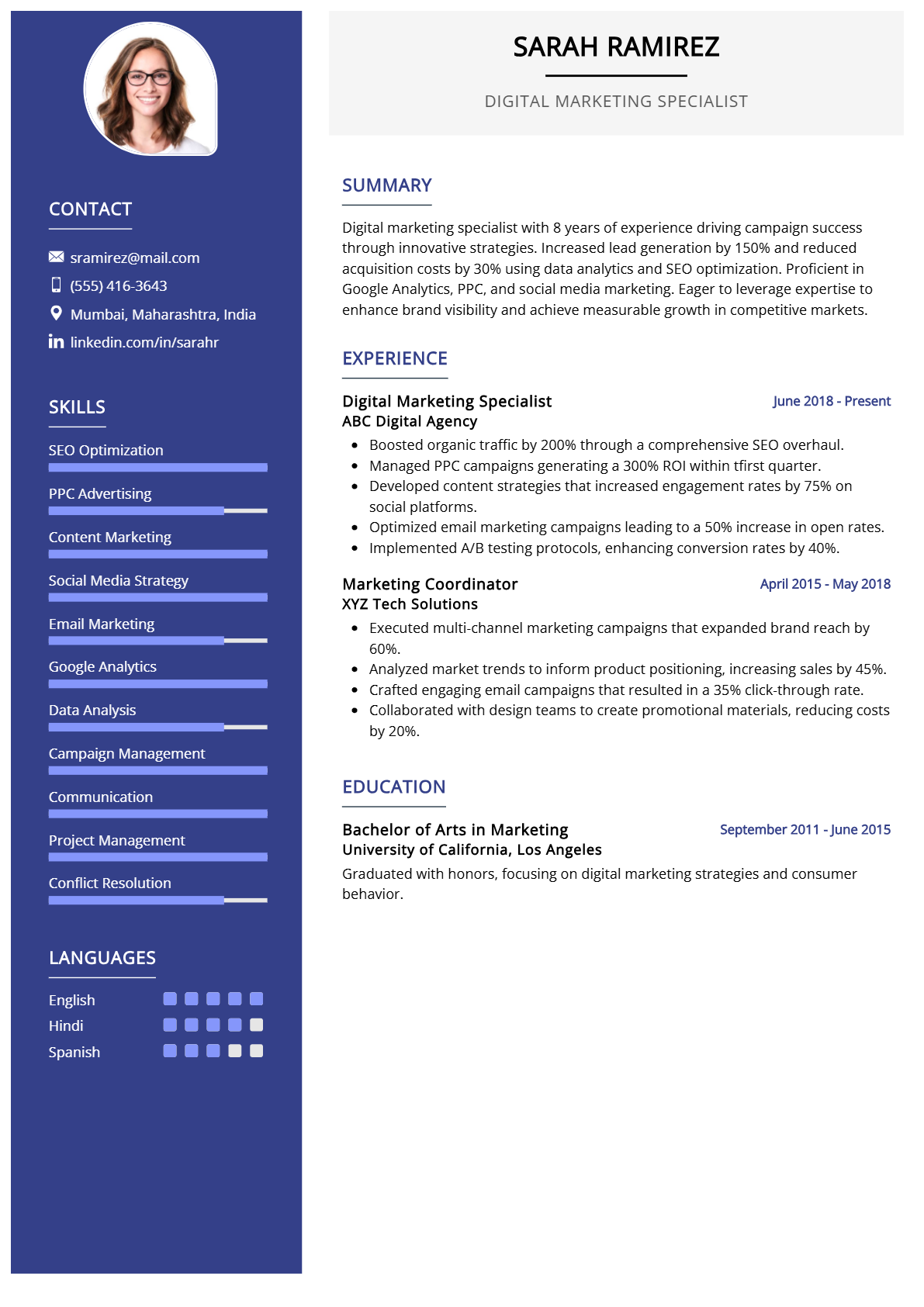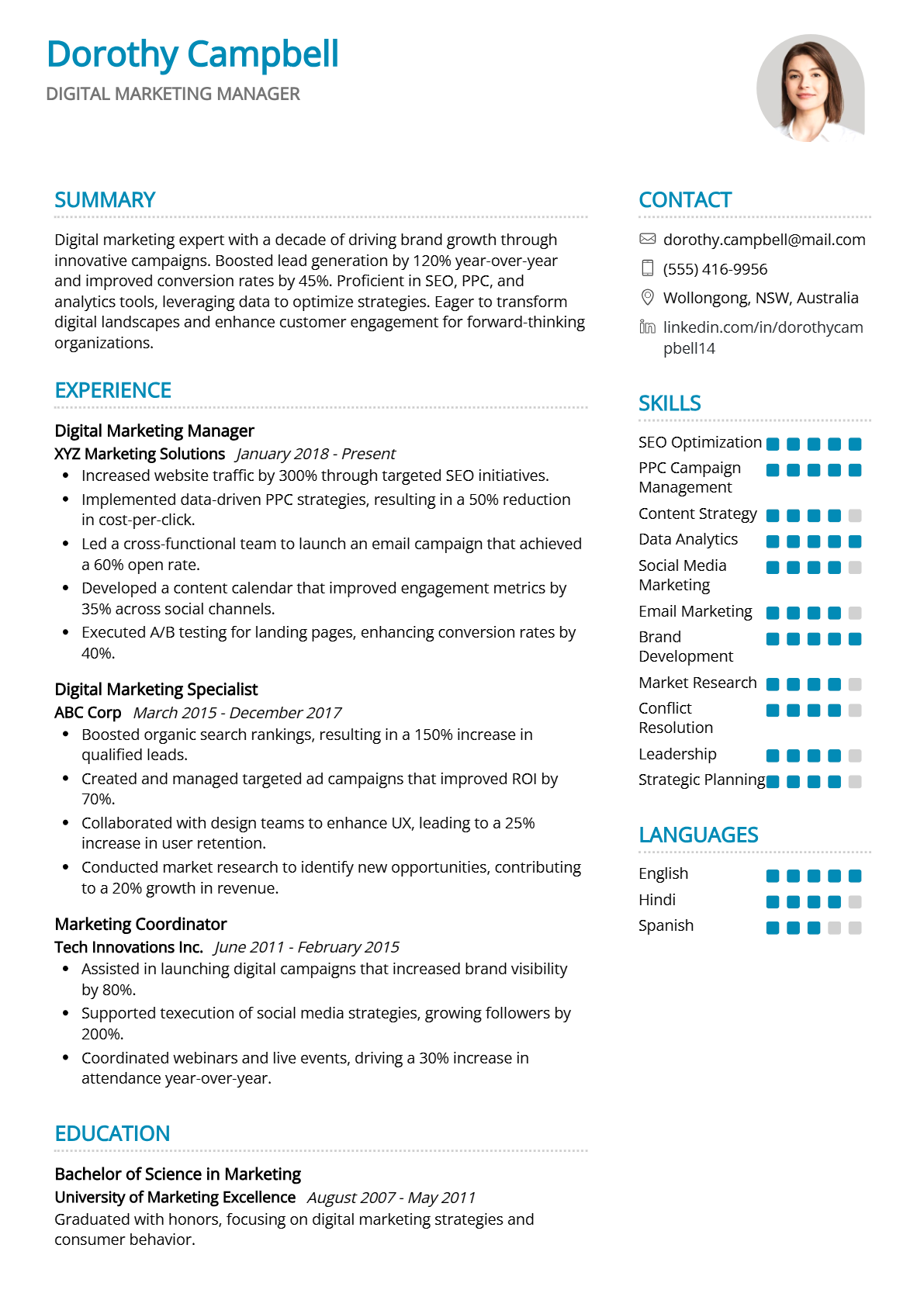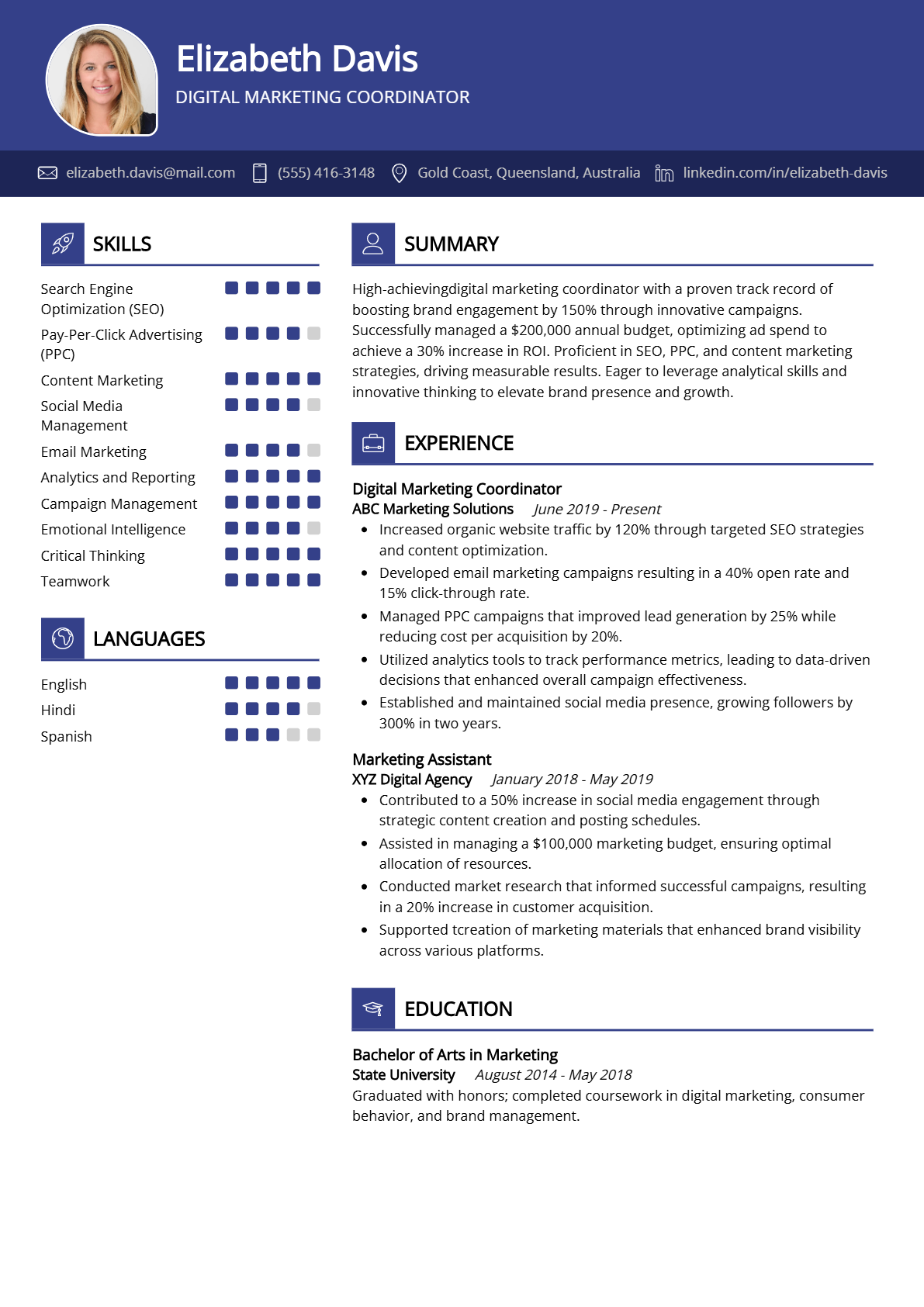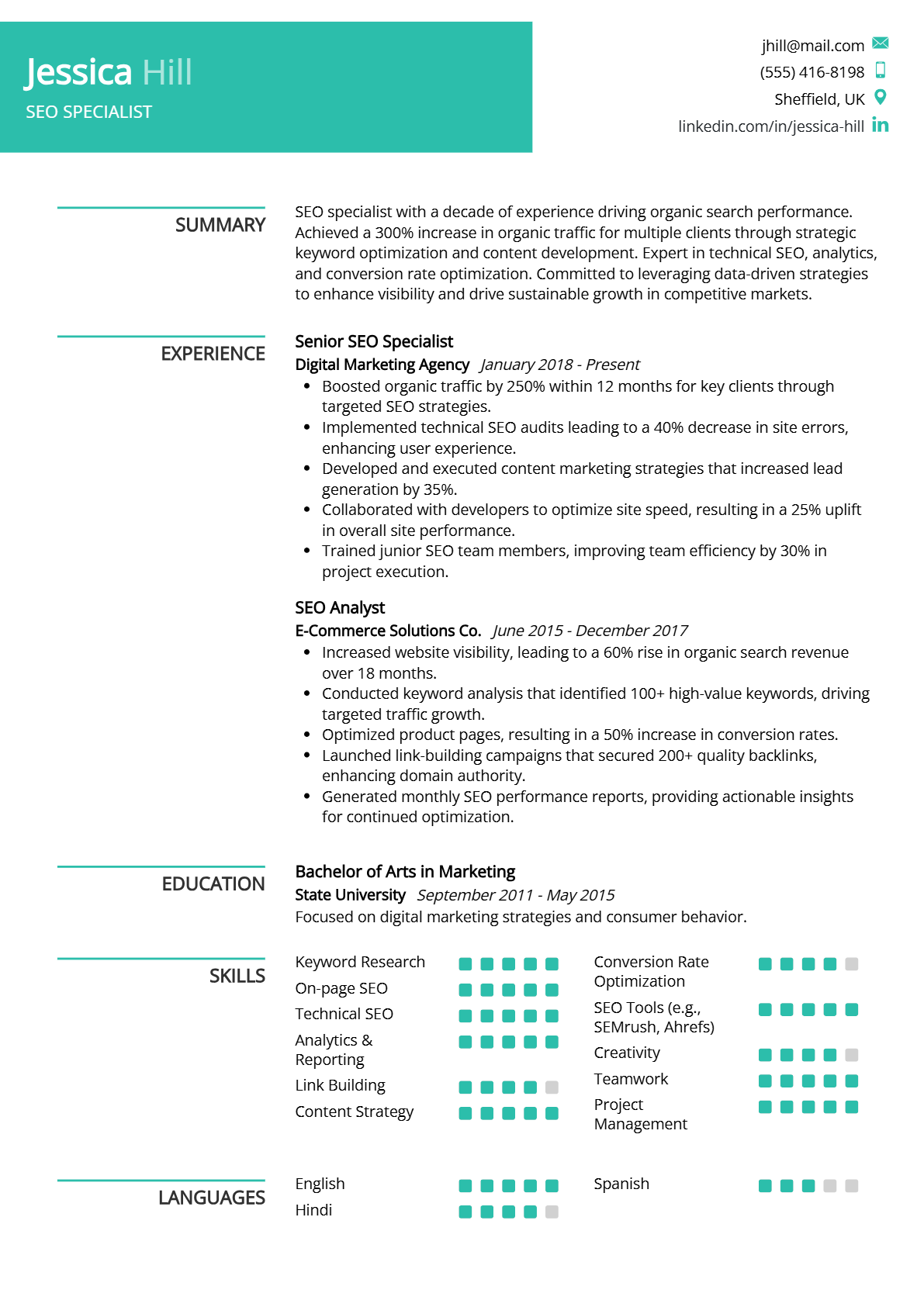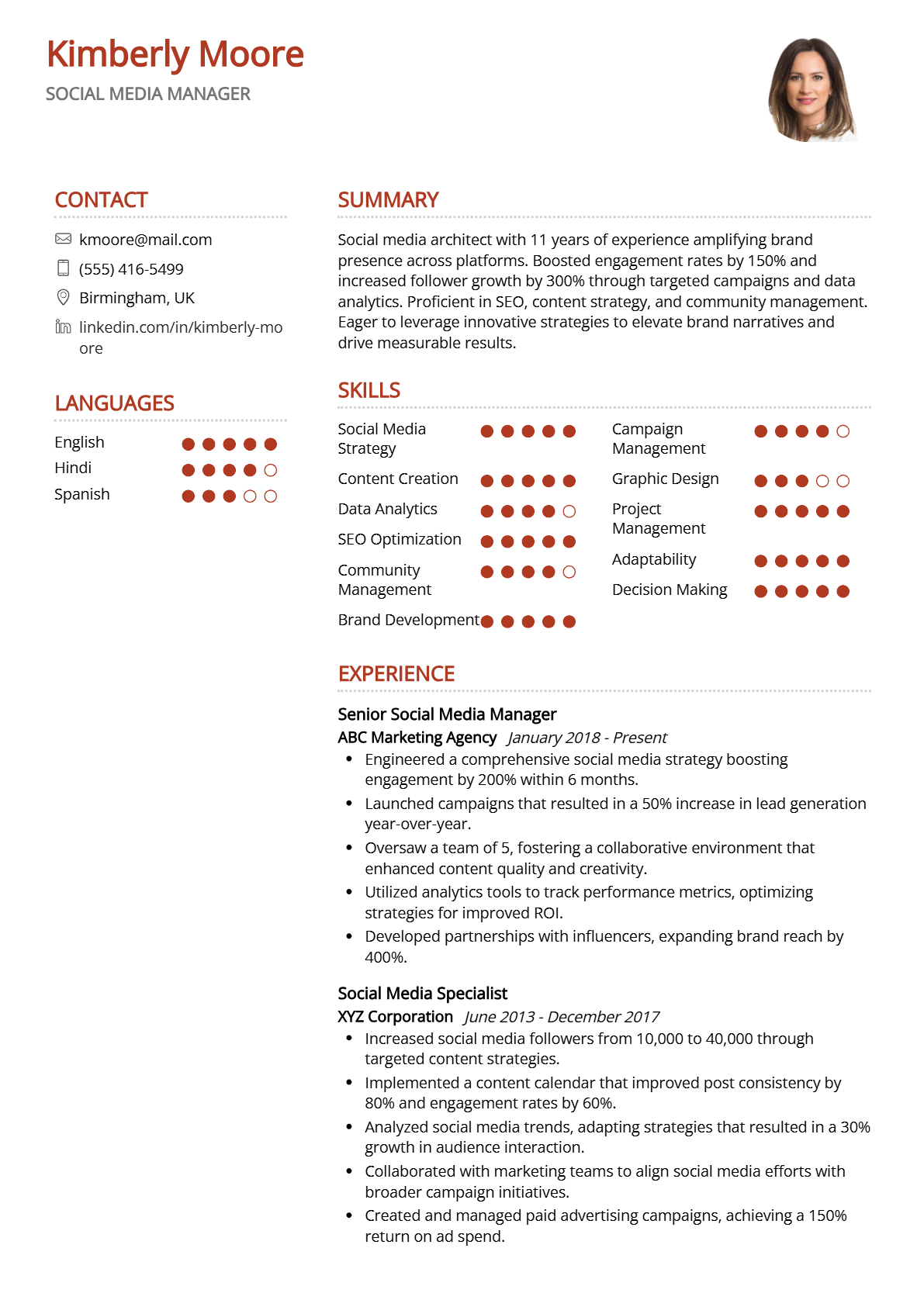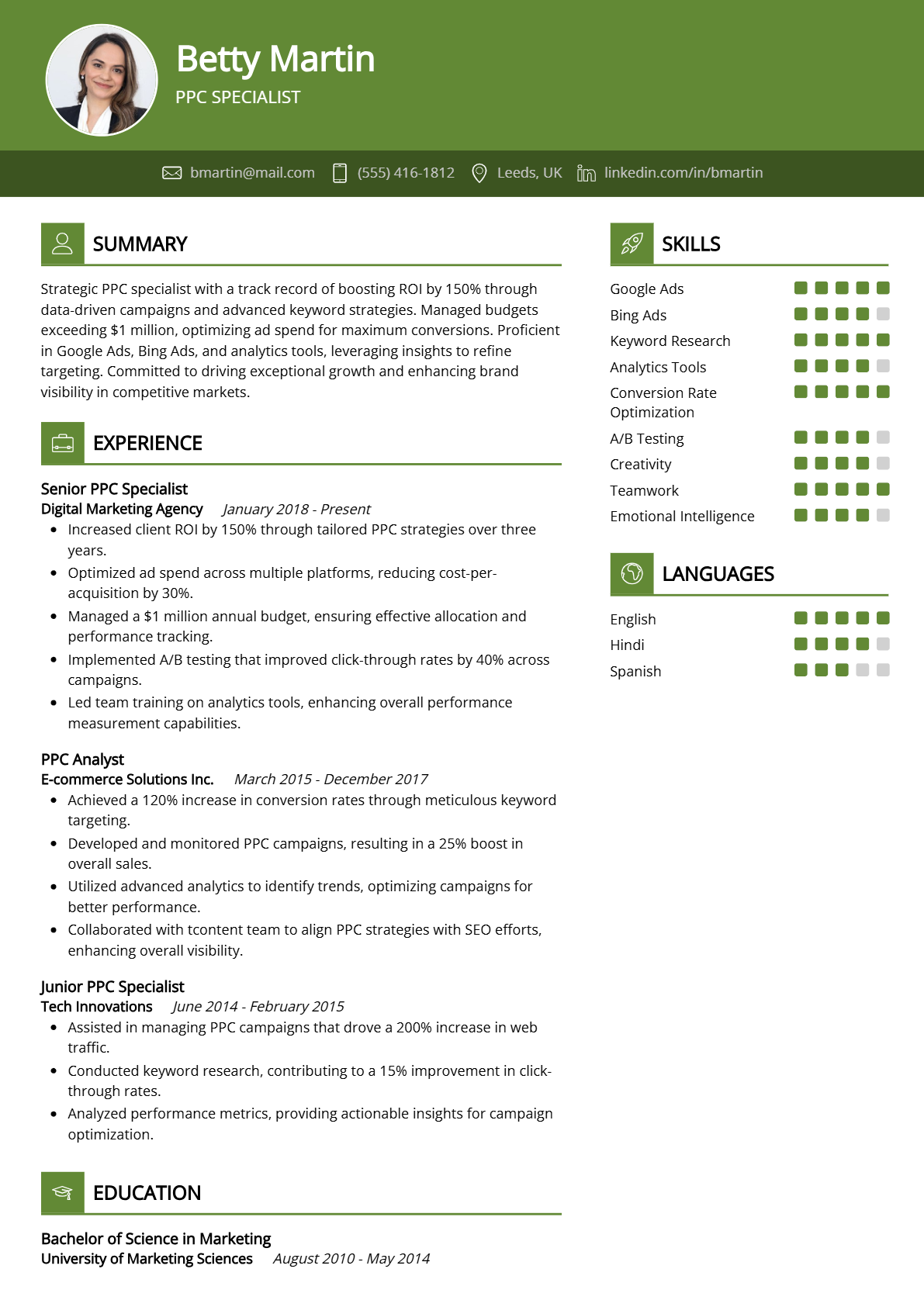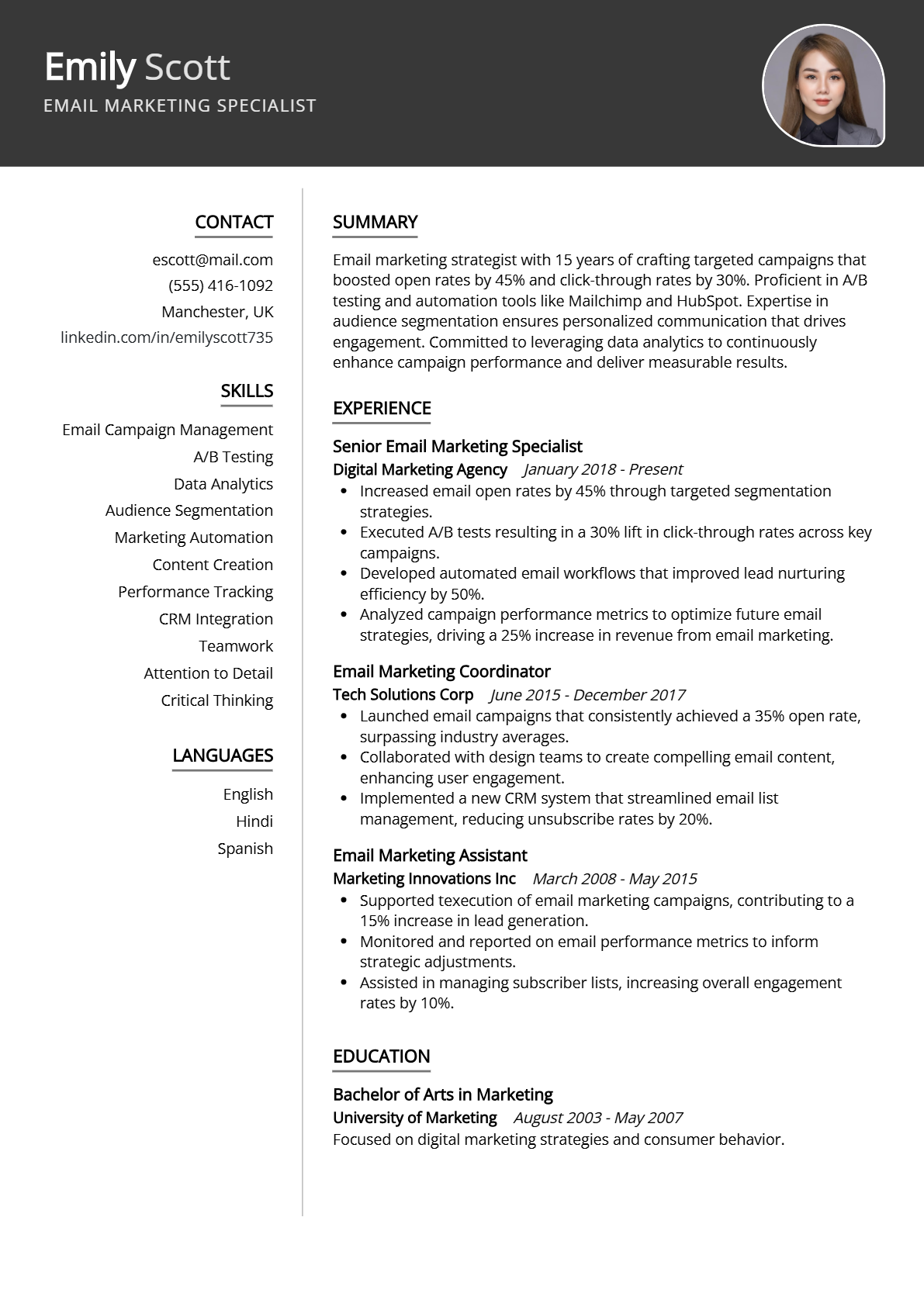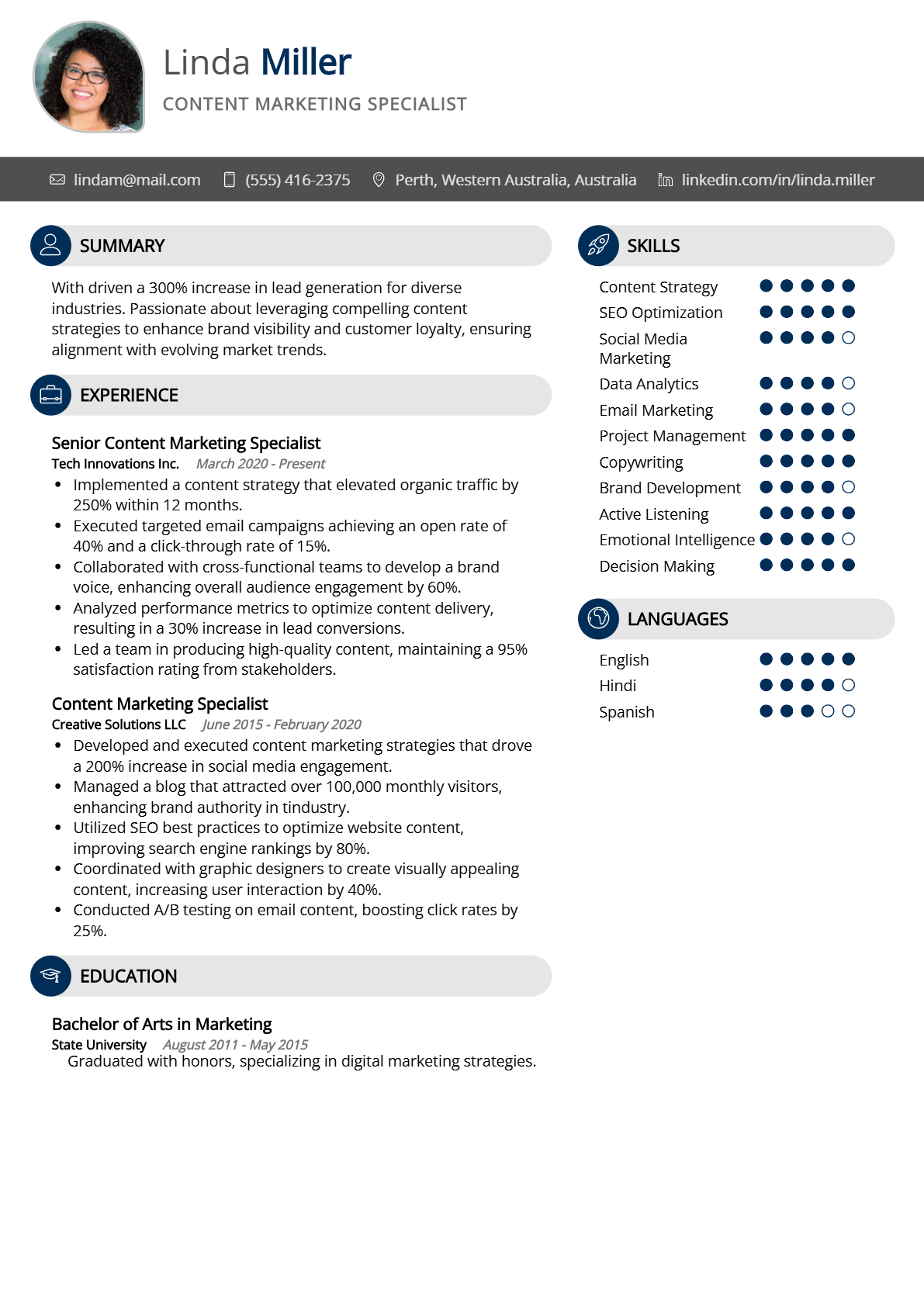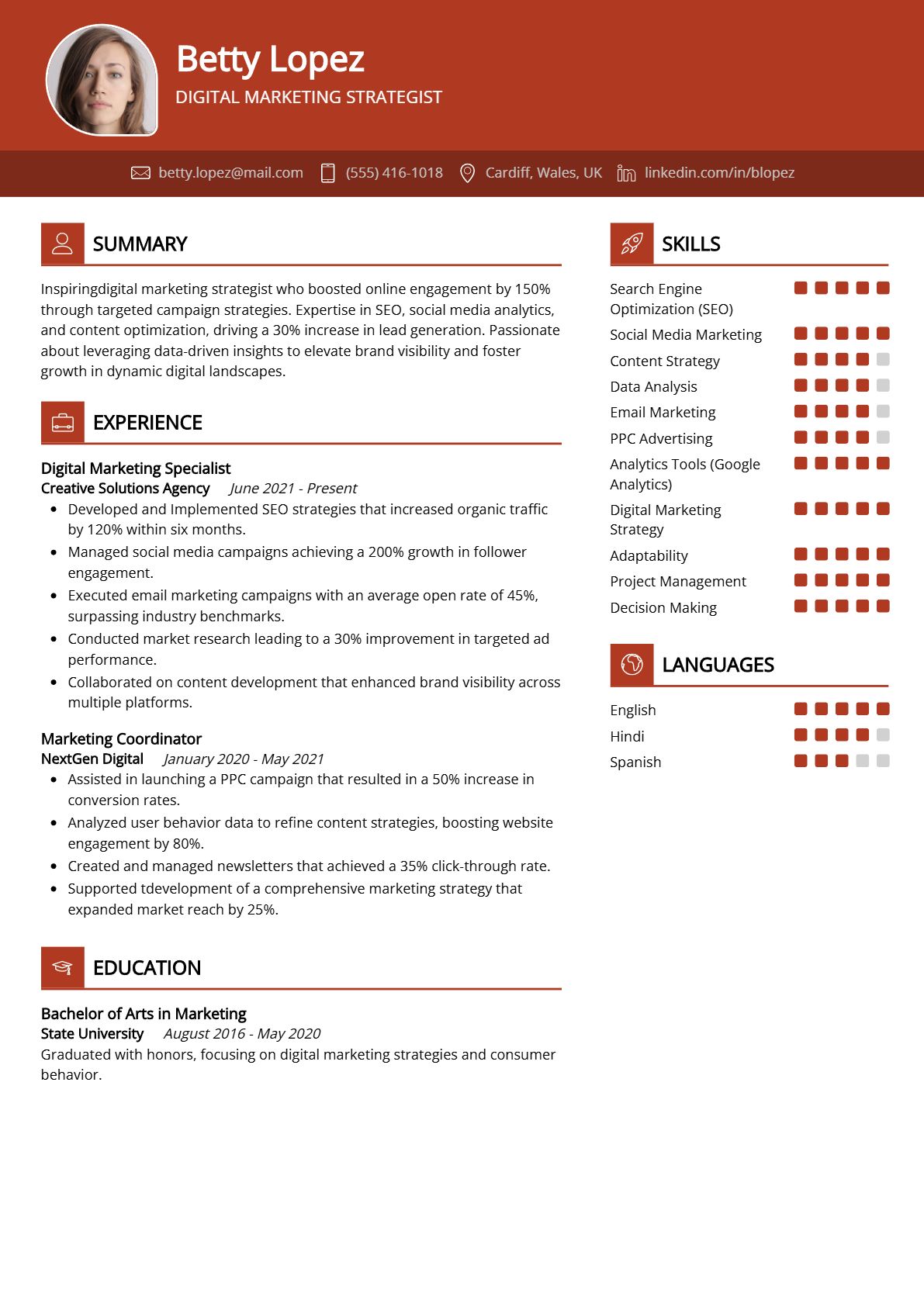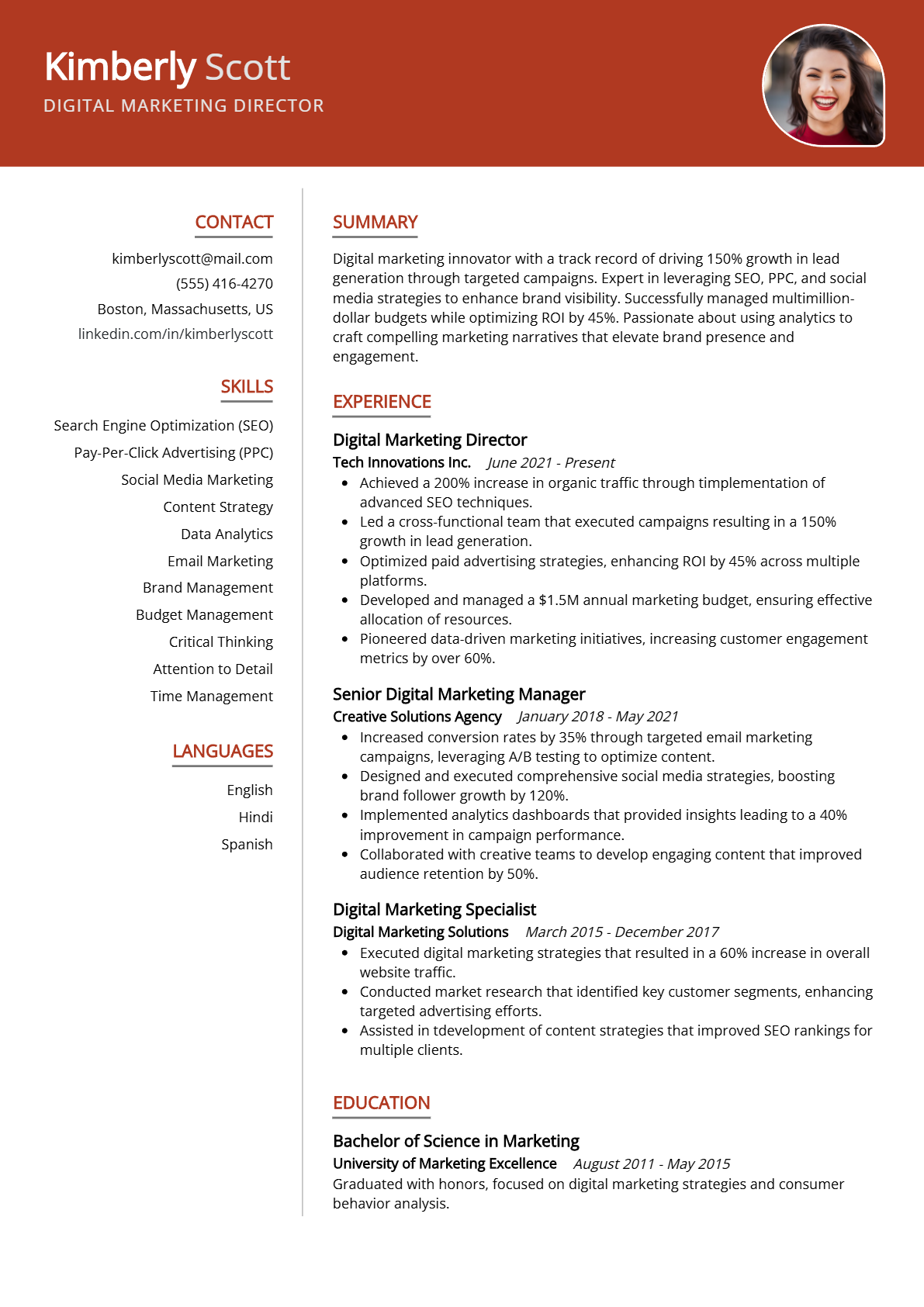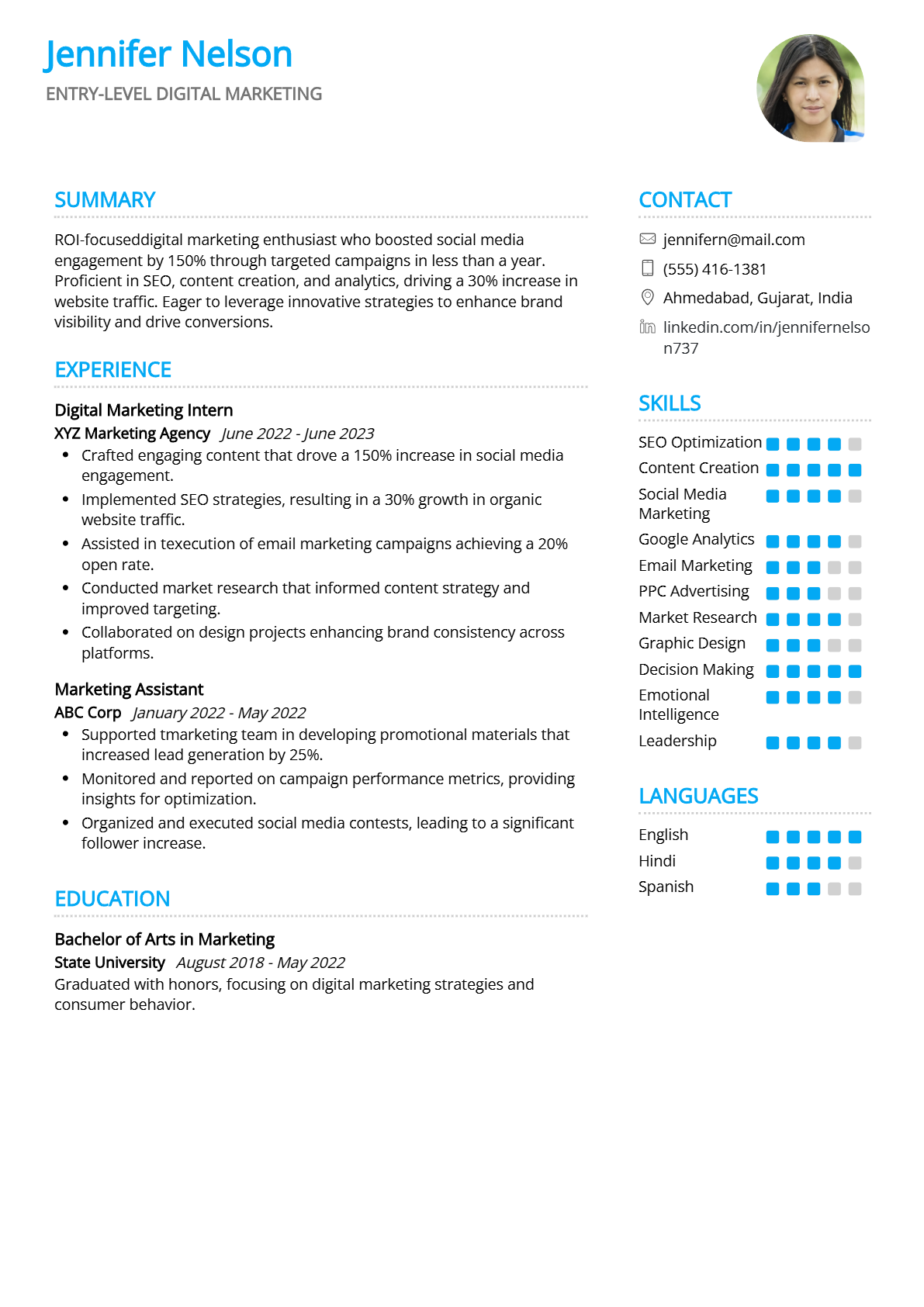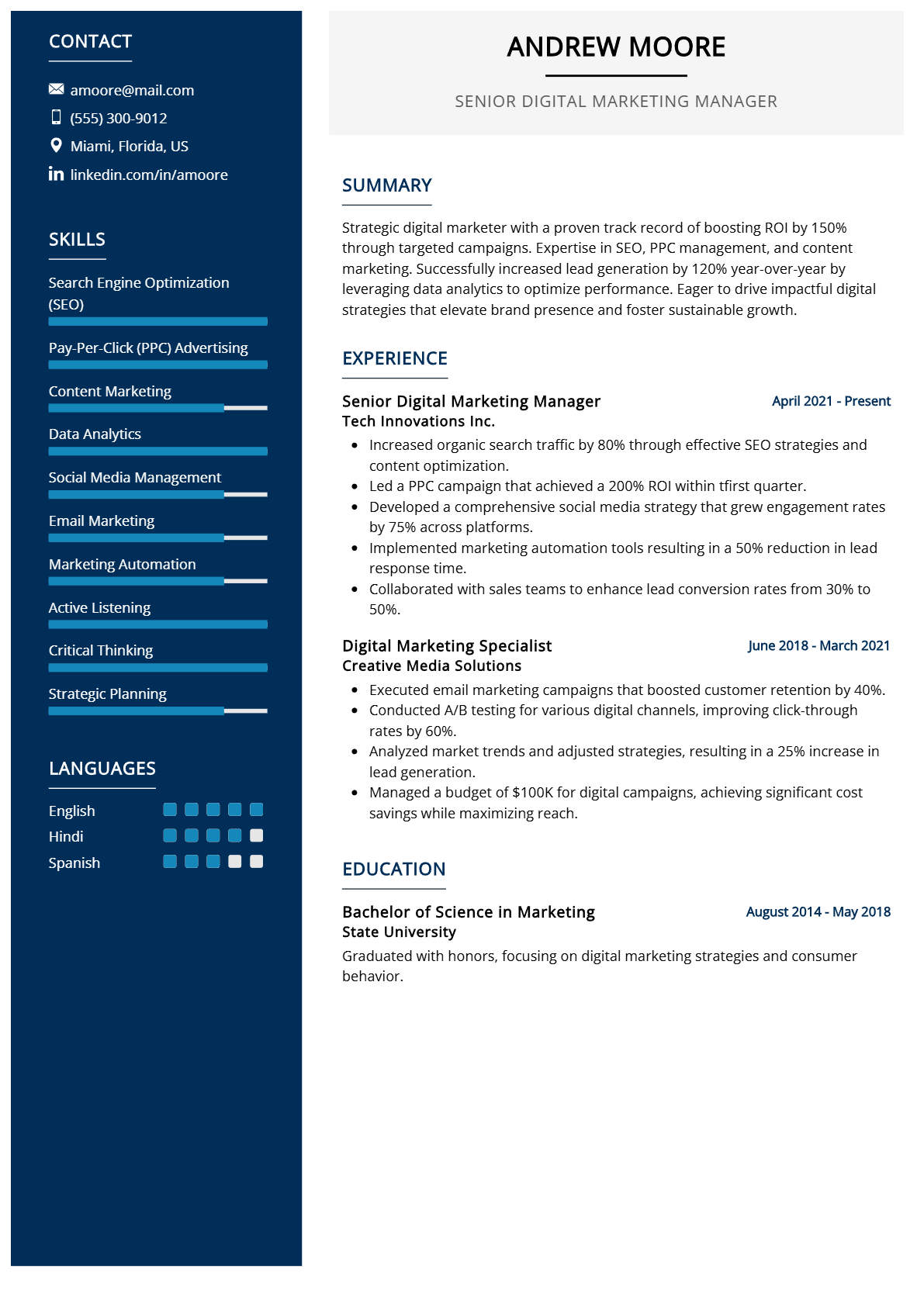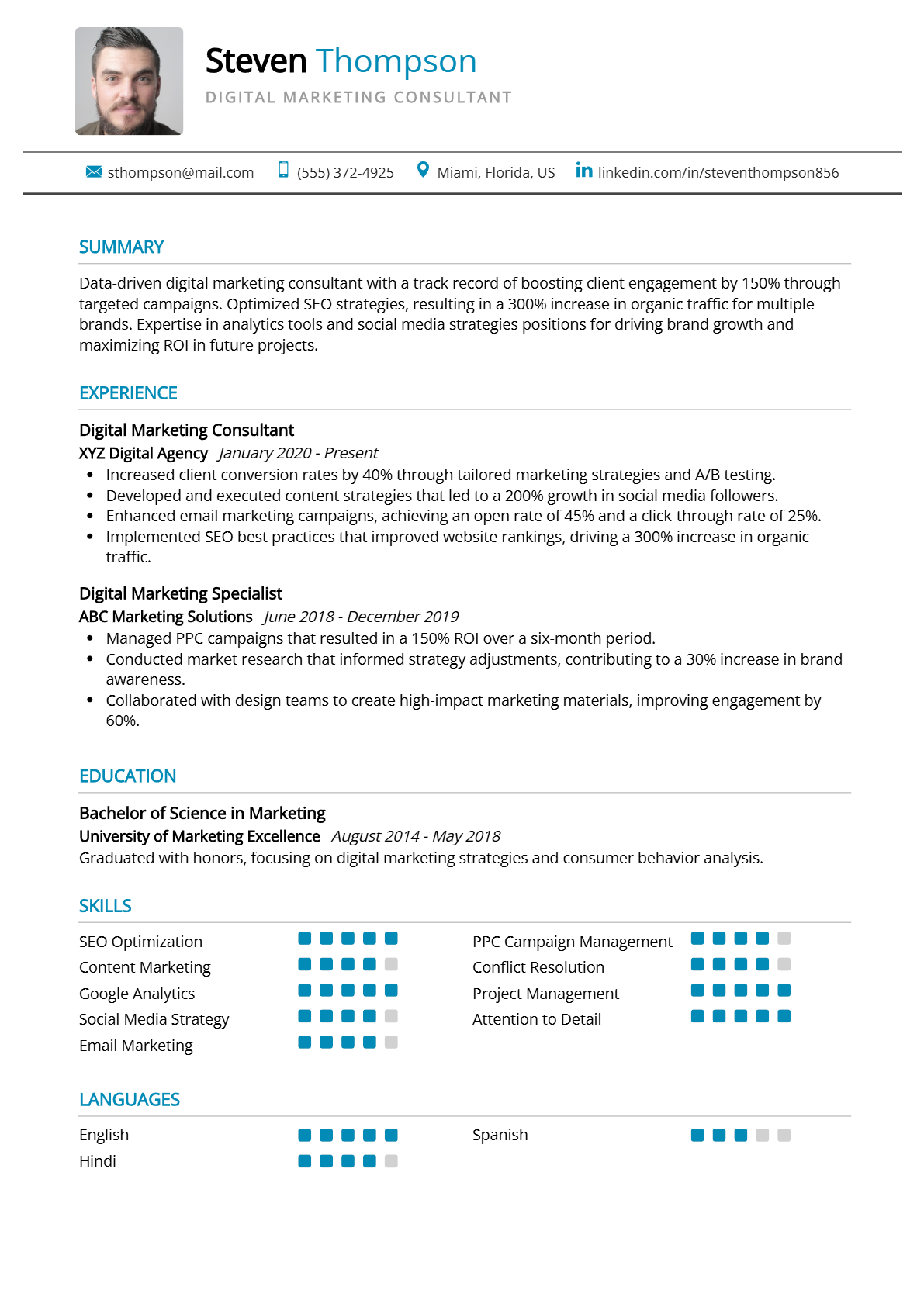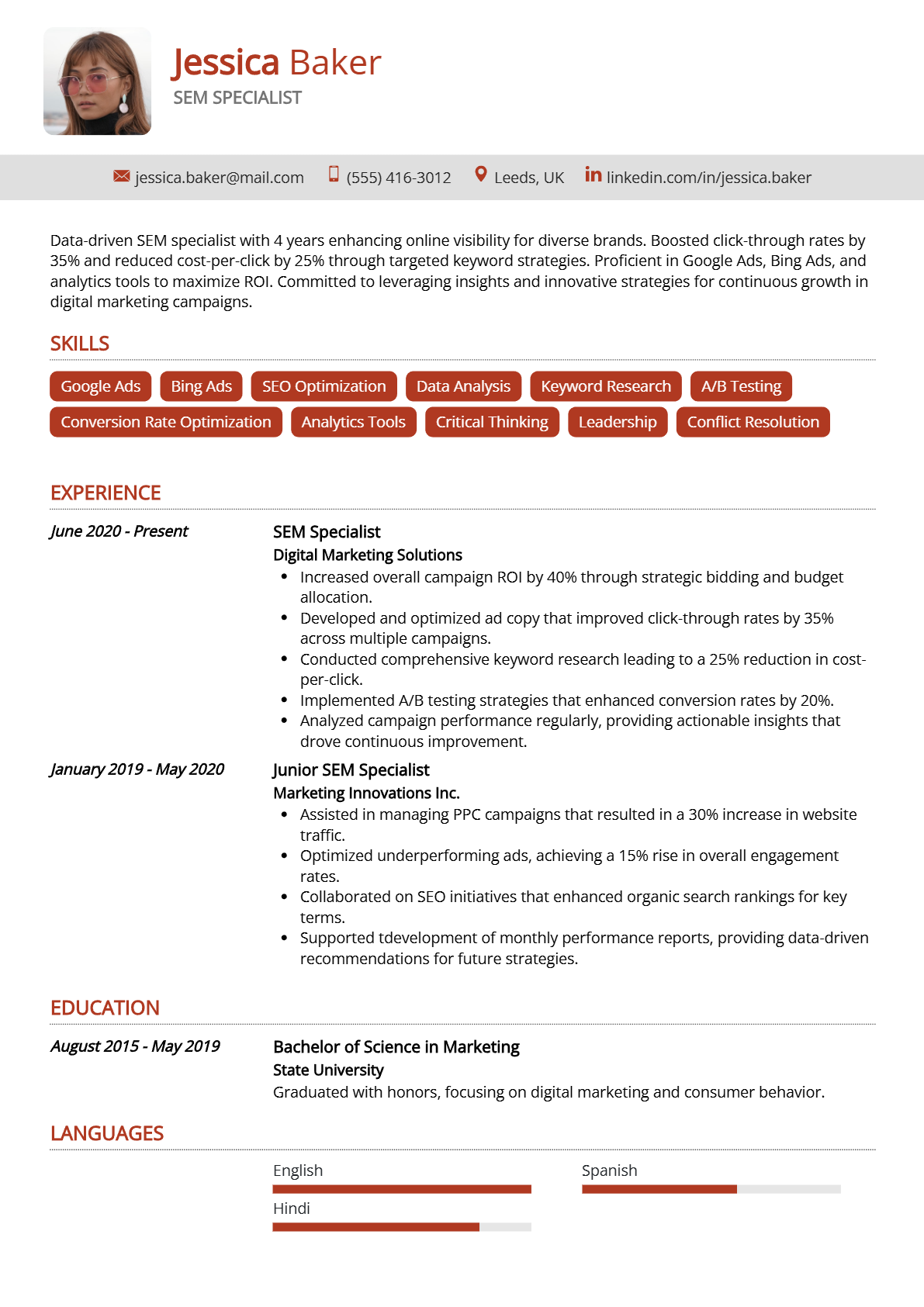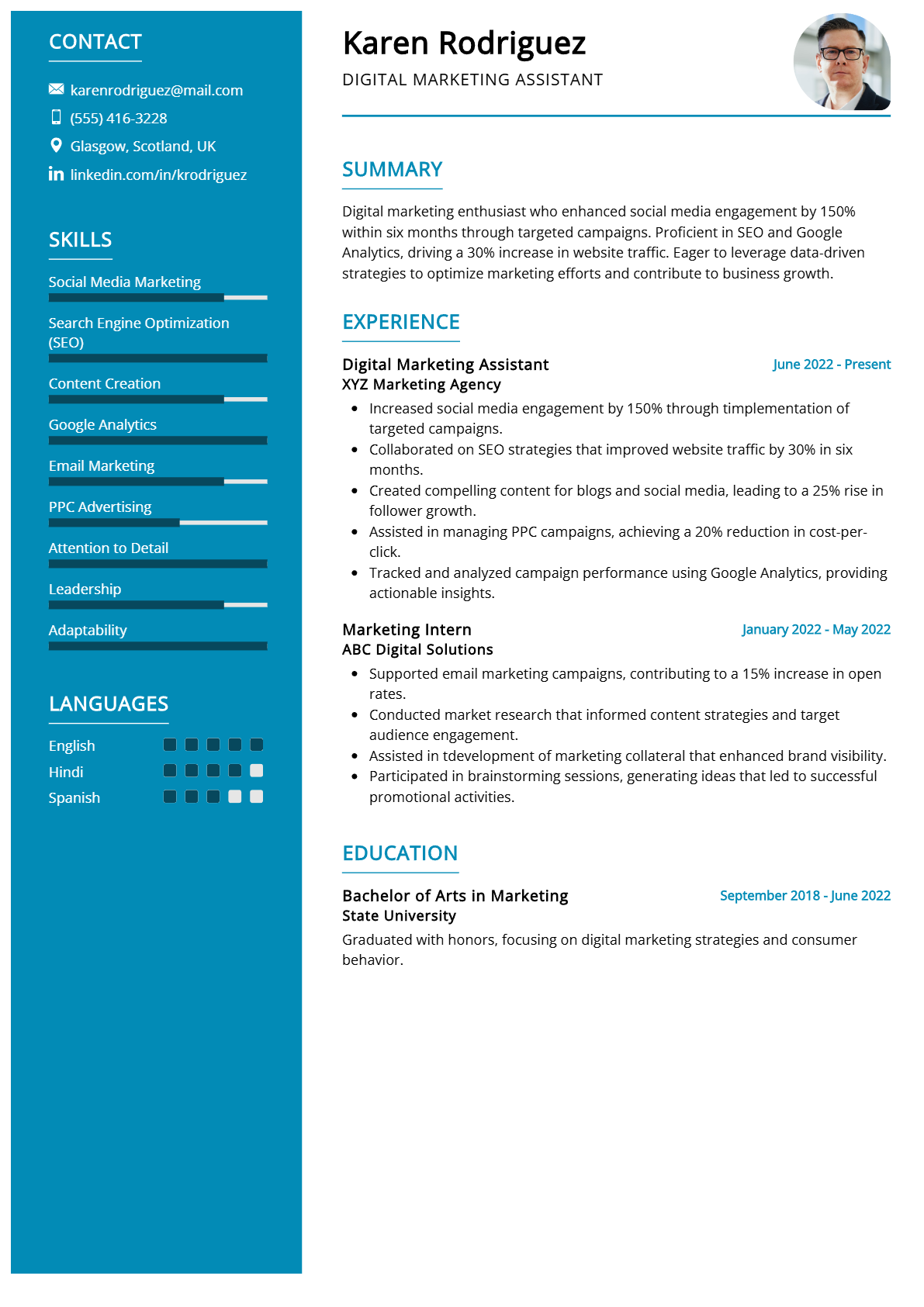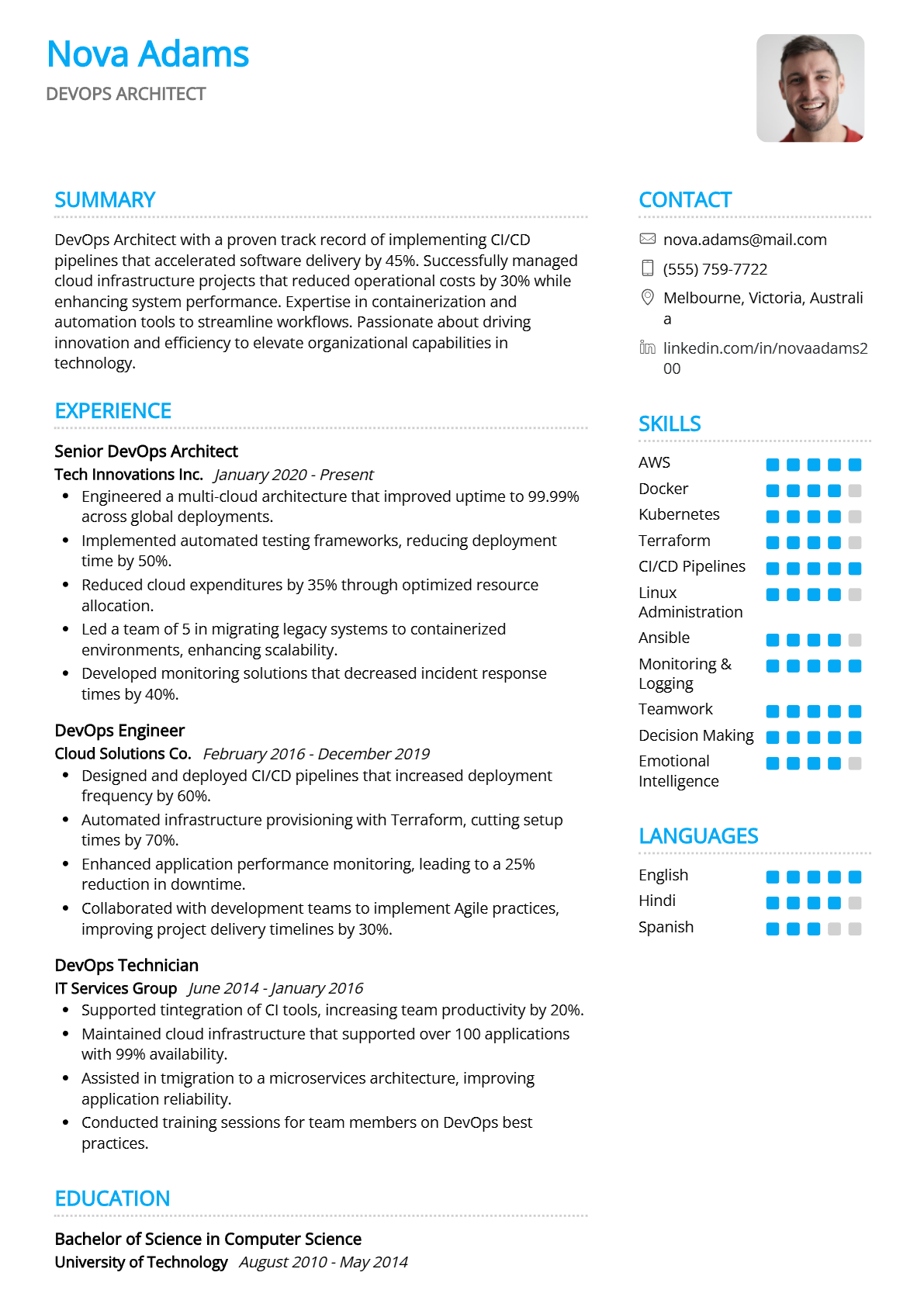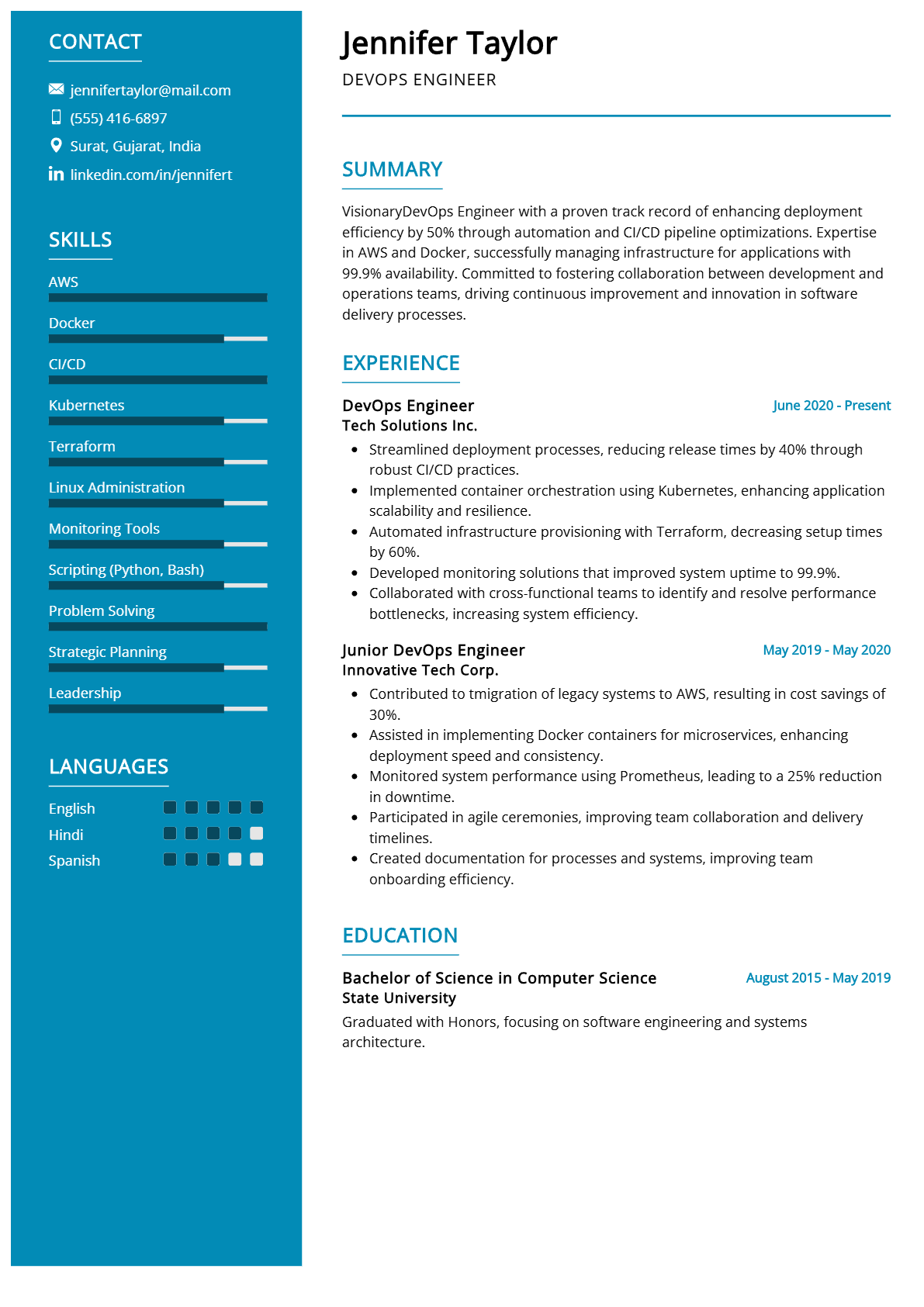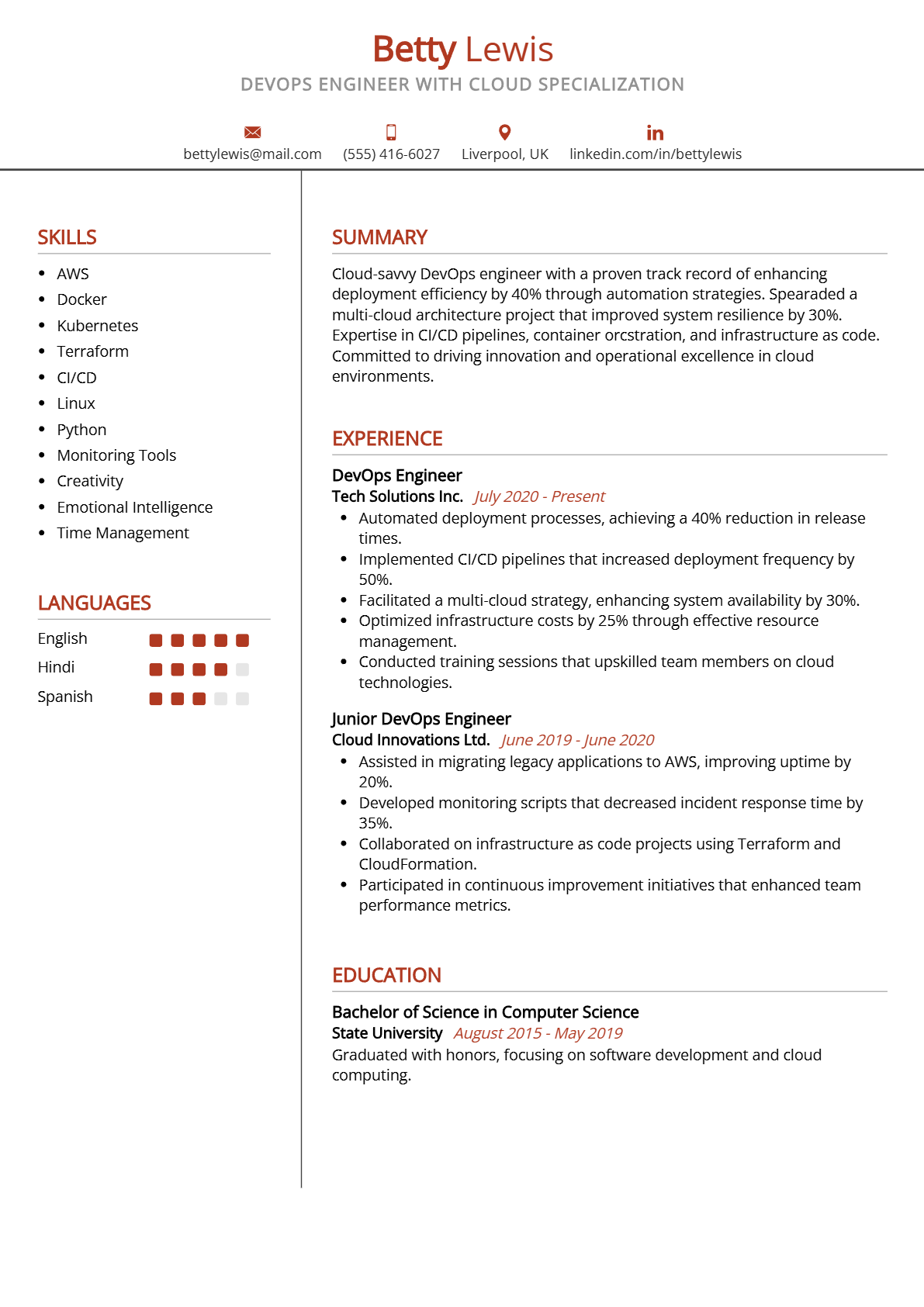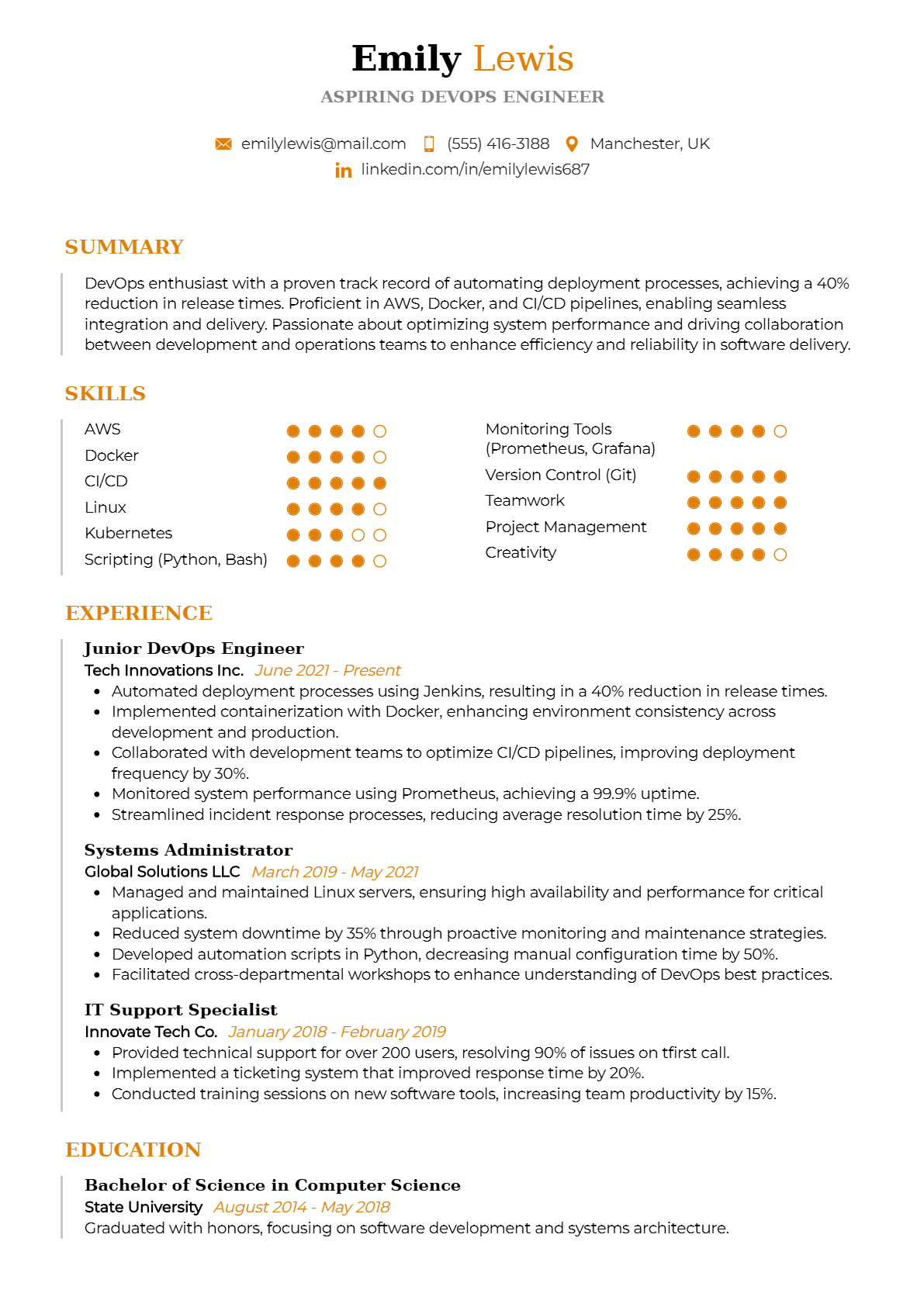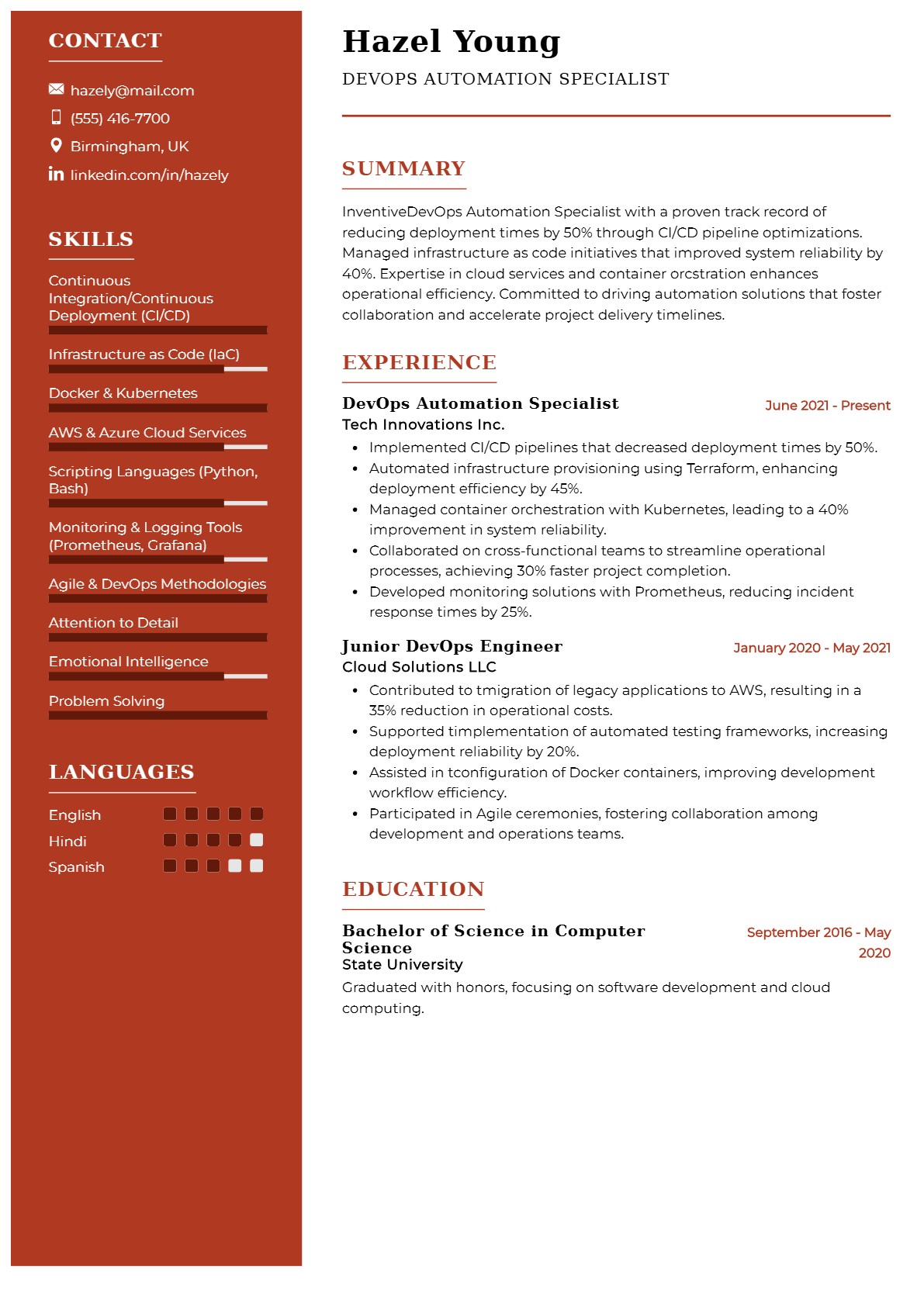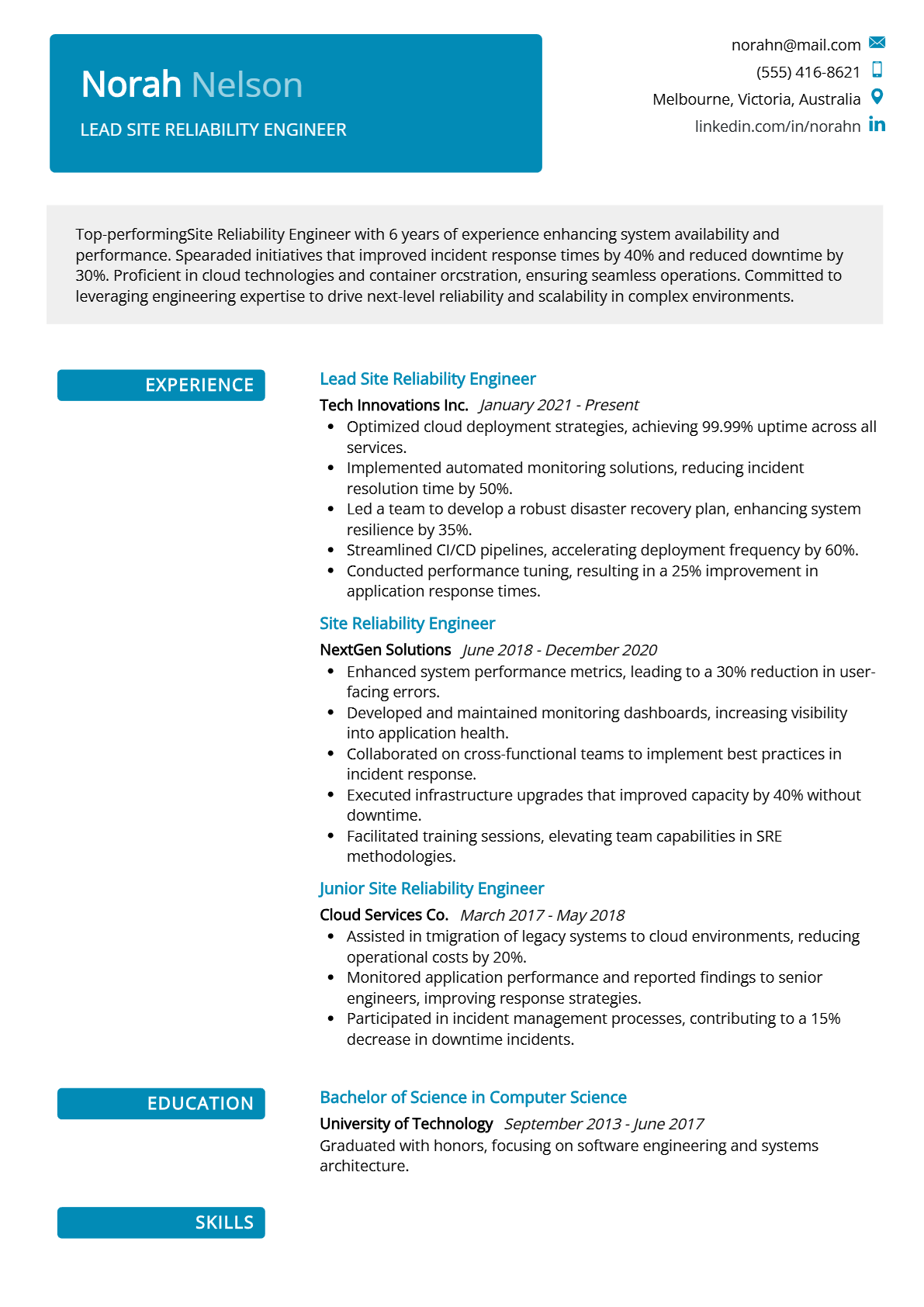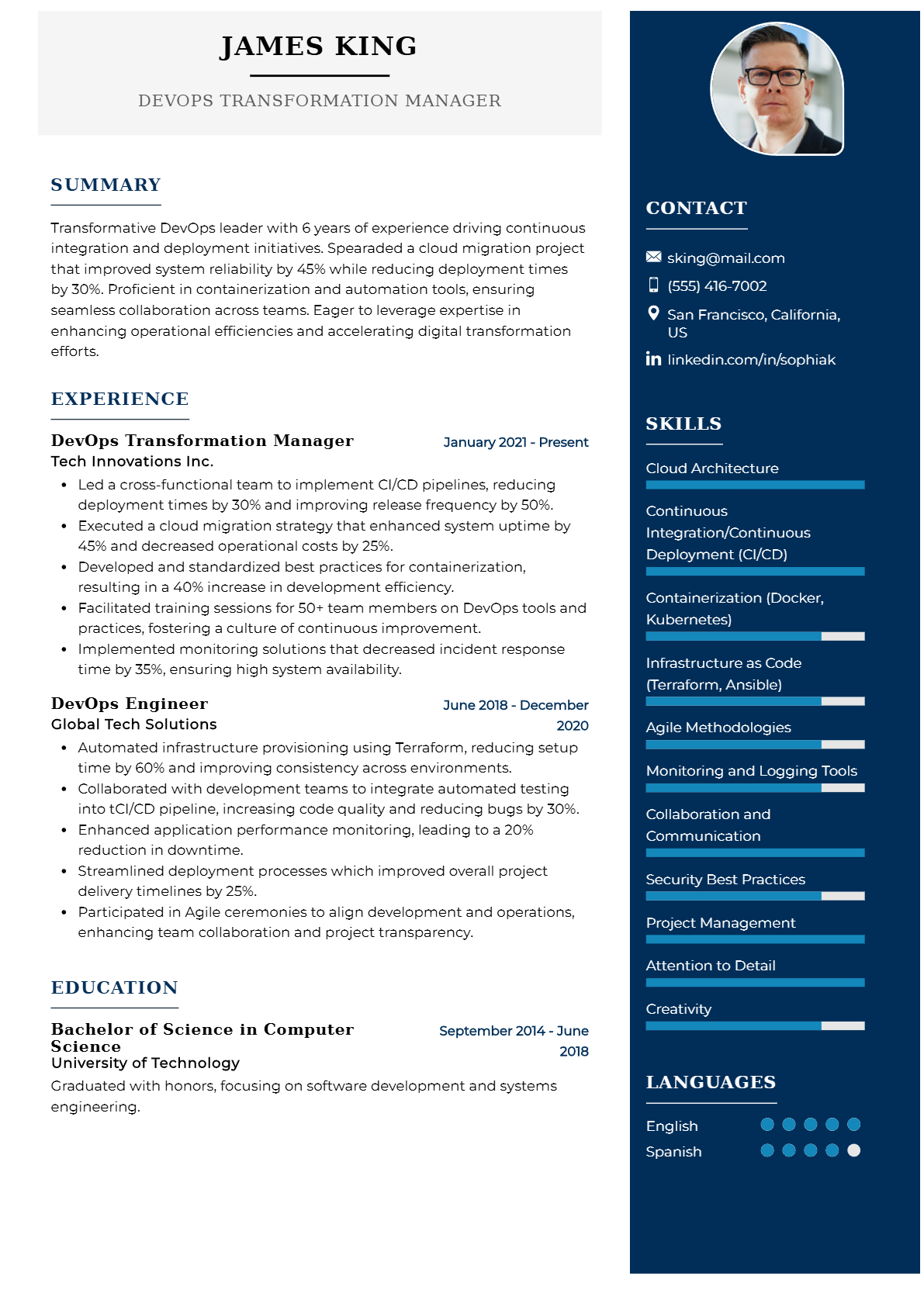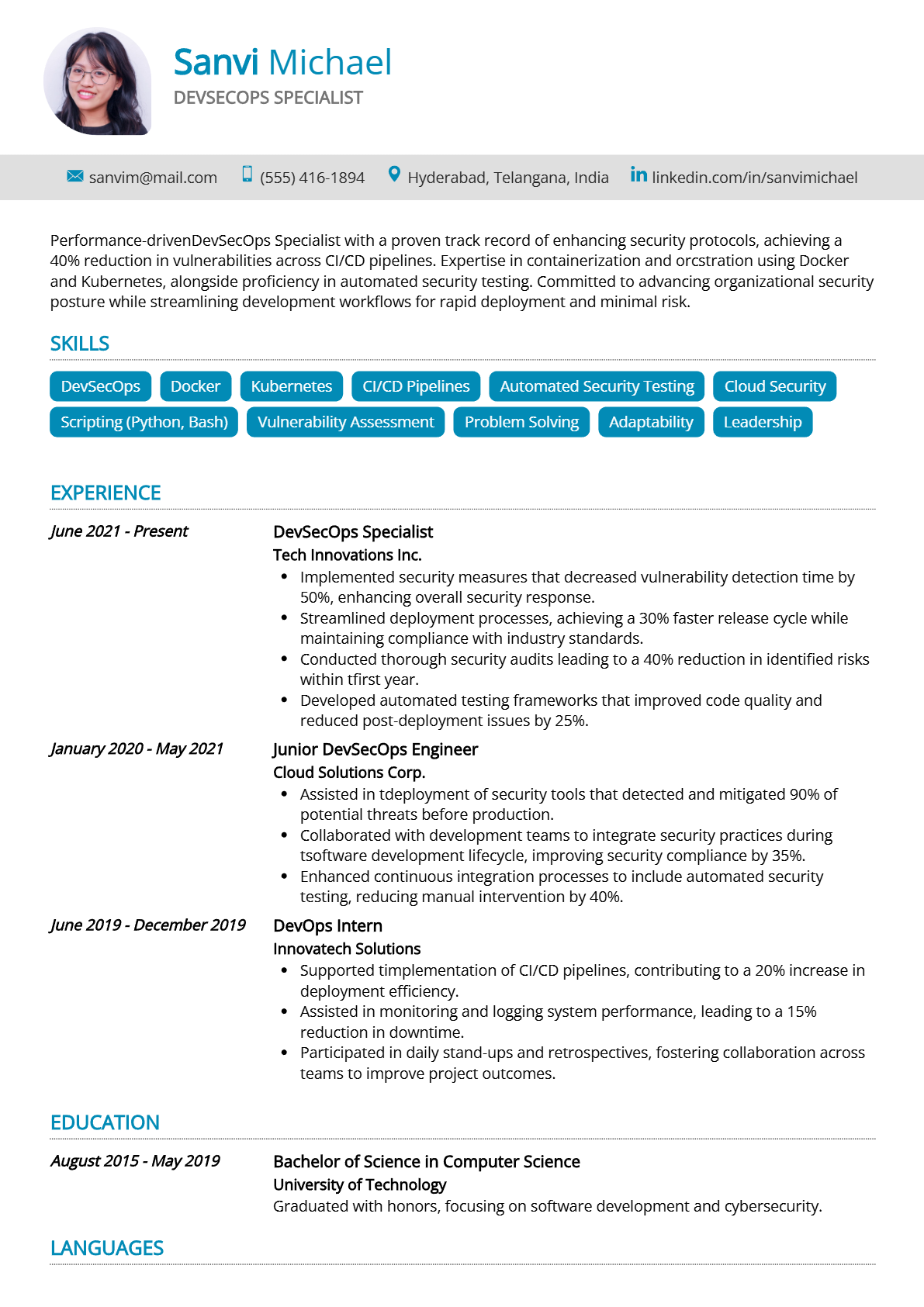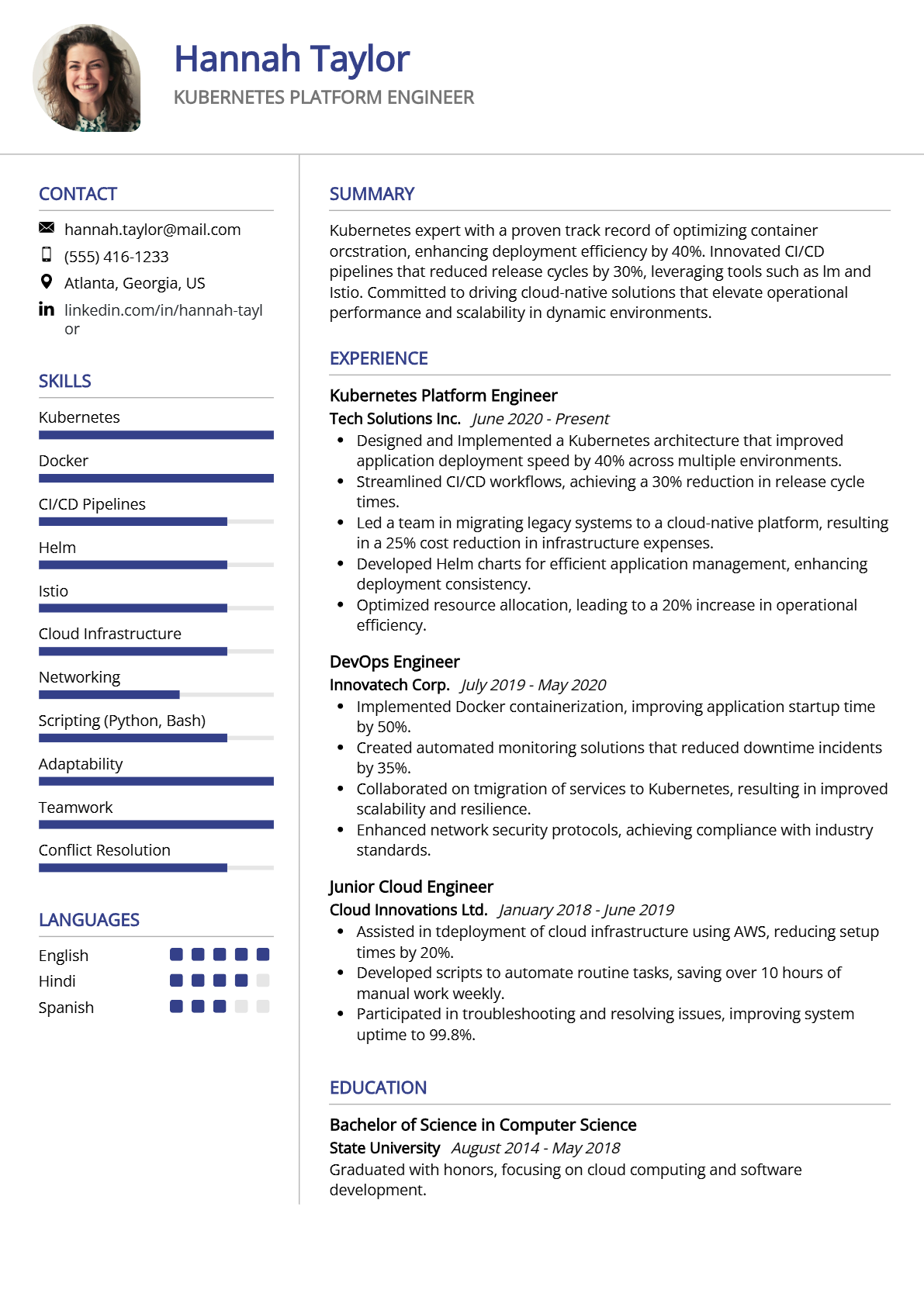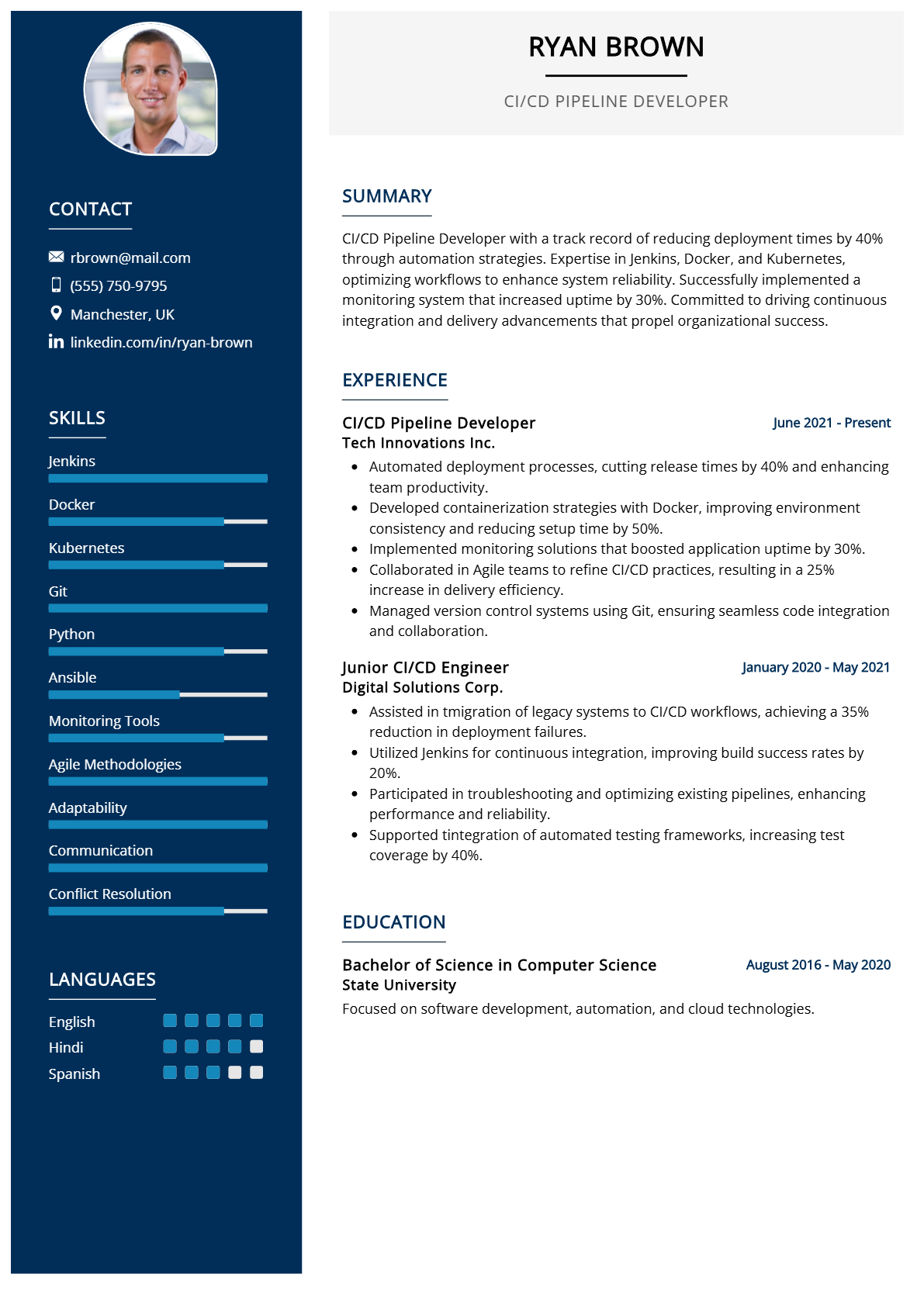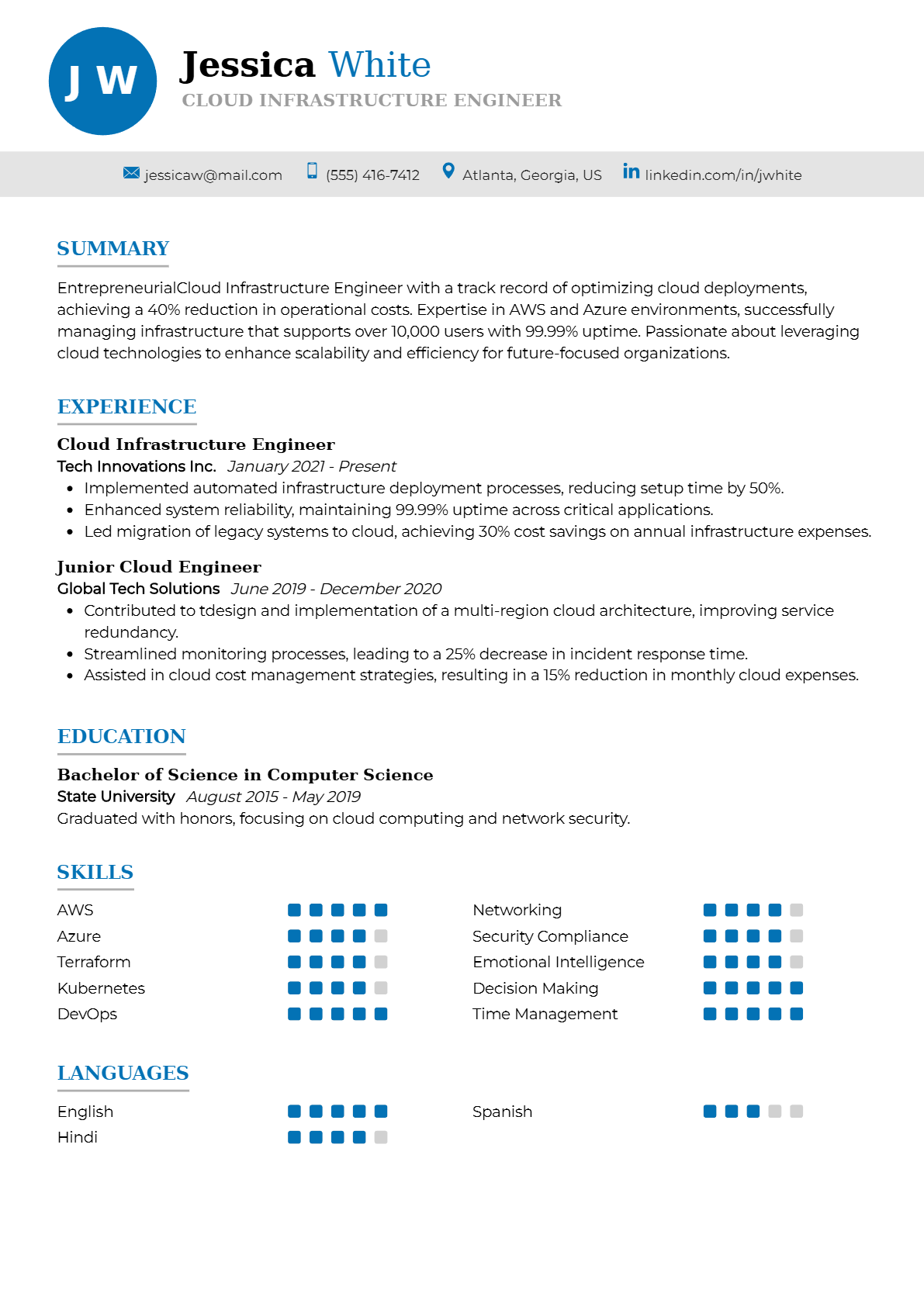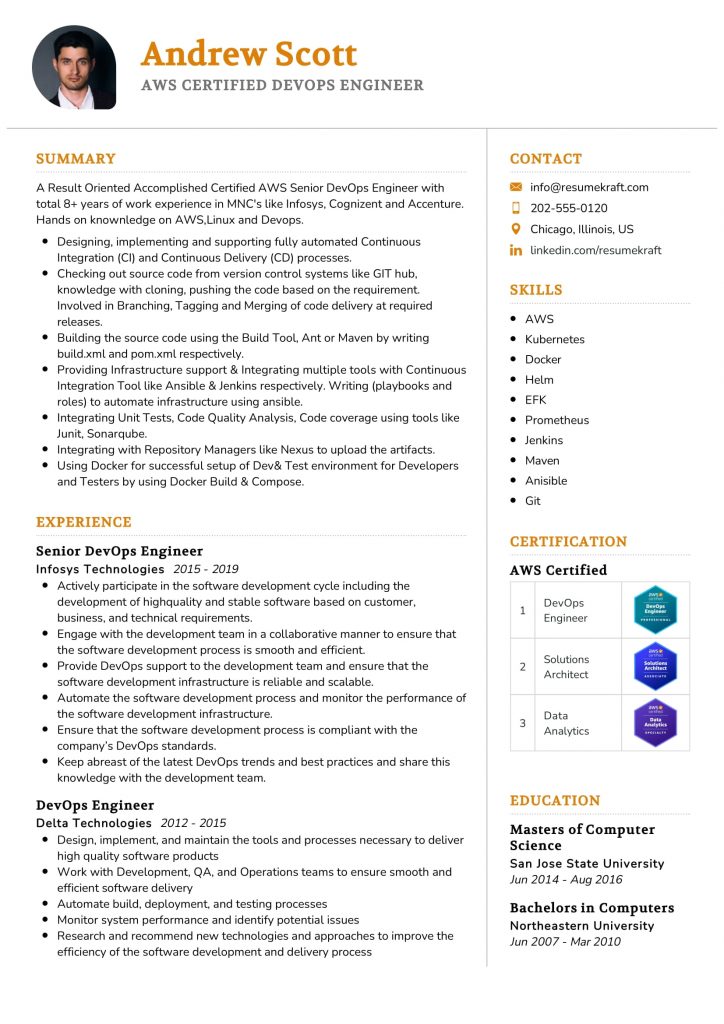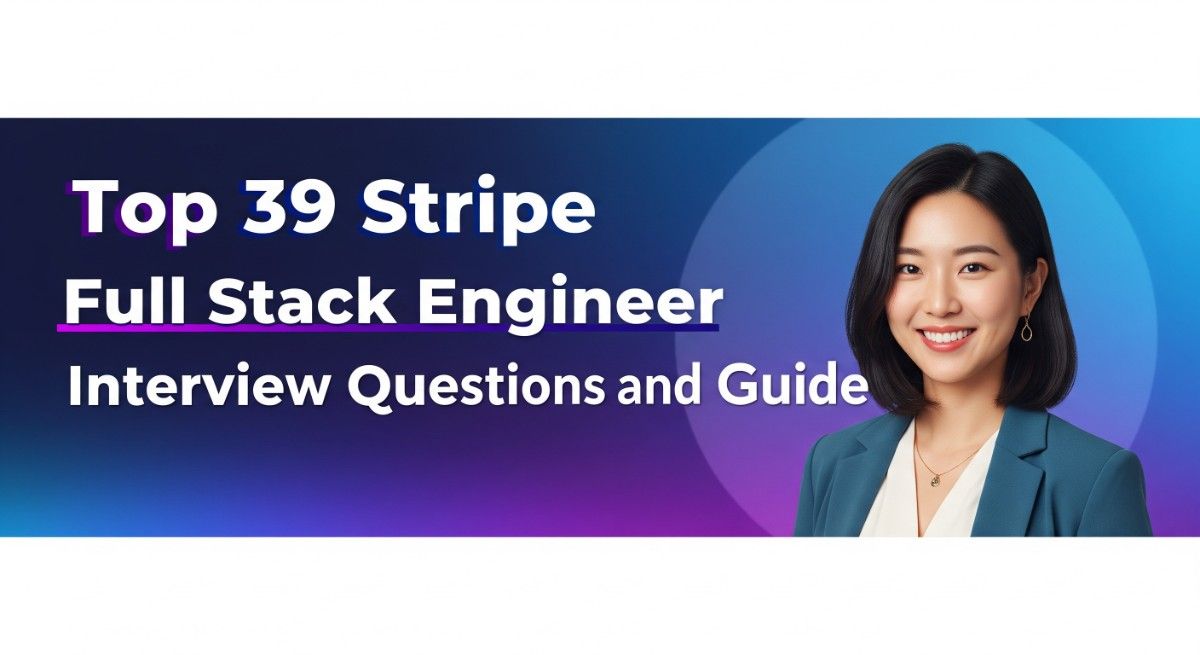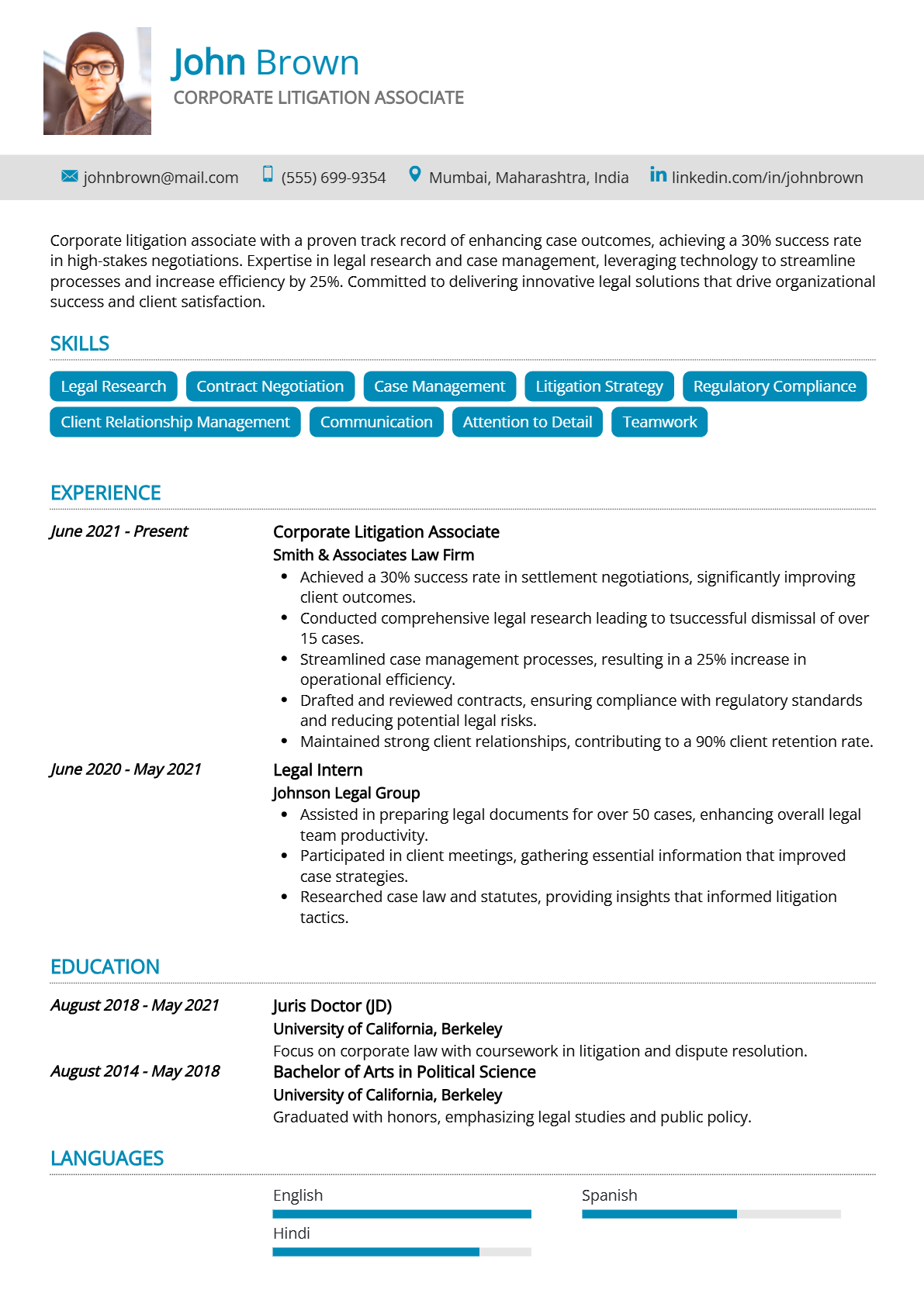
15 Attorney Resume Examples & Guide for 2025
The role of an Attorney is vital in today’s complex legal landscape, encompassing a range of responsibilities from providing legal counsel to representing clients in court. Attorneys work in various fields, including criminal law, corporate law, and family law, advocating for justice and ensuring the rule of law is upheld. In a world where legal challenges are increasingly prevalent, skilled Attorneys are essential for navigating the intricacies of the legal system. This article aims to guide aspiring Attorneys on how to craft an impactful resume that highlights their unique qualifications and experiences in this competitive job market.
- Attorney resume examples
- How to format a Attorney resume
- How to write your Attorney resume experience
- How to list your hard skills and soft skills on your resume
- How to list your certifications and education on your resume
- How to write your Attorney resume summary or objective
- Additional sections for a Attorney resume
- Key takeaways for writing a professional Attorney resume
- Frequently Asked Questions
Attorney resume examples
Attorney resume examples serve as valuable resources for job seekers looking to craft compelling resumes tailored to the legal profession. By analyzing these examples, candidates can gain insights into the essential skills, experiences, and formatting that resonate with hiring managers in law firms. Understanding what makes an effective attorney resume enables applicants to present their qualifications confidently and effectively, increasing their chances of securing interviews.
Junior Associate Attorney Resume

Why This Resume Works
This resume effectively positions the candidate for a Junior Associate Attorney role by highlighting essential skills such as legal research and contract negotiation, which are crucial in this field. The structured format ensures clarity and easy navigation, making it user-friendly for hiring managers. Additionally, its strategic use of industry-specific keywords enhances ATS compatibility, increasing visibility during the application process. By showcasing relevant achievements from both the professional experience and internship, the resume underscores the candidate’s preparedness and suitability for this position.
Senior Legal Counsel Resume
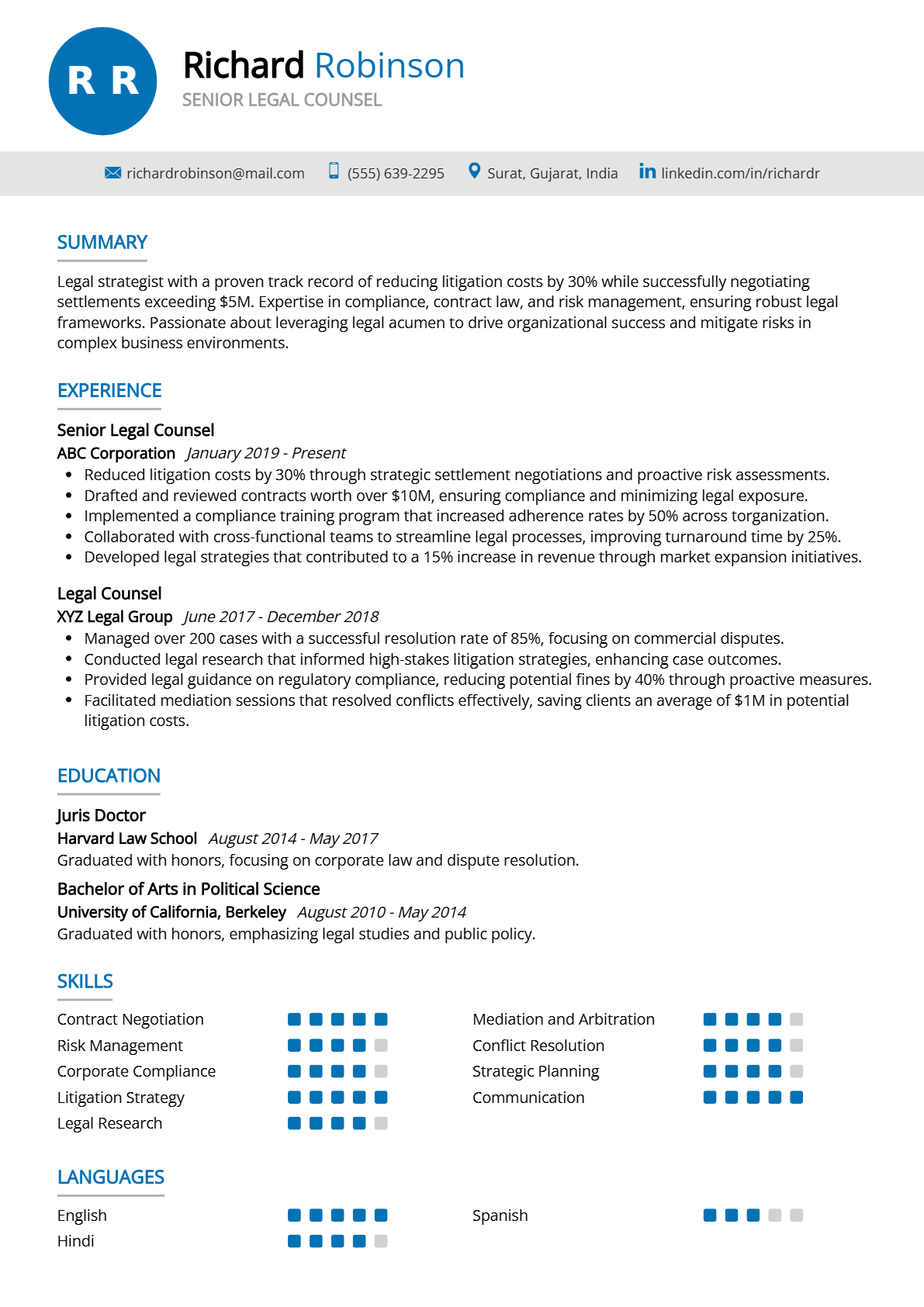
Why This Resume Works
This resume effectively highlights the candidate’s extensive experience as Senior Legal Counsel, focusing on key skills such as contract negotiation and risk management tailored for corporate environments. The structured format ensures clarity, facilitating quick assessment by hiring managers. By incorporating industry-specific keywords, it enhances ATS compatibility, increasing visibility in applicant tracking systems. Additionally, the strategic presentation of achievements demonstrates successful litigation strategies and compliance initiatives, showcasing the candidate’s ability to contribute significantly to organizational legal frameworks and business objectives.
Intellectual Property Attorney Resume
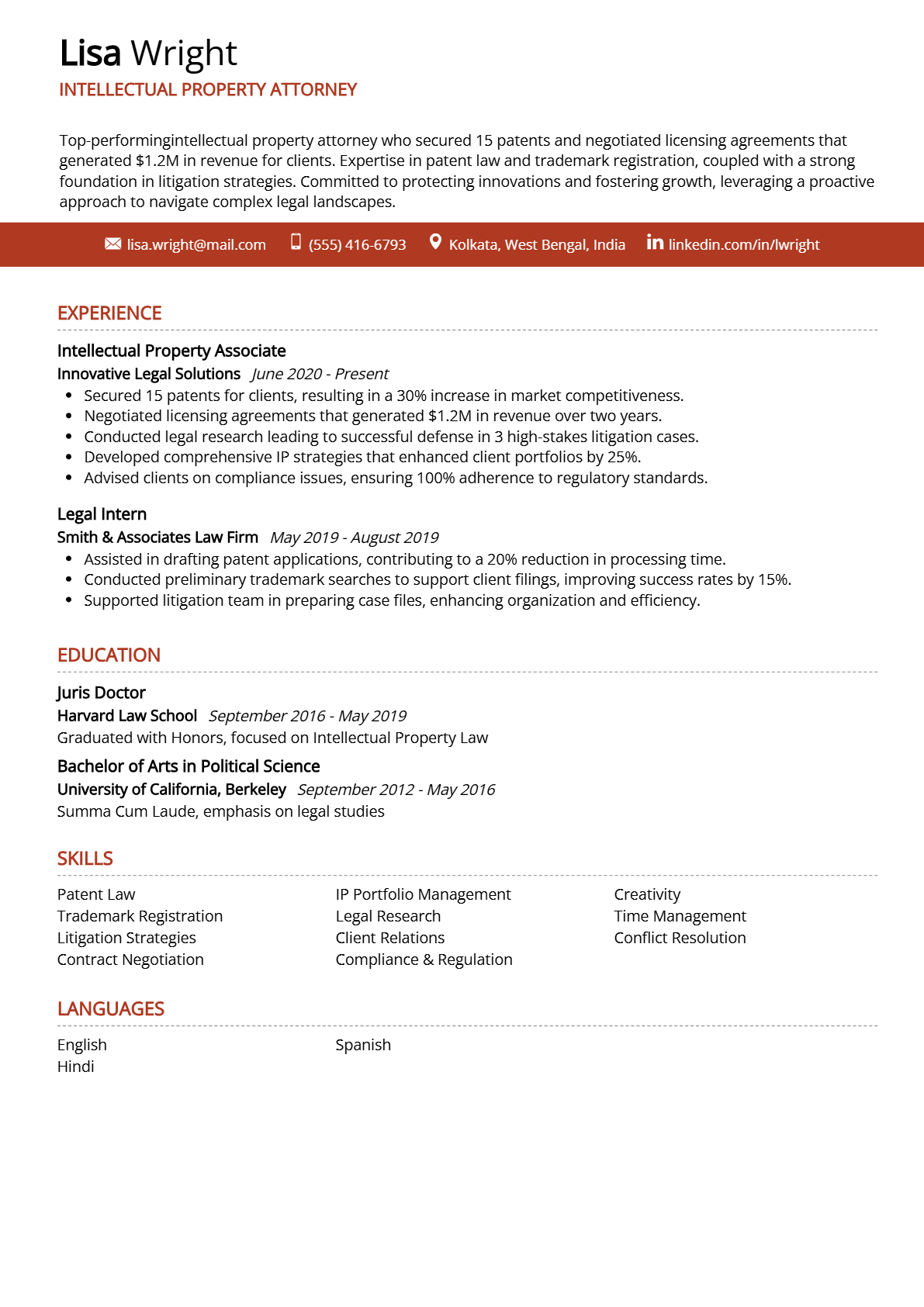
Why This Resume Works
This resume effectively highlights the candidate’s relevant skills in Patent Law, Trademark Registration, and IP Portfolio Management, making it well-suited for an Intellectual Property Attorney position. The structured format allows for easy navigation through key experiences, while strategic bullet points emphasize achievements that demonstrate expertise in litigation strategies and contract negotiation. Additionally, the inclusion of industry-specific keywords enhances ATS compatibility, ensuring the resume stands out to hiring managers looking for a qualified candidate with approximately five years of pertinent experience.
Paralegal with Intent to Become an Attorney Resume
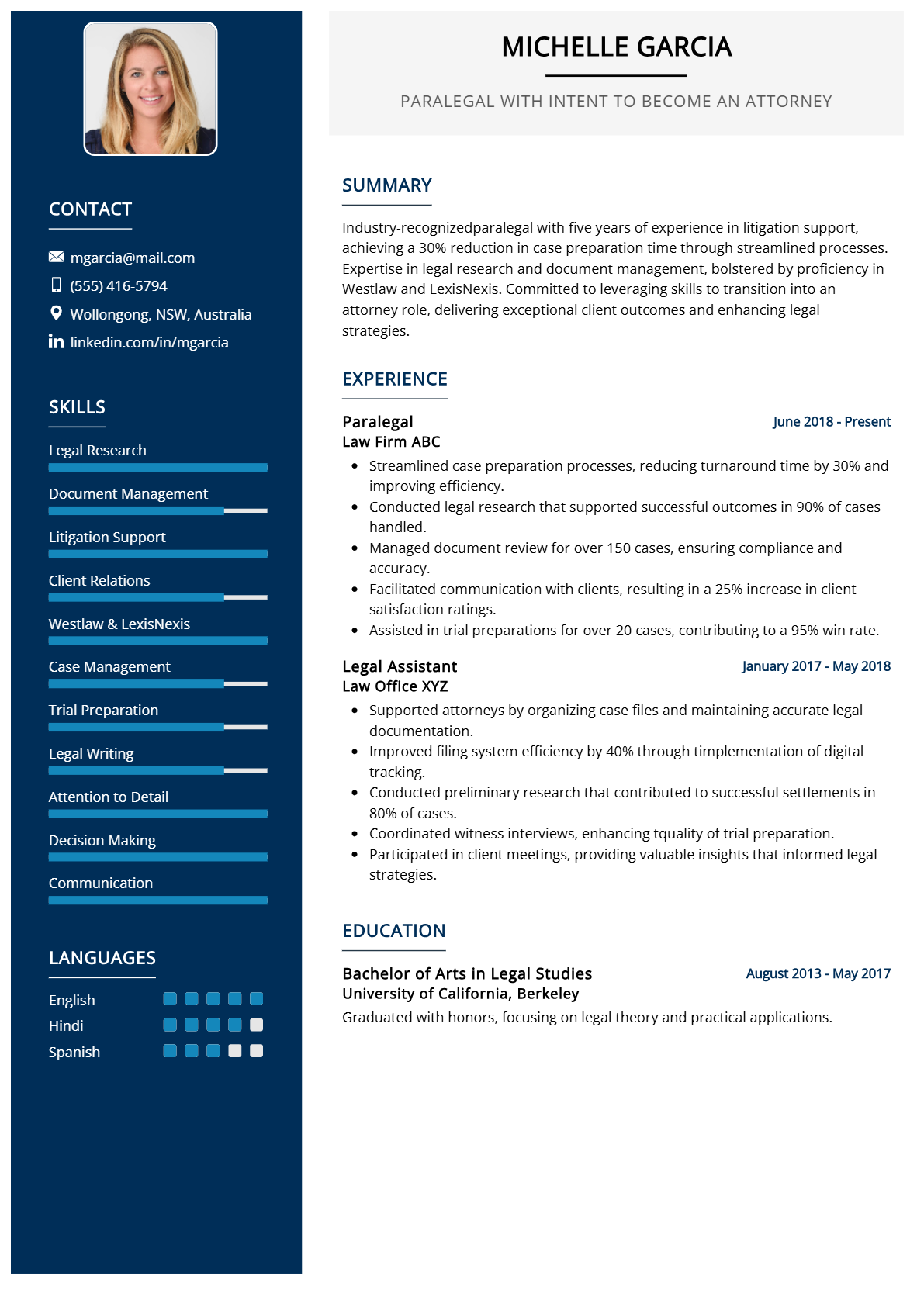
Why This Resume Works
This resume effectively highlights the candidate’s relevant skills and extensive experience as a paralegal, directly aligning with their intent to transition into an attorney role. The structured format emphasizes key skills like legal research and litigation support, essential for both positions. It incorporates industry-specific keywords, enhancing ATS compatibility and ensuring visibility to hiring managers. Additionally, the strategic presentation of achievements showcases their ability to manage complex cases and maintain client relations, demonstrating readiness for advanced legal responsibilities in an attorney capacity.
Corporate Litigation Associate Resume

Why This Resume Works
This resume effectively highlights the candidate’s key skills in legal research, contract negotiation, and litigation strategy, directly aligning with the requirements for a Corporate Litigation Associate position. The structured format emphasizes relevant experience, showcasing approximately five years in corporate litigation roles. Its ATS-friendly design ensures compatibility with industry standards by incorporating specific keywords. Additionally, strategic presentation of achievements demonstrates the candidate’s impact on case management and regulatory compliance, making them an attractive prospect for potential employers in this competitive field.
Environmental Law Attorney Resume
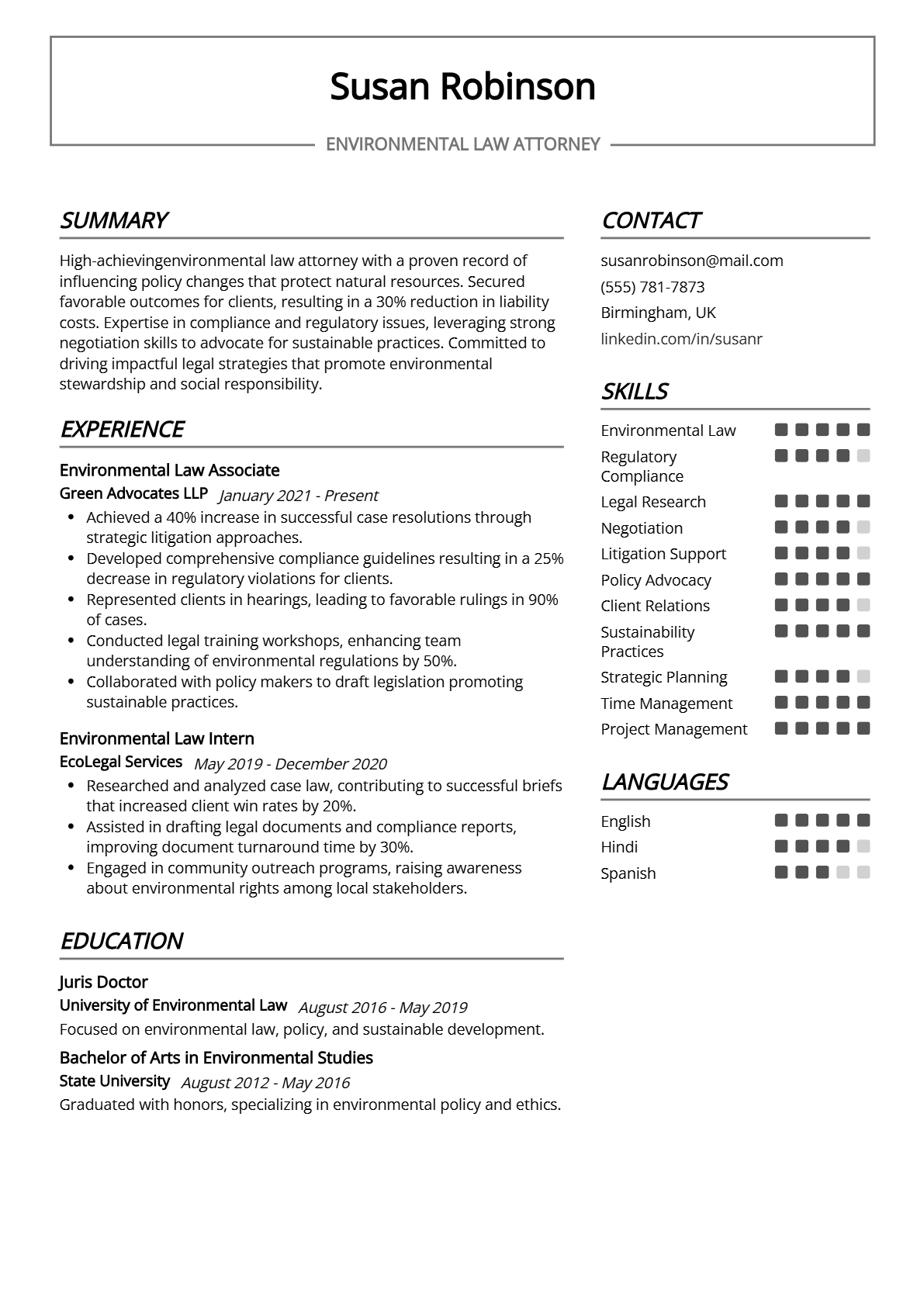
Why This Resume Works
This resume effectively positions the candidate as a strong Environmental Law Attorney by highlighting relevant skills such as Regulatory Compliance and Legal Research, crucial for the role. The structured format emphasizes experience in both an associate and intern capacity, showcasing a progressive career path that aligns with industry expectations. Additionally, the use of keywords ensures ATS compatibility, allowing for optimal visibility during the application process. Strategic presentation of achievements further underscores the candidate’s capability to impact environmental legal matters positively.
General Counsel Resume
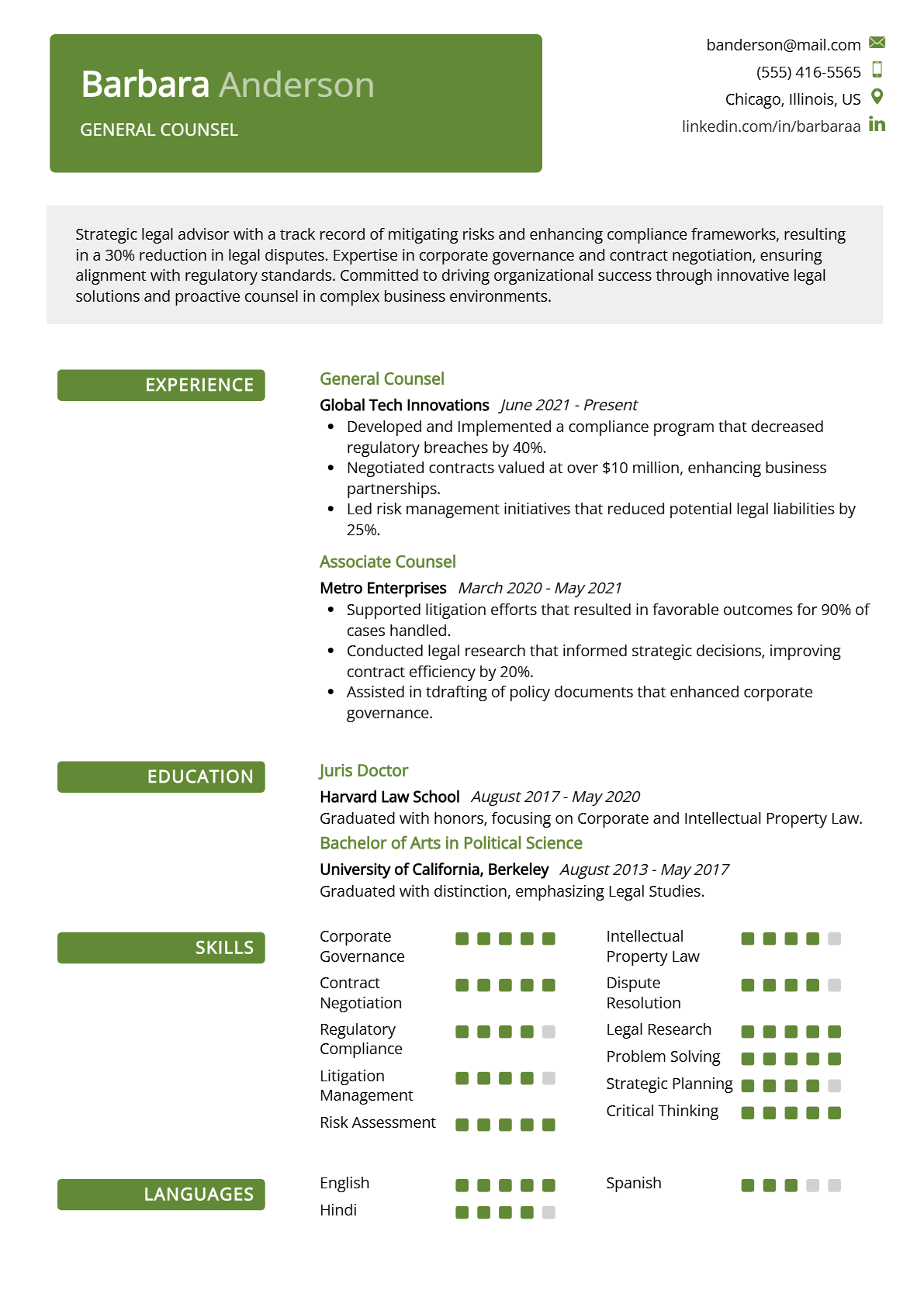
Why This Resume Works
This resume effectively showcases the candidate’s qualifications for a General Counsel position through a targeted emphasis on vital skills such as Corporate Governance and Regulatory Compliance. With five years of relevant experience, the structured format highlights key achievements in Contract Negotiation and Litigation Management, making it easy for hiring managers to assess suitability. Additionally, the use of industry-specific keywords enhances ATS compatibility, ensuring visibility during initial screenings. Overall, this strategic presentation aligns with the expectations and requirements of top legal roles.
Managing Partner Resume
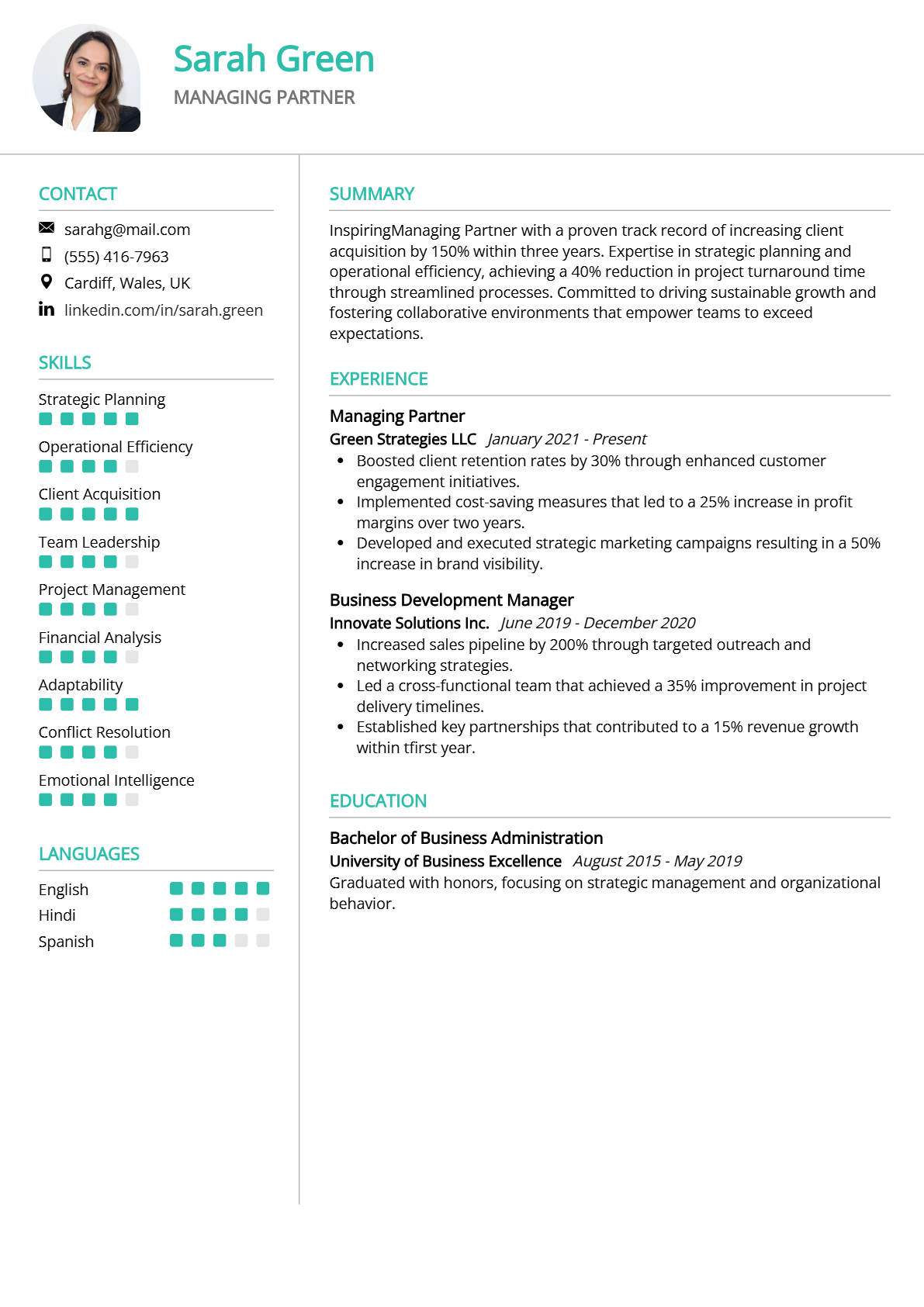
Why This Resume Works
This resume effectively highlights the candidate’s qualifications for a Managing Partner position by showcasing key skills such as Strategic Planning and Team Leadership, essential for driving growth and managing teams. The structured format allows for easy navigation, emphasizing relevant experience in both managing partnerships and business development. Its ATS-friendly design incorporates industry-specific keywords, enhancing visibility during digital screenings. Additionally, strategic presentation of achievements underscores quantifiable successes in client acquisition and operational efficiency, aligning perfectly with the expectations of this role.
Deputy General Counsel Resume
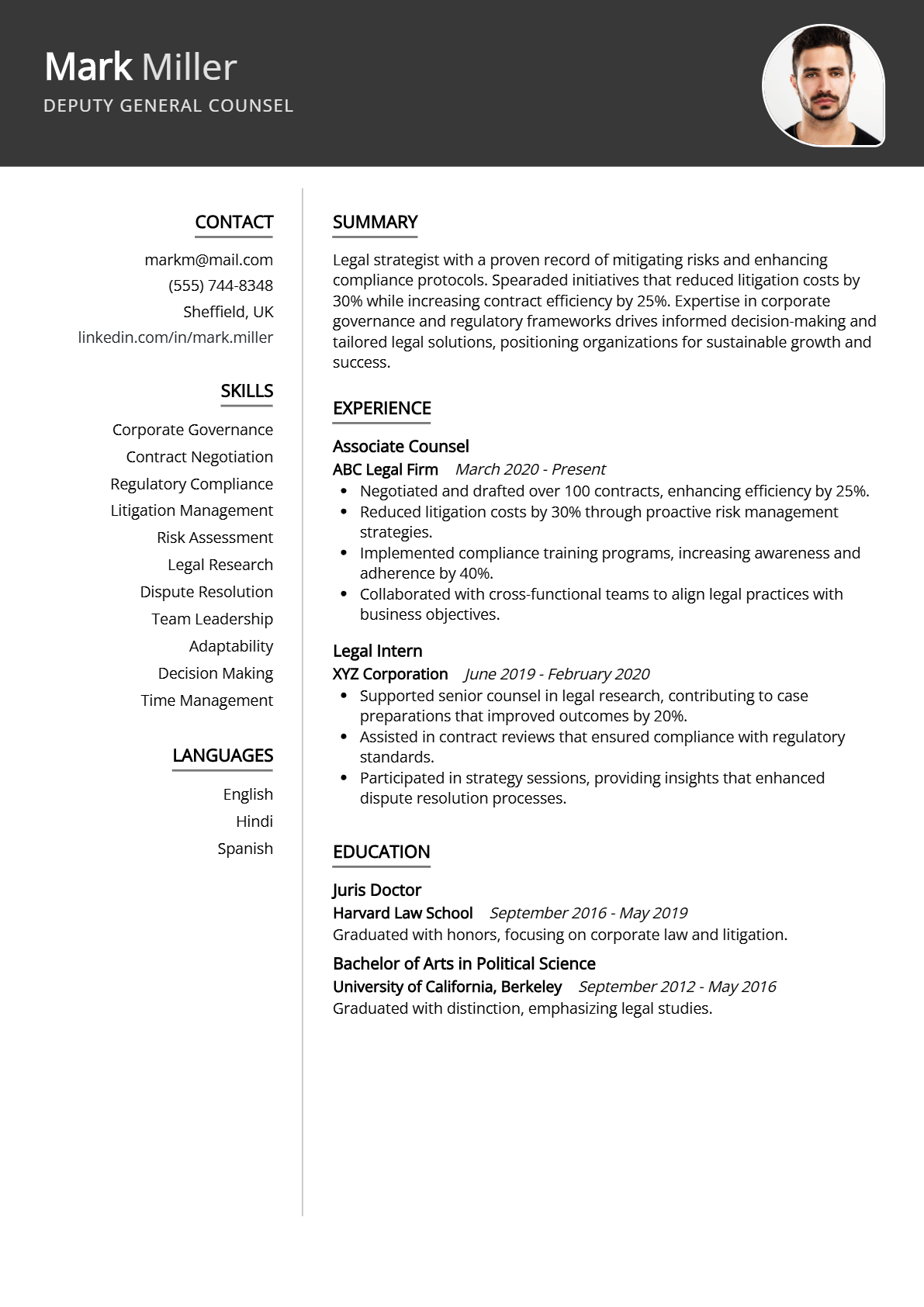
Why This Resume Works
This resume effectively targets the Deputy General Counsel position by showcasing essential skills such as Corporate Governance, Contract Negotiation, and Litigation Management, directly relevant to the role. Its clear structure highlights six years of progressive legal experience, enhancing credibility. The format is ATS-compatible, featuring industry-specific keywords that ensure visibility in automated screenings. Additionally, strategic presentation of achievements demonstrates quantifiable impacts in previous roles, reinforcing the candidate’s capability to manage complex legal challenges and support organizational objectives effectively.
Tax Attorney Resume
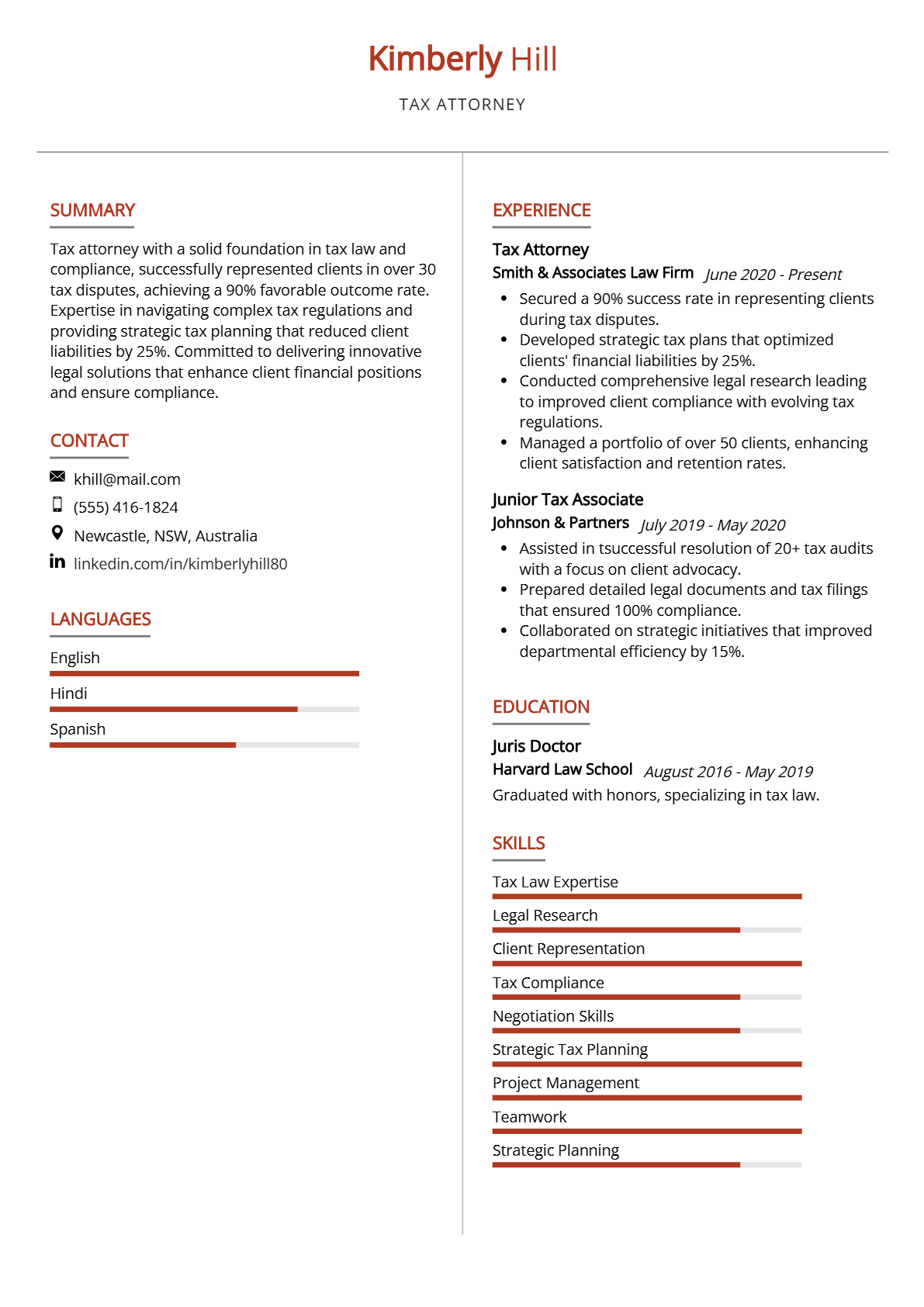
Why This Resume Works
This resume effectively highlights the candidate’s extensive experience and specialized skills as a Tax Attorney, showcasing six years of relevant roles that demonstrate tax law expertise, legal research capabilities, and strong client representation. The clear and structured format emphasizes key competencies like negotiation skills and tax compliance, ensuring easy readability for hiring managers. Additionally, it incorporates industry-specific keywords for ATS compatibility, while strategically presenting achievements that resonate with potential employers in tax law, making it highly compelling for this position.
Antitrust and Competition Lawyer Resume
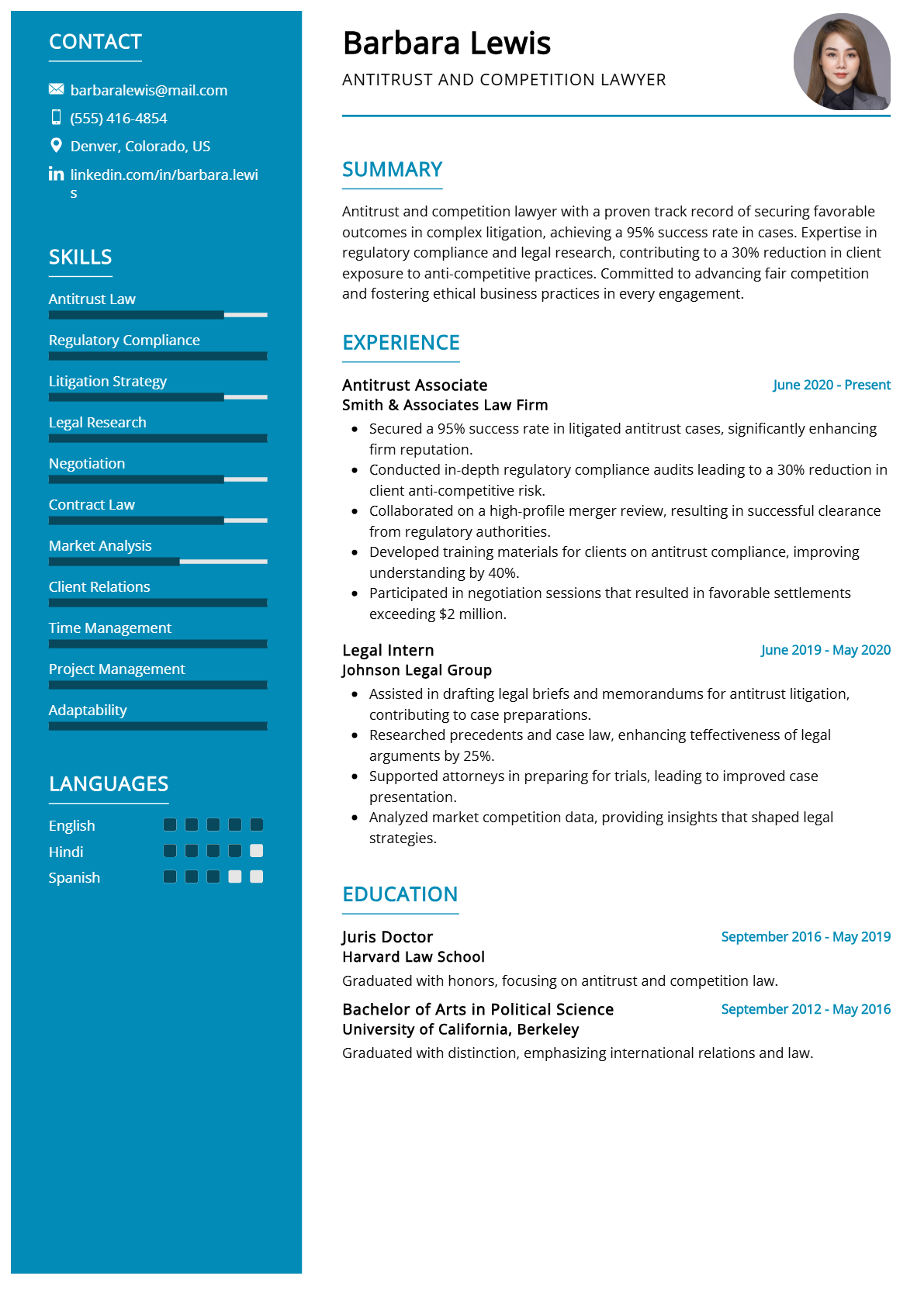
Why This Resume Works
This resume effectively showcases the candidate’s suitability for an Antitrust and Competition Lawyer position through a focused presentation of relevant skills, such as Antitrust Law and Regulatory Compliance. With approximately six years of targeted experience as an Antitrust Associate and Legal Intern, it highlights practical expertise in litigation strategy and negotiation. The structured format enhances readability, ensuring ATS compatibility by incorporating industry-specific keywords. Additionally, strategic achievements emphasize the candidate’s success in complex cases, making them a compelling choice for potential employers in this field.
Real Estate Transactions Attorney Resume
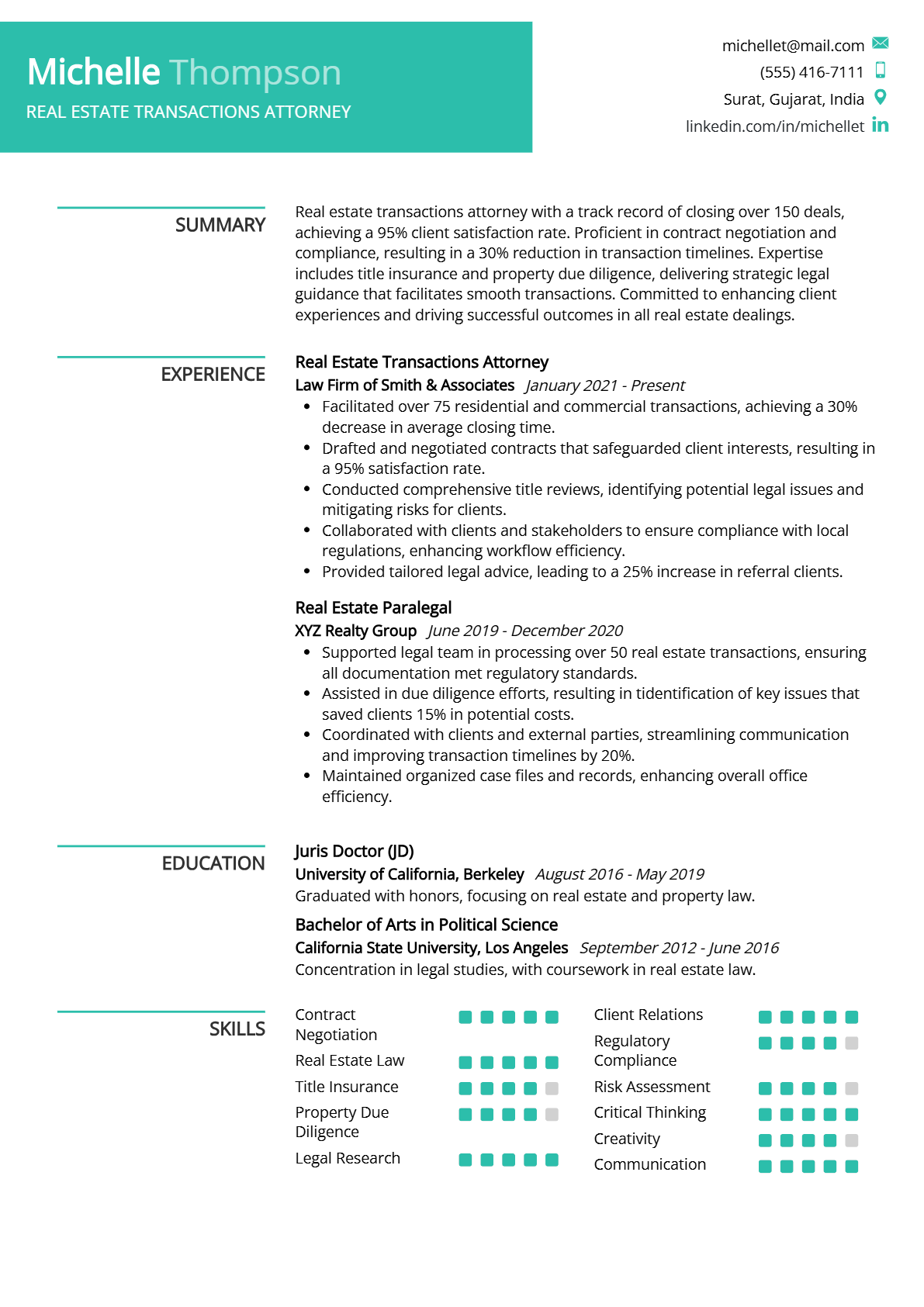
Why This Resume Works
This resume effectively highlights the candidate’s specialized skills in contract negotiation and real estate law, aligning perfectly with the requirements of a Real Estate Transactions Attorney. With five years of relevant experience as both an attorney and paralegal, it demonstrates a comprehensive understanding of property due diligence and title insurance. The clear, structured format enhances readability, while strategic keyword use ensures ATS compatibility. Additionally, presenting quantifiable achievements related to successful transactions showcases the candidate’s impact in the field, further strengthening their application.
Healthcare Compliance Attorney Resume
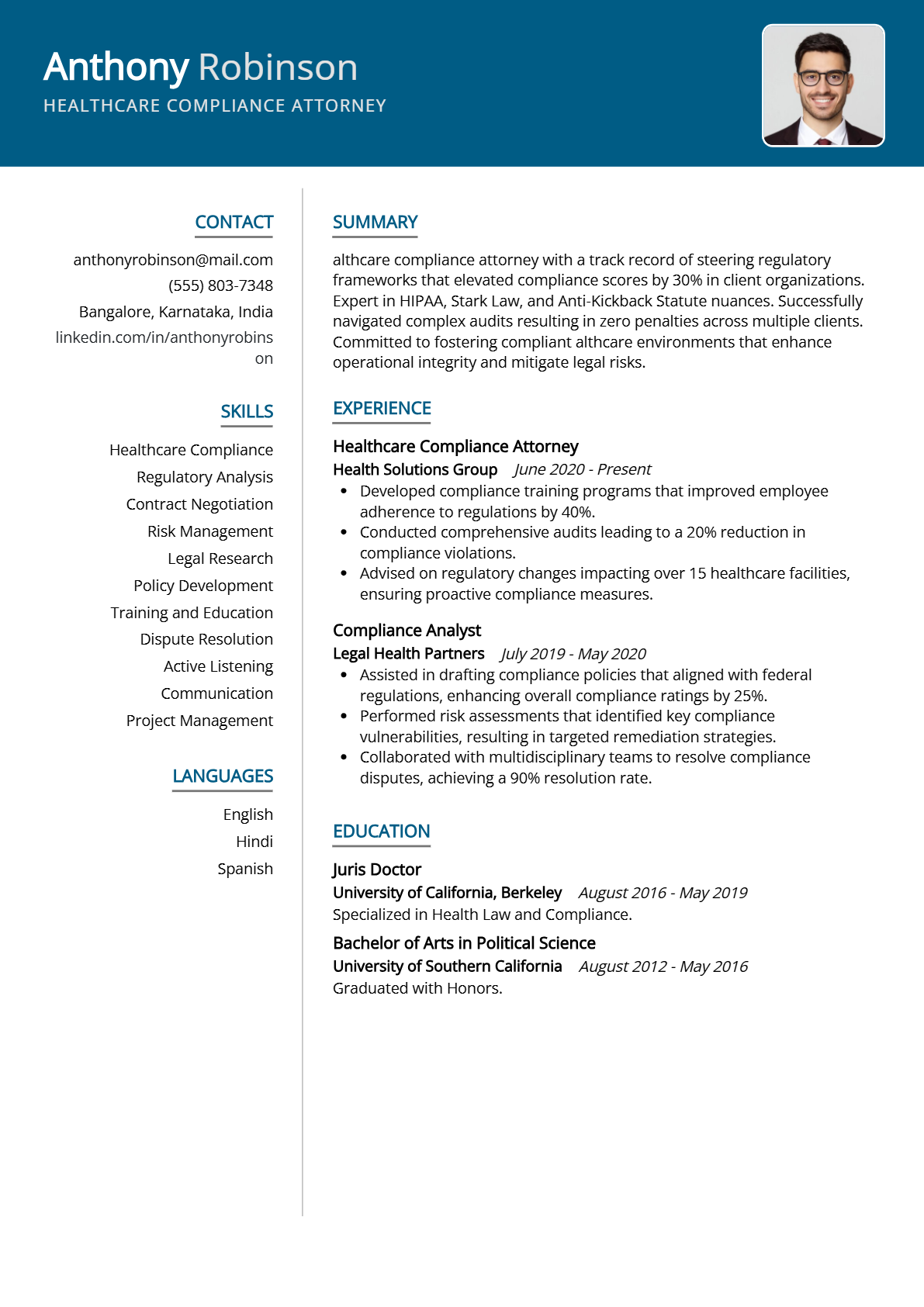
Why This Resume Works
This resume effectively showcases the candidate’s qualifications for a Healthcare Compliance Attorney position by highlighting relevant skills such as healthcare compliance, regulatory analysis, and contract negotiation. With approximately six years of experience in both roles, it emphasizes expertise in risk management and legal research. The structured format enhances readability, ensuring that key information stands out to hiring managers. Additionally, the use of industry-specific keywords supports ATS compatibility, while strategically presented achievements demonstrate the candidate’s impactful contributions within the healthcare compliance field.
International Trade Counsel Resume
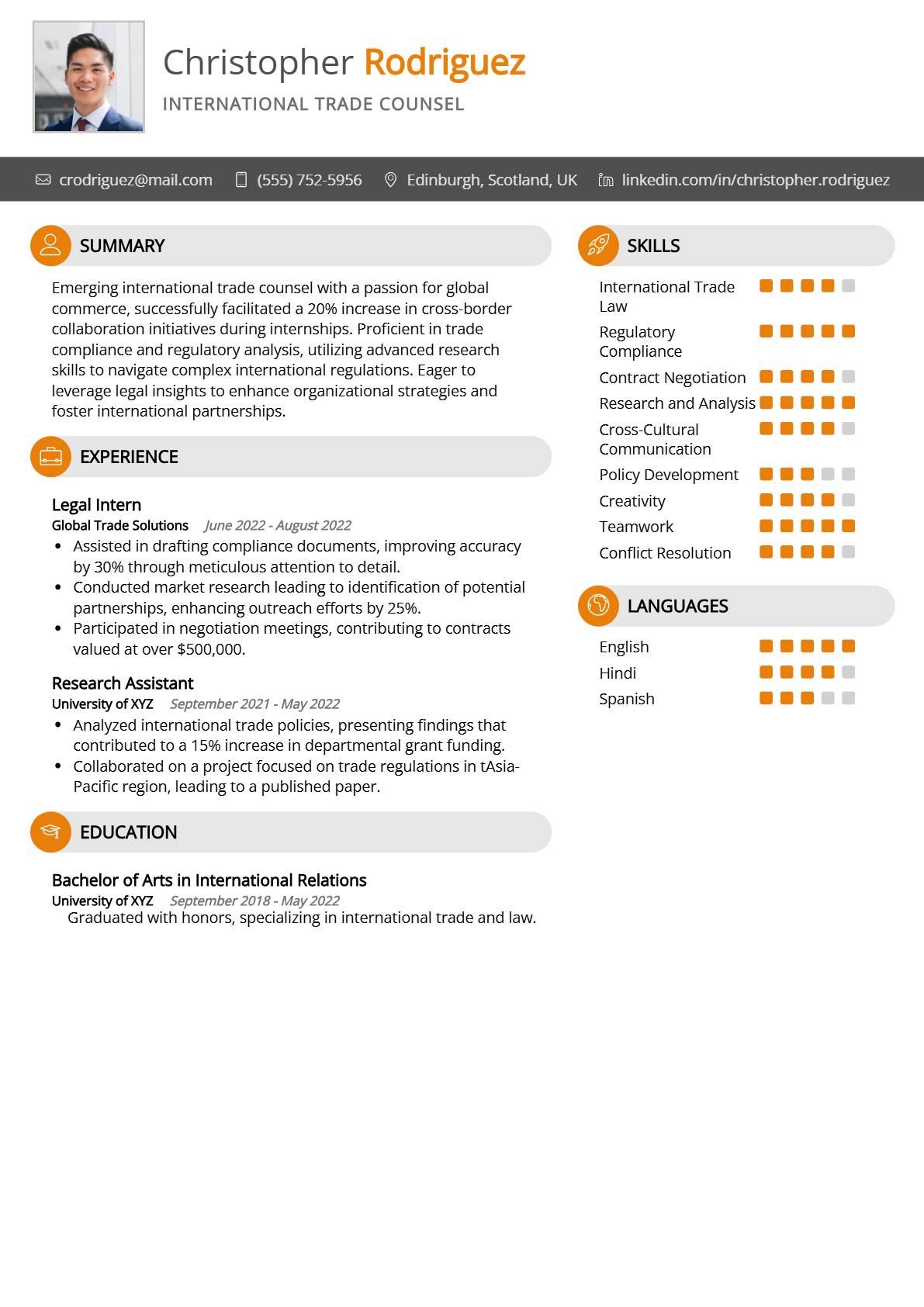
Why This Resume Works
This resume effectively highlights the candidate’s relevant skills and experience for the International Trade Counsel position, showcasing expertise in International Trade Law and Regulatory Compliance. The structured format emphasizes key competencies like Contract Negotiation and Cross-Cultural Communication, making it easy to read. Optimized for ATS compatibility, it incorporates industry-specific keywords. Additionally, the strategic presentation of achievements from their internships demonstrates practical application of research and analysis skills, which are crucial in navigating complex trade regulations and fostering international relations.
Privacy and Data Protection Lawyer Resume
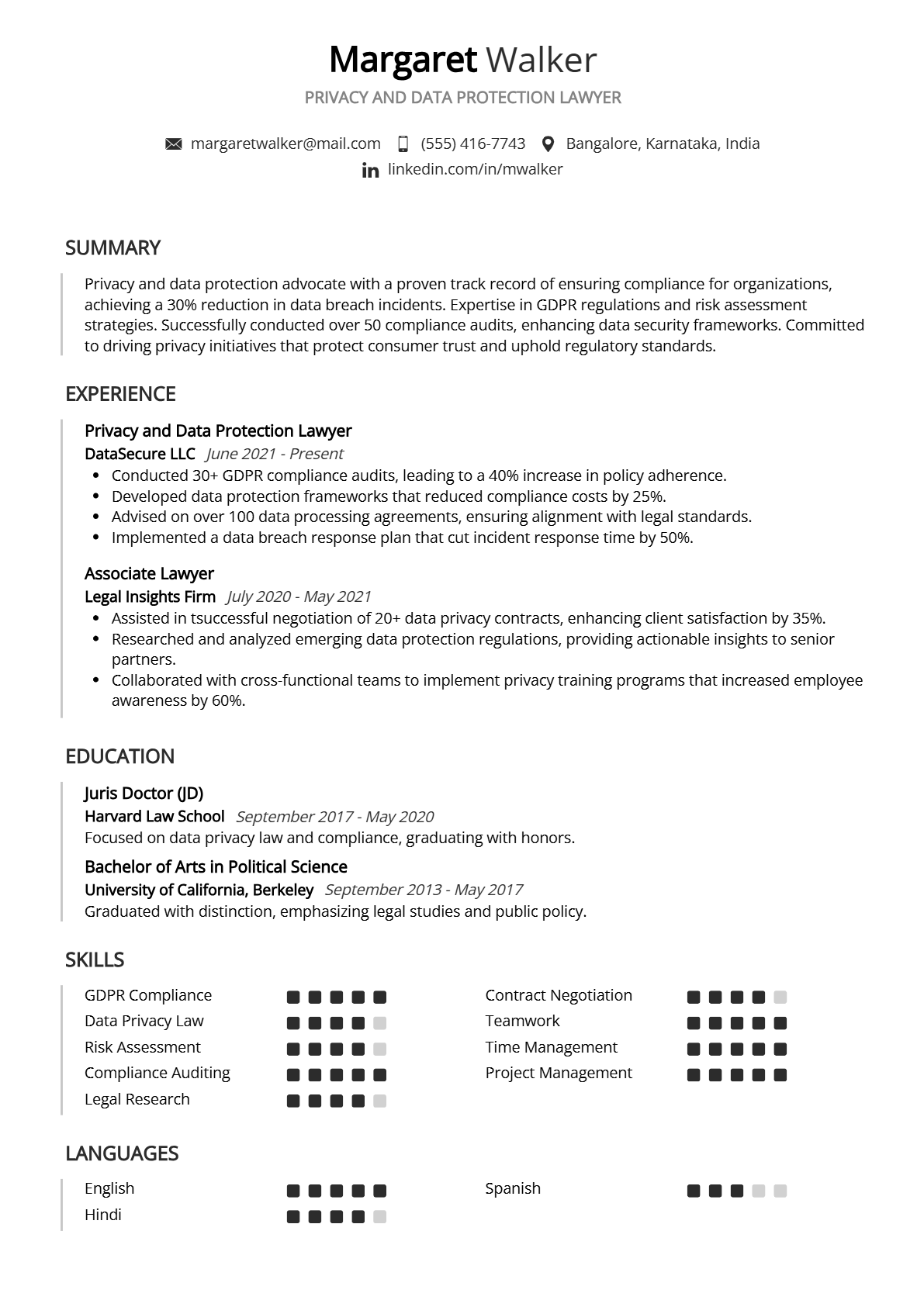
Why This Resume Works
This resume effectively highlights the candidate’s expertise in GDPR compliance and data privacy law, crucial for a Privacy and Data Protection Lawyer. With five years of relevant experience as a Privacy and Data Protection Lawyer and Associate Lawyer, it demonstrates a solid foundation in legal research and risk assessment. The structured format enhances readability, while ATS-friendly keywords ensure compatibility with industry standards. Strategic presentation of achievements further emphasizes the candidate’s ability to navigate complex compliance challenges, making them an ideal fit for the role.
How to format a Attorney resume
Proper formatting is crucial for an Attorney resume as it enhances readability and professionalism, allowing hiring managers to quickly identify key qualifications. A well-structured resume format can set you apart in a competitive legal job market.
- Use a clean, professional font like Times New Roman or Arial in 10-12 point size to ensure clarity and readability, maintaining a polished appearance throughout your resume.
- Organize your resume with clear sections such as Education, Experience, and Skills, using bold headings for each to help recruiters navigate the document effortlessly.
- Keep margins at 1 inch and use bullet points for listing responsibilities and achievements, allowing for an easy scan of important information without overwhelming the reader.
- Prioritize your most relevant experience by placing it at the top of each section, ensuring that your most significant qualifications catch the attention of hiring managers immediately.
- Limit your resume to one page if you have less than 10 years of experience; this concise format forces you to focus on the most impactful information relevant to the attorney position.
How to write your Attorney resume experience
Effectively presenting work experience on an Attorney resume is crucial, as this section showcases your legal expertise and practical application of skills. Employers seek candidates who can demonstrate a strong track record in various legal matters, highlighting their ability to manage cases, negotiate settlements, and provide sound legal advice.
To make a strong impression, focus on specific achievements and quantifiable results that reflect your contributions to previous roles. This will not only illustrate your capabilities but also show how you can add value to a potential employer’s legal team.
Worked on various cases and assisted senior attorneys with legal documents and research.
Successfully represented 15 clients in civil litigation, achieving a 90% success rate in trial outcomes and drafting over 50 comprehensive legal documents that streamlined case preparation.
How to list your hard skills and soft skills on your resume
In the competitive field of law, an attorney’s resume must effectively showcase both hard and soft skills. Hard skills such as legal research and negotiation are essential for performing technical tasks, while soft skills like communication and empathy are crucial for client interactions and courtroom presentations. Balancing these skills highlights a candidate’s comprehensive capability to not only understand the law but also to navigate the interpersonal aspects of legal work.
Hard Skills:
- Legal Research: Proficient in analyzing case law and statutes to support legal arguments.
- Contract Drafting: Skilled in creating and reviewing contracts to ensure legal compliance.
- Litigation Strategy: Ability to develop effective strategies for trial preparation and execution.
- Negotiation: Expertise in negotiating settlements and agreements to benefit clients.
- Regulatory Compliance: Knowledgeable in ensuring adherence to laws and regulations.
- Intellectual Property Law: Familiar with the complexities of protecting intellectual property rights.
- Case Management: Experienced in organizing and managing multiple cases efficiently.
- Evidence Analysis: Competent in evaluating and interpreting evidence for legal cases.
- Legal Writing: Strong ability to produce clear and persuasive legal documents.
- Client Consultation: Proficient in advising clients on legal rights and obligations.
- Trial Advocacy: Skilled in presenting cases effectively in court settings.
- Mediation: Experience in facilitating dispute resolution between parties.
- Due Diligence: Capable of conducting thorough investigations for legal transactions.
- Litigation Technology: Familiar with tools and software used in legal research and case management.
- Public Speaking: Effective in delivering arguments and presentations in court and public forums.
Soft Skills:
- Communication: Excellent verbal and written communication skills for clear client interaction.
- Empathy: Ability to understand and relate to clients’ emotional and personal situations.
- Analytical Thinking: Strong critical thinking skills to evaluate complex legal issues.
- Time Management: Efficient in prioritizing tasks and meeting tight deadlines.
- Problem Solving: Skilled in identifying legal problems and developing effective solutions.
- Teamwork: Ability to collaborate effectively with colleagues and clients.
- Attention to Detail: Meticulous in reviewing documents and preparing legal briefs.
- Persuasion: Capable of convincing judges or juries through compelling arguments.
- Adaptability: Flexible in adjusting strategies based on changing legal landscapes.
- Confidentiality: Committed to maintaining client privacy and handling sensitive information.
- Negotiation Skills: Proficient in finding mutually beneficial solutions during negotiations.
- Interpersonal Skills: Strong ability to build rapport and trust with clients and colleagues.
- Leadership: Capable of leading legal teams and guiding junior attorneys.
- Critical Listening: Attentive in listening to clients’ concerns and arguments effectively.
- Stress Management: Able to maintain composure and focus under high-pressure situations.
How to list your certifications and education on your resume
When presenting certifications and education on an Attorney resume, it is crucial to be clear and concise. Start with your most relevant qualifications, such as your Juris Doctor (JD) degree from an accredited law school, followed by any additional certifications, like passing the bar exam in your respective state. Include the year of graduation and any honors received, as these can enhance your credibility.
Additionally, if you have specialized certifications, such as in family law or intellectual property, make sure to highlight those as they demonstrate your expertise in specific areas of law. Always format this section in reverse chronological order to showcase your most recent accomplishments first, making it easier for hiring managers to assess your qualifications quickly.
Went to law school and got a degree. Also passed the bar exam.
Juris Doctor, Harvard Law School, 2020; Passed California Bar Exam, 2021; Certified in Family Law by the State Bar.
How to write your Attorney resume summary or objective
A strong resume summary or objective is crucial for an attorney position as it provides a snapshot of your qualifications, skills, and career goals. This section quickly captures the attention of hiring managers, helping them to understand your professional identity and what you bring to the table. You should use a summary when you have significant experience to highlight, while an objective statement is more suitable for entry-level candidates or those changing careers, focusing on what you hope to achieve in the role.
Seeking a position in a law firm where I can use my skills and gain experience.
Detail-oriented attorney with 5 years of experience in corporate law, seeking to leverage expertise in contract negotiation and compliance to support clients at XYZ Law Firm.
Additional sections for a Attorney resume
Including additional sections in your Attorney resume can significantly enhance your candidacy by showcasing your unique skills, experiences, and accomplishments. These sections can highlight relevant qualifications that set you apart from other candidates in the competitive legal field.
- Publications: Listing articles or papers you’ve authored demonstrates your expertise and thought leadership in specific legal areas, making you a credible candidate who contributes to the legal community.
- Professional Affiliations: Memberships in legal associations or bar groups indicate your commitment to the profession and provide networking opportunities, showcasing your dedication to staying informed on legal developments.
- Continuing Education: Including relevant courses or certifications highlights your initiative in professional development, showing potential employers that you are committed to enhancing your legal knowledge and skills.
- Volunteer Experience: Highlighting pro bono work or involvement in legal aid organizations reflects your dedication to social justice and community service, which can resonate with firms that value corporate social responsibility.
- Awards and Honors: Listing accolades received for your work, such as scholarships or recognition from legal organizations, demonstrates your excellence and can make your resume stand out to hiring managers.
Key takeaways for writing a professional Attorney resume
- Highlight specific legal expertise by detailing your practice areas, such as corporate law or criminal defense, to showcase your qualifications effectively to potential employers.
- Quantify your achievements by including metrics, like the number of cases won or settlements reached, to demonstrate your impact and success in previous roles.
- Use professional resume templates that align with legal industry standards to ensure your resume is visually appealing and easy to read for hiring managers.
- Incorporate keywords from the job description, as an ai resume builder can help tailor your resume to match the specific needs of the position.
- Focus on your education, certifications, and bar admissions prominently, as these are critical components that validate your qualifications as an attorney.
Frequently Asked Questions
How long should my Attorney resume be?
Your Attorney resume should ideally be one page, especially if you have less than 10 years of experience. However, if you have extensive experience, a two-page resume may be acceptable. Focus on making every word count by including relevant legal experiences, achievements, and skills. Ensure that your resume is concise and easy to read, as hiring managers often have limited time to review each application. Prioritize clarity and impact over length.
What is the best format for a Attorney resume?
The best format for an Attorney resume is the reverse-chronological format. This structure highlights your most recent experience first, making it easy for hiring managers to see your latest legal roles and achievements. Use clear headings for sections like Education, Experience, and Skills. Additionally, ensure that your resume is well-organized and visually appealing, utilizing bullet points for easier readability while maintaining professional formatting throughout.
What should I highlight on my Attorney resume to stand out?
To stand out, highlight specific legal expertise relevant to the position you are applying for, such as areas of law you specialize in. Include notable achievements, such as successful case outcomes, settlements, or any awards received. Emphasize your communication skills, negotiation tactics, and any leadership roles you’ve held, as these are crucial in the legal field. Tailor your resume to the job description, showcasing how your unique qualifications align with the firm’s needs.
What are some ways to quantify my experience on my Attorney resume?
Quantifying your experience can significantly enhance your resume’s impact. Use numbers to specify the number of cases you’ve handled, percentage of successful outcomes, or the amount of money saved or awarded to clients. Highlight your caseload size, the duration of your legal practice, and any financial implications of your work. For instance, “Successfully litigated 15 cases resulting in a 90% win rate” provides concrete evidence of your capabilities and reinforces your effectiveness as an attorney.

